Discover The Red Sea - Visit Red Sea


Welcome to The Red Sea
Beyond expectations, explore a hidden world of wonder.
Explore a hidden world of wonder off the Saudi Arabian coast. Let the journey flow into an emerald archipelago. Over shores of white sand. Across lunar landscapes and dormant volcanoes. You'll find us where luxury and nature meet.

EID PROMOTIONS
Escape the ordinary and enjoy an unforgettable eid.
Celebrate Eid in ultimate style with a luxury escape to the mesmerizing tranquility of The Red Sea. Reconnect with loved ones through our special offer: two nights of transformational experiences at the stunning Six Senses Southern Dunes, The Red Sea.
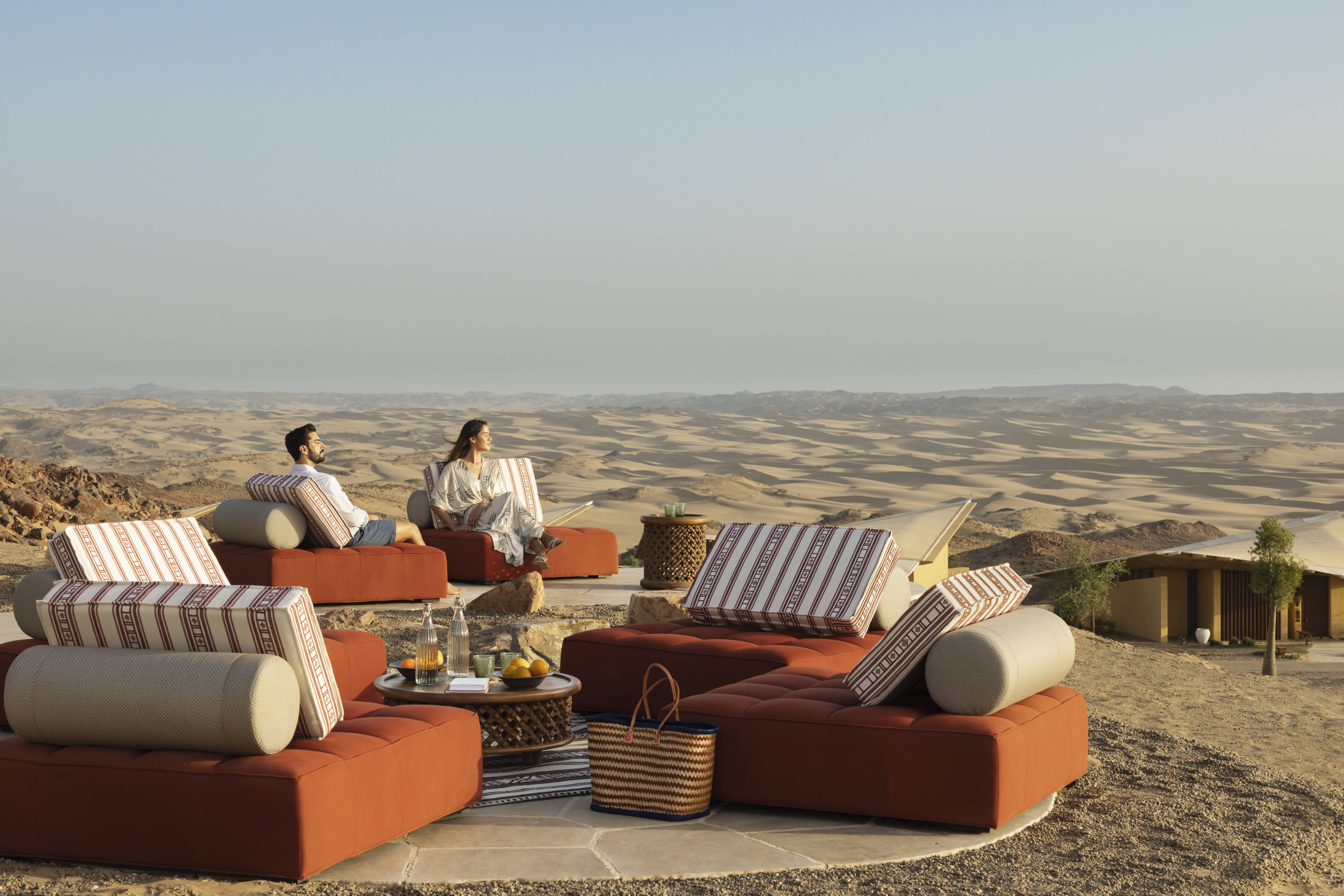
Discover a precious gift
A landscape host to countless gems – and some of the world’s most spectacular resorts

EXPERIENCES
Activities and highlights.

Experience new delights
Walk in the footsteps of ancient traders, with 130km of trails to explore. Dine in the desert, camp in the mountains, and watch as stars cross the clear night sky. Experience the awe-inspiring desert from new heights.

Get lost in the magic of Saudi
Experience a culture passed down through generations. Go mobile, visiting us in the deserts and mountains, or return to the bustling hubs that bring our world together. Seasonal events mark the passing of the year. Others, like Bedouin ceremonies, haven’t changed for centuries.

Untouched areas of natural beauty
Home to nine conservation zones, it is filled with rare flora and fauna. We have left 75% of our 90 plus islands untouched, only developing 22 of them. The rest we’ve left to nature.

Luxury comes in many forms
The glow of the morning sun. The memory of a perfect dish. The peace of a deserted beach. Luxury comes in many forms. Here, you can explore each with us, in resorts that meet your every need.
PLAN YOUR TRIP
Experience a new adventure.
The Red Sea is 500km north of Jeddah, between the Saudi towns of AlWajh and Umluj. With its own dedicated Red Sea International airport, the destination is easily accessible to visitors from around the world. And at the crossroads of Europe, Asia, and Africa, 250 million people are just a three-hour flight away.

Our landscapes are as varied as they are breathtaking
Dip your toes in warm turquoise waters. Explore Cliffside caves in mountain panoramas. Or leave momentary footprints in shifting desert dunes. Whatever your preference, fly to Red Sea International Airport and choose from a diverse array of breathtaking landscape

Protect what Matters
Idyllic islands brimming with wildlife. Stunning landscapes filled with secrets of the past. And, crystal-clear waters teeming with spectacular marine species. Discover one of the last truly untouched areas of natural beauty and help not only to protect it but enhance and regenerate it for generations to come.

Pristine Islands
Discover 22 magical islands filled with rare flora and fauna, and embark on adventures like you’ve never experienced before.

Unspoiled In-lands
Explore dunes and mountains and take in all the wonders of breathtaking desert landscapes.

Thriving Coral Reefs
Discover an ancient coral colony in the deep blue waters of The Red Sea lagoon.

12 Top-Rated Tourist Attractions in the Red Sea Region
Written by Jess Lee Updated Dec 25, 2023 We may earn a commission from affiliate links ( )
The Red Sea is one of the world's best places to visit for scuba diving , and for decades dive enthusiasts have headed here specifically for a holiday spent mostly underwater.
Today, this coastline has become a major sun-and-sea holiday destination favored as much by families looking for an easygoing beach break at a full-service resort hotel as divers here for the coral and fish life.
Away from the beach, though, there's more to explore. Diving may still be on the top of the things to do list, but the Red Sea has also become a major windsurfing and kitesurfing spot in recent years.
The Eastern Desert stretches across this region, scattered with remnants of Egypt's Roman and early Christian eras. These historic tourist attractions are a great opportunity to get off the beach for a day and discover some of Egypt's history.
Learn more about the best places to visit with our list of the top attractions and things to do in the Red Sea region.
1. Diving or Snorkeling the Red Sea's Famed Sites
2. sunbathe & swim on resort beaches, 3. learn to windsurf or kitesurf, 4. explore st. anthony's monastery, 5. visit st. paul's monastery, 6. day trip to al-quseir, 7. hurghada's souq & marina, 8. el-gouna's resort life, 9. 4wd desert safari to wadi al-gimel, 10. marsa alam's resort life, 11. explore roman-era mines at mons porphyrites & mons claudianus, 12. discover the eastern desert's rock inscriptions at barrameya & wadi hammamat, tips and tours for a red sea holiday, map of things to do in the red sea region.
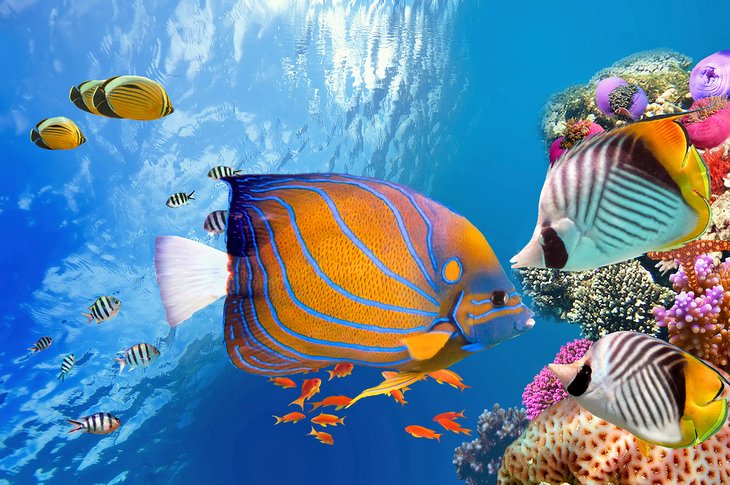
Diving and snorkeling are the Red Sea region's most popular activities.
For experienced divers, the best dive sites are found off the southern stretch of coast, with the easiest access from Marsa Alam . These "deep south" sites are renowned for their sea life and are your best chance of sighting one of the Red Sea's dugongs.
The dive sites just offshore from Hurghada are among Egypt's most popular, but as well as being overcrowded, their coral reefs have unfortunately suffered damage by both divers and disreputable dive operators.
If you're based in Hurghada, forgo those sites to head farther north on your dive trips into the Straits of Gubal, where you'll find the wreck of the Thistlegorm, one of the world's top wreck dives . Or south, to the dive sites offshore from Safaga, Al-Quseir, or just north of Marsa Alam.
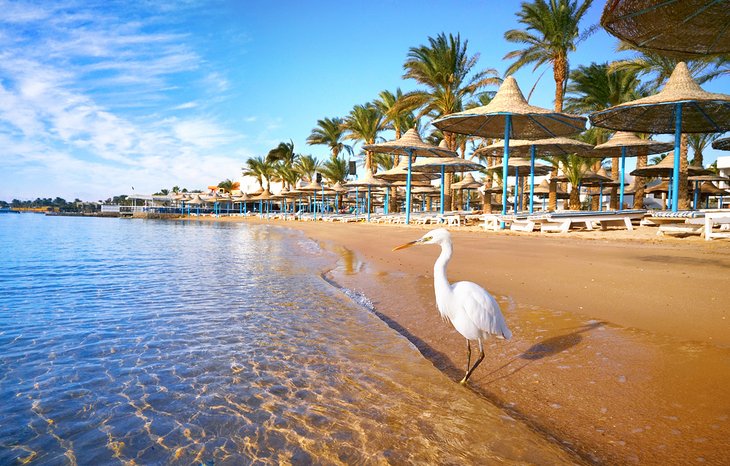
Some of Egypt's best resort life is strung out along the country's long Red Sea coast, north and south of Hurghada.
For many visitors looking for a vacation all about the sun, sand, and sea, this is the number one destination to head during the Northern Hemisphere's winter, when Egypt's Red Sea offers plenty of blue skies and balmy temperatures.
The Red Sea's best beaches are owned (or shared) by resorts and are outside of the major Red Sea towns.
Just 21 kilometers south of Hurghada International Airport, Sahl Hasheesh Bay is one of the top beach destinations in the country. There is a range of resorts strung along the long curve of sand here, including The Oberoi Beach Resort Sahl Hasheesh , with its opulent Arabesque decorated suites within 48 acres of manicured gardens. It's one of the most romantic destination hotels in Egypt.
Closer to Hurghada town, sitting in the resort strip area just south of the center, the Steigenberger ALDAU Beach Hotel is a popular choice for families due to its long strip of beachfront, massive swimming pool covering 5,000 square meters plus a lazy river, water sports center, and spa.
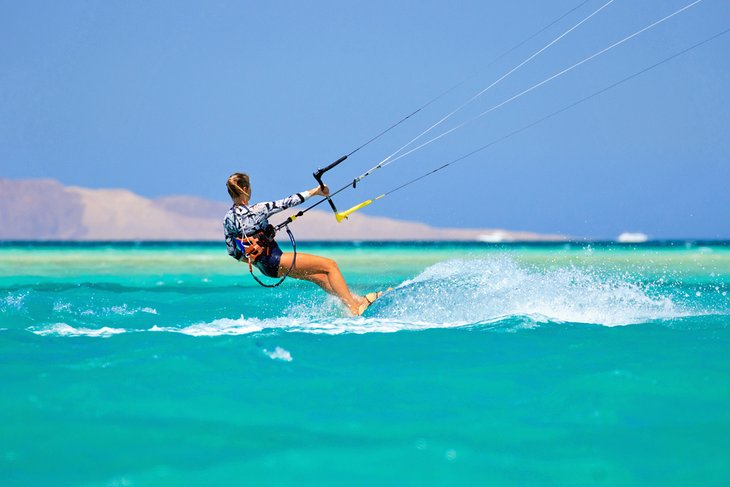
From October through May, the Red Sea's reliable offshore winds have made it a major kitesurfing and windsurfing destination.
The main center for kitesurfing is El Gouna , with several specialist kitesurfing operators in town offering weeklong vacation packages for experienced and beginner kitesurfers.
All operators also offer kitesurfing lessons for travelers who want to try the sport out but don't want to focus their entire vacation on it. A full introductory course generally covers two to three hours of instruction per day for three or four days.
The other Red Sea town known for its water sports is Safaga , 62 kilometers south from Hurghada.
Safaga itself is a rather industrial port town, but the shore just to the north of town has a small resort area dedicated to water sports thanks to the excellent wind conditions. There are windsurfing and kitesurfing operators here, and the small resorts are all centered around these sports.
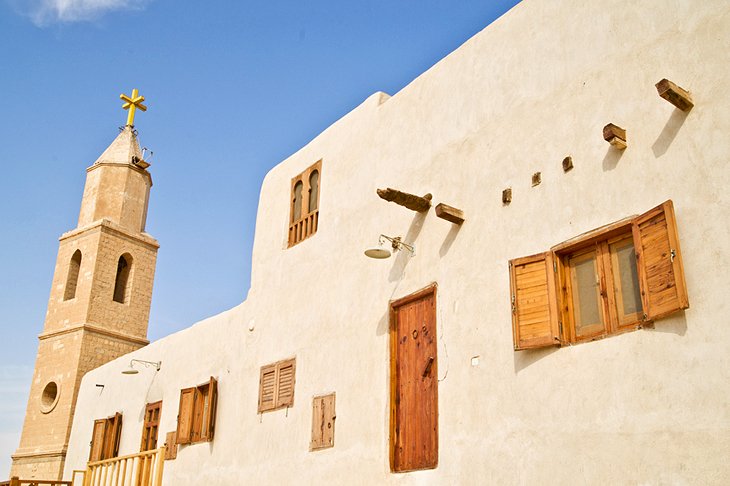
Founded by devotees of St. Anthony, the father of monasticism, it's claimed that St. Anthony's Monastery is the oldest monastery in the world.
It sits amid barren cliffs, 254 kilometers north of Hurghada. The monastery is situated just below the cave where St. Anthony retreated to follow an ascetic life of prayer and solitude.
Probably starting off life as a small clutch of humble dwellings, the monastery today is surrounded by thick fortified walls erected in the 10th century when monks found themselves frequently under attack from Bedouin raiders.
Inside, vast palm-tree-shaded gardens spread out between caramel-toned mud-brick buildings, where the monastery's monks still live.
The real highlights of a visit here, though, are the wall paintings inside the 6th-century Church of St. Anthony . The interior is covered with vibrantly colored and incredibly well-preserved frescoes of Coptic saints, which are renowned for being among the finest examples of Egyptian Coptic Christian artistry.
For those on a religious pilgrimage, St. Anthony's Cave sits 270 meters up the cliffside above the monastery. This is where the saint spent the last 20 years of his life.
Today, the cave is accessed via a steep staircase that winds up the cliff with glorious panoramas of the monastery and desert setting below.
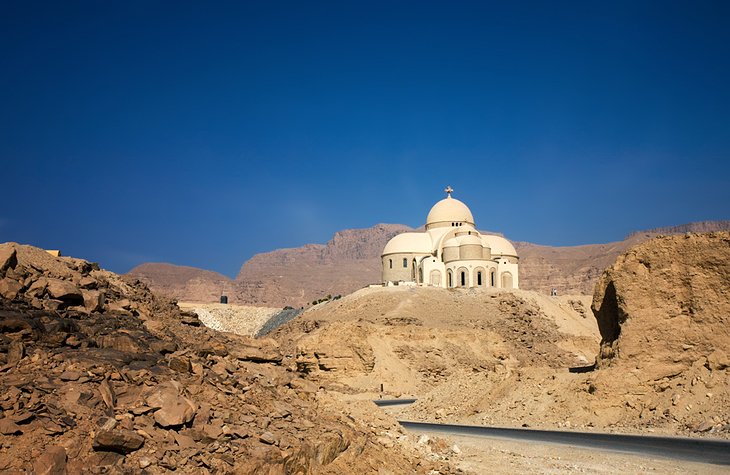
St. Paul's Monastery (241 kilometers north of Hurghada) is much smaller than St. Anthony's and honors St. Paul the Hermit, who is thought to be the first monk to take up the hermetic life.
The monastery has been functioning since at least the 6th century, when devotees of St. Paul began to flock here on pilgrimages.
Inside the thick medieval fortress walls , neat mud-brick buildings imbue the monastery with a sense of serenity.
Three churches are the main points of interest for visitors here: St. Paul's Church is thought to have been built exactly over the spot where St. Paul led his ascetic life of solitude.
A day trip here is usually combined with a visit to the Monastery of St. Anthony.
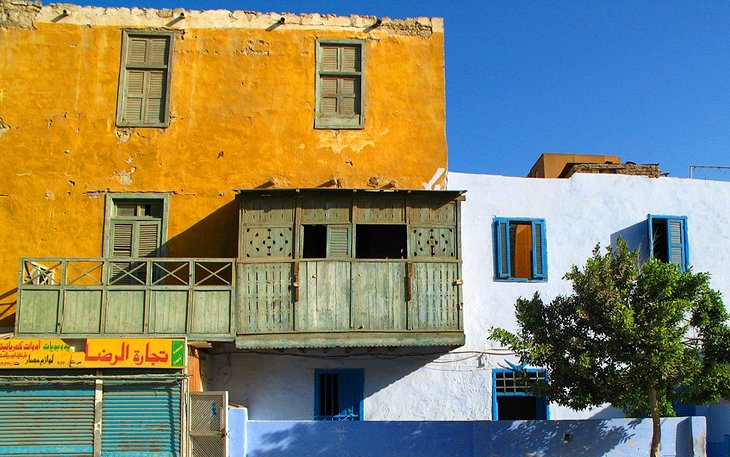
Just 146 kilometers south of Hurghada, Al-Quseir is a place apart from the resort-centered towns that dominate the Red Sea region.
Once an important port town in the medieval period, Al-Quseir has managed to preserve its unique coral-block architecture with narrow squiggles of lanes rimmed by colorful crumbling buildings boasting mashrabiya (lattice) windows and painted doors.
A fort sits just behind the old town area, but the real joy of a visit here is simply meandering through the alleyways; checking out the creaky, dilapidated architecture; and enjoying the charming sense that time somehow forgot this jewel of a place.
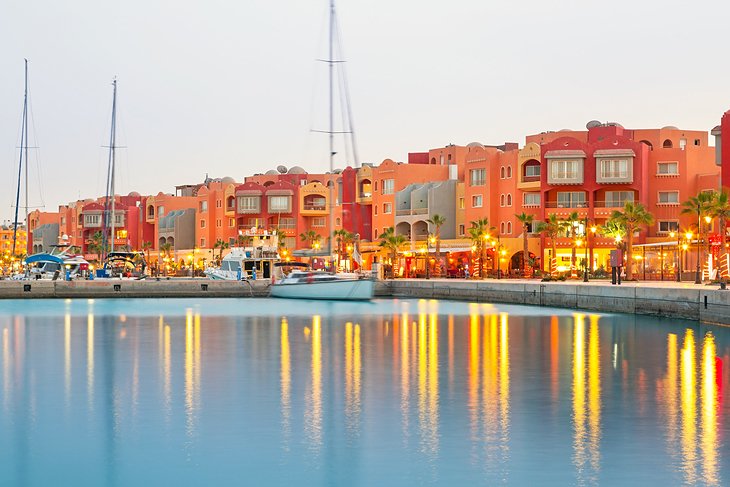
Egypt's oldest resort center, Hurghada rose to fame for its proximity to the fantastic dive sites just offshore, and what had been a tiny Bedouin settlement has long ago morphed into a bustling city that sprawls across the Red Sea coastline.
Although diving is still central to Hurghada's prominence, this is Egypt's major package-holiday destination , and thousands of European tourists decamp here every winter to escape the cold weather and soak up the sun on one- and two-week cheap package deals.
In central Hurghada town itself, the modern marina area has become a major dining center with plenty of restaurant and café choice.
For shopping, head to Ad Dahar Souq in the evening. This is where you'll find the widest range of local handicrafts and souvenirs in Hurghada. There are also plenty of local cafés offering shisha (water pipe), tea, and thick Arabic coffee in this area.
- Read More: Top-Rated Tourist Attractions in Hurghada
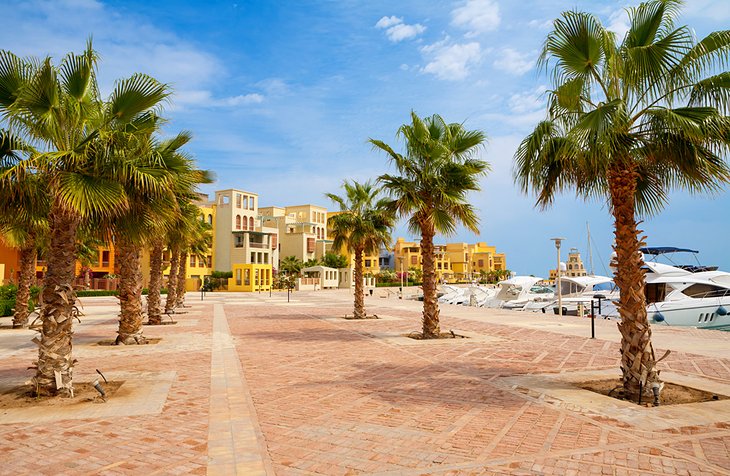
Just 30 kilometers north of Hurghada, El-Gouna plays the role of swish little sister to its aging sibling down the road.
El-Gouna is a completely planned, modern resort town focused on luxury resort living and holiday villa complexes.
There's a golf course, two marinas, and a dozen high-end and mid-range hotels that are fully kitted out to offer water sports and sun-soaked relaxation galore.
El-Gouna is also home to Egypt's only outdoor cinema (which screens movies for free) and the Culturama, which is twinned with Alexandria's Bibliotheca Alexandrina, and offers a multimedia display of Egyptian history, as well as access to the library's vast wealth of ancient manuscripts via the internet.
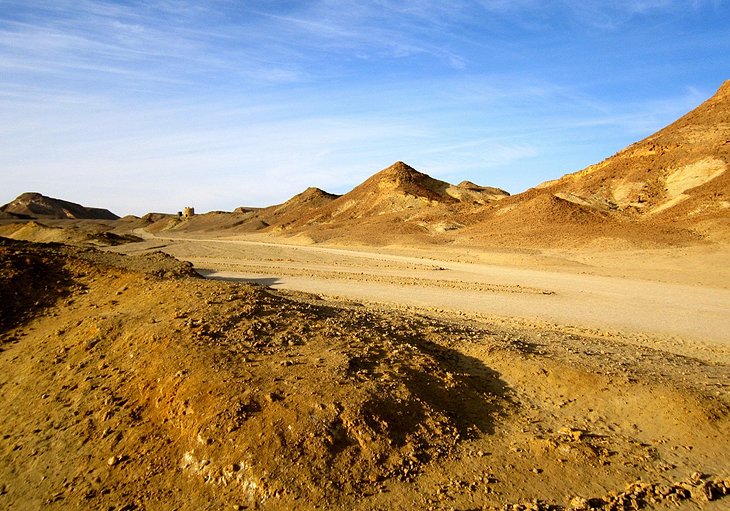
Deep in the southern reaches of the Red Sea's Eastern Desert, around 336 kilometers south of Hurghada, the Wadi al-Gimel Protectorate is a starkly beautiful landscape that hides the remains of Rome's emerald mines.
The main archaeological site here is Sikait, which was the settlement for the miners sent to extract the precious green stone from the arid mountains.
A small temple dedicated to the goddess Isis sits carved into the rock face surrounded by the crumbling remains of simple stone houses.
Nearby are the ruins of Nugrus , where the actual mine was located, while another two small settlement remains (named Apollonia and Gelil ) lie just a couple of kilometers away and once acted as trading stations.
For those not so interested in the history here, the landscapes are phenomenally beautiful, and a trip into this barren desert of scattered acacia trees and looming, jagged mountains is just as worthwhile for the views as for the archaeological remnants.
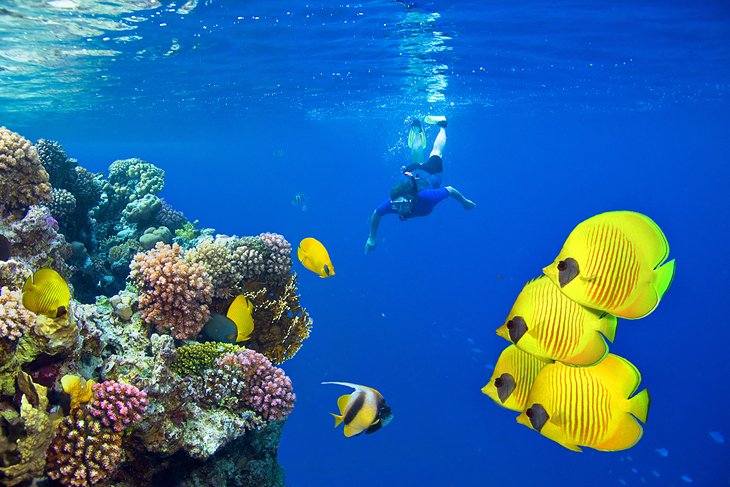
The Marsa Alam area is Egypt's most southerly resort destination, stretching down into the isolated south of the country. Marsa Alam is 284 kilometers south of Hurghada.
The coast here is scattered with luxury all-inclusive resorts, interspersed with the odd campsite for those on more of a budget.
For travelers looking to vacation here, it's all about peace, tranquility, and diving, for this is the nearest resort to Egypt's famed Fury Shoals dive sites, which are rated by experienced divers as some of the top dives in the world.
Off the beach and out of the water, Marsa Alam town has few facilities, so unlike Hurghada and El Gouna, which both offer plentiful individual cafés and restaurants, this is a resort area where most guests stick to their hotels.
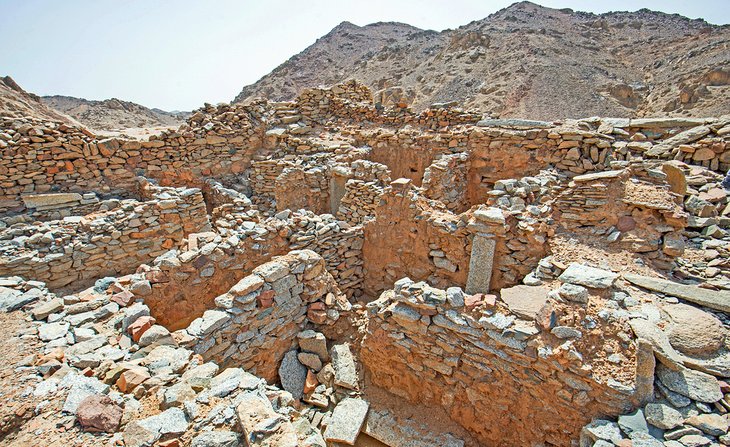
Mons Porphyrites , 60 kilometers northeast from Hurghada, is an ancient Roman porphyry mine and contains remnants of the mining town where the quarry workers lived while they extracted the purple-hued stone from the rugged mountains of the Eastern Desert.
Greatly-prized by the Romans, porphyry mined here was used in building works throughout Rome's Mediterranean empire.
Although there isn't much left of the once bustling mining town, you can still make out the miners' living quarters , their workshops, and the temples they built amid the scattered ruins.
Mons Claudianus is another Roman mining archaeological site, 65 kilometers southeast from Hurghada.
These two separate mines, signify the Eastern Desert's importance to the Roman Empire.
At Mons Claudianus, miners quarried granite out of the mountainside, which was then used throughout the Roman world. The workers here were all prisoners, and the harsh conditions they lived under can still be imagined in the ruins of their living quarters.
Mons Claudianus also functioned as a fortress guarding the surrounding desert. The ruins, though dilapidated are quite substantial.
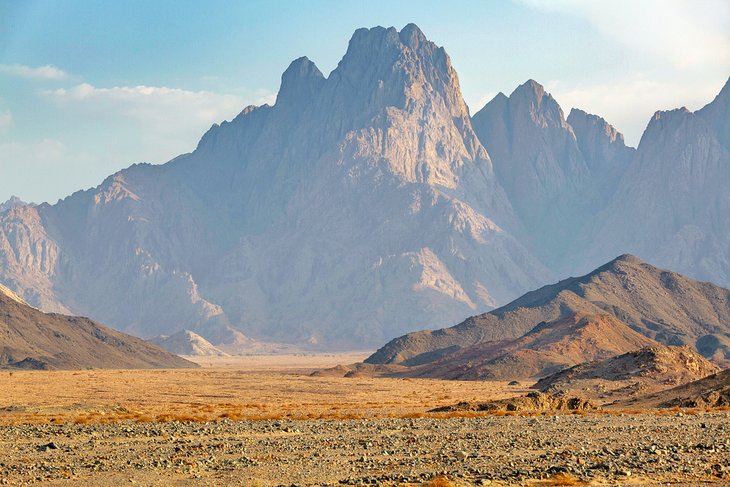
Visiting the rock inscriptions of Egypt's Eastern Desert provides some inkling of the deep and ancient history of this area.
This rugged landscape has been crisscrossed by trade routes throughout history.
Wadi Hammamat, along the Qift to Quseir route, and Barrameya are both littered with the evidence of this human history. A 4WD tour of these Eastern Desert areas is an interesting Red Sea excursion for travelers looking to delve into the past.
The rock faces here have been used as a canvas by passing travelers from the Pharaonic era right through to the early 20th centuries, with everything from hieroglyphics to animal scenes depicted in abundance.
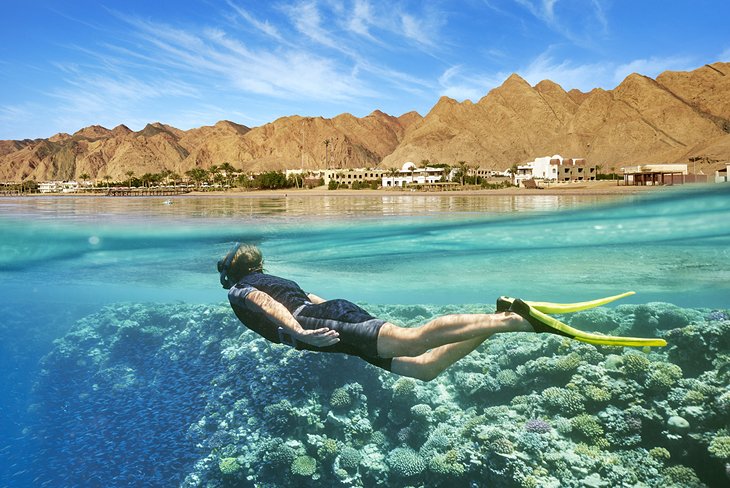
Luxor Tours:
- One of the major bonuses of choosing a sun-and-sand vacation on the Red Sea coast is that you're within day-tripping reach of the tombs and temples of Luxor , so you can easily squeeze some Ancient Egypt sightseeing into your sunbathing itinerary. Most of the resorts offer day trips to Luxor.
Where to Stay:
- The Hurghada area is large, with resorts spanning the coast south from the actual town all the way down to Safaga.
- El Gouna is much more compact and is a purpose-built resort town. Marsa Alam is the Red Sea coast's newest resort area.
Activities:
- Water sports such as kitesurfing and windsurfing are offered at many resorts. El Gouna's resorts are generally better equipped for these activities.
More Related Articles on PlanetWare.com
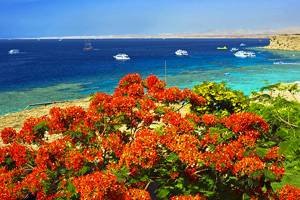
Beach Time: See our article on the Red Sea coast's major town Hurghada for more information on this area and to learn about what to see and things to do. Or, check out our article on Sharm el-Sheikh if you're thinking of spending your beach time in the Sinai Peninsula.
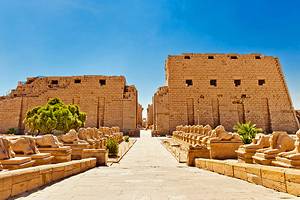
History Day Trip: The Upper Nile's glut of tombs and temples are within day-tripping distance from the Red Sea coast. Take a look at our articles on some of Egypt's most impressive sites, including Luxor , Karnak, and the Valley of the Kings for day trip inspiration.

More on Egypt
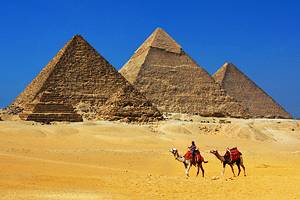
The Red Sea
Book your individual trip , stress-free with local travel experts
Select Month
- roughguides.com
- red-sea-coast
- Travel guide
- Itineraries
- Local Experts
- Travel Advice
- Accommodation
Plan your tailor-made trip with a local expert
Book securely with money-back guarantee
Travel stress-free with local assistance and 24/7 support
Absolutely loved it, the service was seamless from the first pickup from the airport to the return drop-off. The local guides were excellent, knowledgeable...
The beauty of the landscape and an excellent climate are obvious reasons for the Red Sea’s ever-increasing popularity, especially as a winter-sun destination. Its coast runs for 1,600 km (1,000 miles) in a southeasterly direction from Suez. For most of its length, beautiful but desolate limestone and granite mountains border the coast, with range rising upon range, their shades of purple harmonising with deep-blue skies and blue-green seas. But this once pristine coast is changing fast. Most of the coastline has been sold to developers and many largescale tourist projects, from the basic to the luxurious, are newly built or underway.
Travel tips for visiting the Red Sea Coast
What to do on the red sea coast, best places to stay, how to get around, how many days do you need, what is the best time to visit, how to get to the red sea coast, travel ideas for egypt, created by local experts.

8 days / from 1999 USD
The Best of Egypt
Explore the history and culture of Egypt and its ancient rulers on this trip throughout the country. Start and end in Cairo and make your way down to Luxor, Aswan and Abu Simbel. Instead of domestic flights, you will hop on luxurious sleeper trains for your journey.

13 days / from 5499 USD
Cairo & a luxurious Dahabieh sailing cruise
Explore Egypt at a leisurely pace on board a dahabieh, a traditional sailing ship. In Cairo, visit the Egyptian Museum of Antiquities, and in Giza, the pyramids; cruise to world-renowned sites alongside lesser-known treasures, such as Luxor’s tombs, el Kab and Gebel Silsileh’s Temple of Horemheb.

8 days / from 2200 USD
A Nile Cruise in Egypt
Experience Cairo with the pyramids of Giza and the Egyptian museum before flying to Luxor to board your Nile cruise. Highlights include Karnak temple, Valley of Kings, Hatshepsut temple and an optional visit to Abu Simbel. Spend your last night in fascinating Cairo.
Apart from the area east of Cairo , the transition from the green Nile Valley to the Rea Sea is abrupt. Suddenly the lush cultivated land gives way to stony wilderness, in which rocks rise up in extraordinary formations, reminiscent of the pyramids and Sphinx, the sand blows and spills, and there is hardly a sign of human life for hundreds of miles.
To get to the coast from Cairo, avoid the heavily congested Cairo–Suez highway and follow route 75 to Ain Sokhna, 134km (83 miles) southeast of Cairo and 56km (35 miles) south of Suez. Effectively the nearest seaside resort to the capital, this is a popular year-round getaway for wealthy Cairenes thanks to a strip of swaying date palms, white sand and clear green-blue sea.
Ride the Porto Sokhna Telepherique, a cable car that runs 1km (0.6 miles) from the Porto Sokhna Beach Resort up to the highest hill behind town. There are terrific views of the Gulf of Suez and the sea liberally strewn with tankers converging on the canal. South of Ain Sokhna, the rocky skirts of the North Galala Plateau come right down to the edge of the sea. The drive here is spectacular.
Planning a trip to Egypt? Perhaps our local experts can help you plan your dream trips!

St. Anthony monastery in Eastern desert, Egypt © Shutterstock
From bedding down at El Gouna, Egypt’s most luxurious resort, to kite-surfing at Safaga, these are the best things to do along the Red Sea coast.
#1 Explore the hermit Monastery of St Anthony
About 25km (15 miles) west of Zaafarana, in the rugged hills at the foot of the South Galala Plateau and looking out over the desolate Wadi Araba, stands the Monastery of St Anthony, the 4th-century Christian hermit whose temptations were enthusiastically illustrated by painters of the Renaissance.
The monastery was founded by Anthony’s followers after his death in AD 356, and is often regarded as the first monastery in the world. The oldest building in the compound is the church of St Anthony, which is adorned with murals from the 13th century onwards.
A path from the west side of the monastery leads to a steep staircase to St Anthony’s cave, where the saint lived as a hermit until the age of 105. His life is considered to be the inspiration for monasticism in Egypt , although others credit his contemporary, St Paul.
#2 Find peace at the Monastery of St Paul
Retracing the road through Zaafarana, it is an hour’s drive to the monastery of Anthony’s contemporary, St Paul, tucked into a fold of the Red Sea Mountains. Smaller, more dilapidated and more remote, the Monastery of St Paul the Hermit sees fewer visitors.
St Paul (AD 230–342) was the earliest known hermit but, when he was visited in his cave at the age of 113 by St Anthony, St Paul recognised him as being spiritually his superior. St Paul’s cave is in the church of St Paul, which also contains his remains.
#3 Stay at El Gouna, Egypt’s most luxurious holiday village
The resort of El Gouna, 21km (13 miles) north of Hurghada, is Egypt’s most luxurious purpose-built holiday village. Cairene businessman, Samih Sawiris, bought the plot of land with the intention of building a few holiday homes for family and friends, but before long his business instincts got the better of him, and he seized the opportunity to create something unique in Egypt.
At its conception in 1989, El Gouna was originally planned as a self-contained community, but it is now almost considered a town in its own right (albeit a privately owned one).
Today, it has a hospital, an international school, a private airport, three yacht marinas, a mosque and a Coptic church; even the local football team, El Gouna FC, plays in the Egyptian Premier League.
Gardens, canals and several man made lagoons add to the impression of peacefulness, and there are numerous swimming pools and several good beaches too.

Bungalow on a canal. El Gouna, Egypt, Red Sea © Shutterstock
#4 Sit back and chill at Hurghada
In recent years, what was a small sleepy fishing village, Hurghada (Al-Ghardaqah), 420km (250 miles) south of Suez, has grown into a booming resort town – the largest on the Red Sea coast. The town has a large range of accommodation, from basic hotels catering for backpackers to up-market resorts.
A long strip of holiday villages continues to spread further south and has now reached a long way past the airport. Many of these villages, which rival each other for splendour, the size of their pools and the number of rooms, are operated by international four- and five-star chains.
Read all about this place on our page about Hurghada .

Hurghada El Mina mosque, Egypt © Pixabay
#5 See the Roman quarry camps of the Eastern Desert
In Pharaonic times the Eastern Desert was a source of gold and other precious metals, ornamental stone and other building materials, which contributed greatly to the wealth and prestige of the pharaohs and were later coveted by Assyrians, Persians, Greeks and Romans.
Thousands of prisoners in chains were used for the extraction of these riches and many died in the process. The gold was arduously mined and smelted, and both granite and limestone were quarried and transported to Thebes for the construction of temples and other monuments.
The Romans established permanent quarrying camps in the mountains, the ruins of which are visible from the road between Hurghada and Safaga. They were particularly partial to the purple stone known as porphyry, which comes from Mons Porphyrites (Mountain of Porphyry) below Gabal Abu Dukhan (Father of Smoke) and which is accessed along Wadi Umm Sidri (4x4 vehicles only, with local guide ).
#6 Head to Safaga for wind- and kite-surfing
Some 62 km (39 miles) south of Hurghada, Safaga is primarily a port town that exports phosphates. During hajj, ferries operate from here transporting Muslims in the Nile Valley across to Saudi Arabia en route to Mecca. Cruise ships also dock here, although passengers are immediately whisked off on shore excursions to either Luxor or Hurghada.
But a small tourist area has nevertheless developed at the northern end of the bay with a choice of hotels; almost permanently windy, the town is particularly popular with wind- and kite-surfers as well as divers to the nearby reefs.
Safaga lies 165 km (103 miles) from the Nile town of Qena to the west, on an excellent tarred road. From Qena it’s another 70km (44 miles) south to Luxor, so this is the fastest and most logical route from the Red Sea resorts to the Nile Valley – although expect police checks along the way.

© Shutterstock
#7 Go diving at Marsa Alam
The fishing town of Marsa Alam has now been overtaken by tourism. It has been the focus of some frenzied construction over the last decade, with several luxury resorts and an international airport for charter flights.
The main drive behind it all is good diving and snorkelling. The development just outside the airport is Port Ghalib; with its hotels, villas, restaurants, shops and activities, it has grown into a southerly version of El Gouna.
A popular excursion from Marsa Alam is to Wadi el Gemal National Park, which was designated a protected area in 2003 and is located 40km (25 miles) further south, covering both land and marine areas. Dive operators take clients to the coast and to five offshore islands for excellent diving and snorkelling, while the terrestrial section can be visited on 4x4 Jeep safaris that include a camel ride and lunch or dinner with the Bedouins
The Red Sea area of Egypt is a popular destination for beach lovers and divers, so when it comes to choosing the best area to stay in the Red Sea , there are a few key options to consider.
Hurghada is a bustling city with a wide range of accommodations , from budget-friendly hostels to luxury resorts.
Sharm El-Sheikh
The region's busiest area, Sharm El-Sheikh, has a wealth of hotels , namely luxury accommodations and upscale retreats and resorts.
Dahab is a laid-back and budget-friendly option, offering a range of affordable accommodations and a more relaxed beach-vibes atmosphere. It's particularly popular among backpackers and those looking to escape the crowds of other Red Sea destinations.
Browse the best hotels in the Red Sea .

Marsa Alam turtle © Shutterstock
The Red Sea Coast is stunning, so the best ways to get around this beautiful region are those that let you slowly take it all in. Here's how to get around.
One of the most affordable ways to get around the Red Sea Coast is by bus. Many bus companies operate in the region, providing reliable and affordable transportation options. Buses are an excellent way to travel between cities and towns, and they are often air-conditioned and comfortable.
Taxis are readily available in most cities and towns along the Red Sea Coast, providing a convenient and reliable mode of transportation. It is advisable to negotiate the fare before getting into a taxi.
The Red Sea is a significant waterway, and traveling by ferry is a popular mode of transportation. High-speed ferries shoot between Sharm El Sheikh and Hurghada.
By microbus
Microbuses are a popular and affordable mode of transportation on the Red Sea Coast, particularly for short distances. They ply certain routes and can be flagged down on the street but aren't as handy to get between towns.

Church at eastern egyptian desert in St Paul monastery © Shutterstock
You will need at least 5 to 7 days to explore the Red Sea Coast in Egypt. This will give you enough time to visit popular destinations such as Hurghada, Sharm El-Sheikh, and Marsa Alam.
If you plan to visit only one or two cities along the Red Sea Coast, you may be able to complete your trip in 3 to 4 days. However, if you wish to engage in activities such as scuba diving, snorkeling, or exploring the local culture, plan to stay longer.
In Hurghada, for example, you can spend a few days exploring the city's beaches, water sports, and other activities. You can also visit the nearby Giftun Island, a protected marine reserve, and explore its coral reefs and abundant marine life.
If you're interested in water sports like scuba diving, snorkelling, or swimming, the best time to visit the Red Sea is during the spring and autumn months of March to May and September to November, respectively. During these months, the sea temperature is warm and comfortable, ranging from 22°C to 28°C (71°F to 82°F), and the weather is mild with low humidity levels.
If you prefer to enjoy the beaches and other outdoor activities, the summer months from June to August can be a good time to visit, but it can be very hot and humid, with temperatures often exceeding 40°C (104°F). It's essential to stay hydrated and avoid the midday sun during this time. However, this is the peak season, and you can enjoy a lively atmosphere with lots of events and festivals.
The winter months from December to February can be a bit chilly, with temperatures ranging from 16°C to 22°C (61°F to 72°F), but it's still possible to enjoy outdoor activities, and you can avoid the crowds and get lower prices during this time.
Find out more about the best time to visit Egypt .
There are several ways to get to the Red Sea coast in Egypt depending on your location and budget. Below are the easiest ways.
The fastest way to get to the Red Sea coast is by flying into Hurghada or Sharm El Sheikh airport. Both cities have international airports that serve major airlines from around the world.
If you're on a budget, public buses are available from major cities like Cairo, Luxor, and Aswan. The journey can take several hours, but it's an affordable option for those who want to save money.
Hiring a private taxi is a comfortable and convenient way to get to the Red Sea coast. It's also a popular option for those who want to explore the region at their own pace. Agree on a fee with the driver before setting off. Your hotel should be able to help you find a good drive.
Find out the best ways to get to Egypt .
Discover more places in Egypt

- South of Hurghada
The Rough Guides to Egypt and related travel guides
In-depth, easy-to-use travel guides filled with expert advice.

Find even more inspiration here

Planning your own trip? Prepare for your trip
Use Rough Guides' trusted partners for great rates
written by Rough Guides Editors
updated 03.05.2023
Ready to travel and discover Egypt?
Get support from our local experts for stress-free planning & worry-free travels.
- Travel advice
- Where to stay

- 5 star hotels in Riyadh
- 5 star hotels in Jeddah
- 5 star hotels in Makkah
- 5 Star hotels in Madinah
- 5 star hotels in Abha
- Hotels in Dammam
- Hotels in Al Khobar
- Hotels in Taif
- Hotels in Jubail
- Hotels in Yanbu
- Hotels in Al Ula
- Hotels in Tabuk
- Hotels in King Abdullah Economic City
- Hotels in Hail
- Hotels in Jazan
- All Restaurants
- Indian Restaurants in Riyadh
- Italian Restaurants in Riyadh
- French Restaurants in Riyadh
- Chinese Restaurants in Riyadh
- Japanese Restaurants in Riyadh
- Cafes in Riyadh
- Korean Restaurants in Riyadh
- Turkish Restaurants in Riyadh
- Pakistani Restaurants in Riyadh
- Lebanese Restaurants in Riyadh
- Seafood Restaurants in Riyadh
- Steakhouses in Riyadh
- Thai Restaurants in Riyadh
- Mexican Restaurants in Riyadh
- Breakfast Restaurants in Riyadh
- Restaurants in Bujairi Terrace
- Restaurants in VIA Riyadh
- Restaurants in KAFD
- Cafes in Jeddah
- Korean Restaurants in Jeddah
- Indian Restaurants in Jeddah
- Italian Restaurants in Jeddah
- Chinese Restaurants in Jeddah
- Japanese Restaurants in Jeddah
- Turkish Restaurants in Jeddah
- Seafood Restaurants in Jeddah
- Lebanese Restaurants in Jeddah
- Asian Restaurants in Jeddah
- Thai Restaurants in Jeddah
- Restaurants in Jeddah Yacht Club
- Indian Restaurants in Khobar
- Italian Restaurants in Khobar
- Japanese Restaurants in Khobar
- Seafood Restaurants in Khobar
- Cafes in Khobar
- Chinese Restaurants in Khobar
- Turkish Restaurants in Khobar
- Restaurants in Dammam
- Restaurants in Makkah
- Restaurants in Madinah
- Restaurants in Taif
- Restaurants in AlUla
- All Destinations
- Places to visit in Riyadh
- Places to Visit in Diriyah
- Places to visit in Jeddah
- Places to visit in Makkah
- Places to visit in Madinah
- Places to Visit in NEOM
- Places To Visit in The RED SEA
- Places to visit in Abha
- Places to Visit in AlUla
- Places to visit in Dammam
- Places to visit in Khobar
- Places to visit in Taif
- Places to visit in Jubail
- Places to visit in Tabuk
- Places to visit in Al Baha
- Places to visit in Hail
- Places to visit in Yanbu
- All Flights
- Riyadh to Abha flight
- Riyadh to Dammam flight
- Riyadh to Jeddah flight
- Riyadh to Madinah flight
- Riyadh to Tabuk flight
- Jeddah to Abha flight
- Jeddah to Dammam flight
- Jeddah to Riyadh flight
- Jeddah to Tabuk flight
- Madinah to Dammam flight
- Madinah to Riyadh flight
- Abha to Dammam flight
- Abha to Jeddah flight
- Abha to Riyadh flight
- Dammam to Abha flight
- Dammam to Jeddah flight
- Dammam to Madinah flight
- Dammam to Riyadh flight
- Delhi to Dammam flight
- Delhi to Jeddah flight
- Dubai to Dammam flight
- Hyderabad to Dammam flight
- Manila to Riyadh flight
- Mumbai to Dammam flight
- Add Your Restaurant Page
- Claim Your Restaurant Page for FREE
- Pricing Plans
- Latest News
- Login Sign Up
Discover The Beautiful Saudi Arabia Red Sea Project. Your Guide to Red Sea Global and The Luxury Saudi Arabia Red Sea Hotels and Resorts
The Best Places to Visit in The Red Sea: Red Sea Global and Saudi Red Sea Hotels
Explore other cities of saudi arabia, what is red sea global.
Red Sea Global is one of the most anticipated and visionary tourism projects in the world. The Red Sea Project covers 90 pristine islands along 200 km of coastline along the beautiful Saudi Red Sea. The project aims to offer 3,000 hotel rooms across 16 luxury hotels by the end of 2024, increasing to 8,000 hotel rooms across 50 hotels and 1,000 residences by 2030.
The Saudi Red Sea Project is located in north west Saudi Arabia in Tabuk Province south of NEOM and was one of multi billion dollar Giga Projects introduced by HRH Crown Prince Mohammad bin Salman in 2017.
Red Sea Global was launched in 2018 and is a privately held joint-stock company, wholly owned by the Saudi Arabian Public Investment Fund (The PIF) and is a global leader in developing sustainable, eco-friendly and luxurious travel destinations.
Here you can see The Full List of The Best Saudi Arabia Red Sea Hotels and AMAALA Hotels .
Red Sea Global Guide
Red Sea Global is currently developing 3 ultra luxury tourist destinations along Saudi Arabia's stunning Red Sea coastline:
THE RED SEA
These Red Sea projects aim to further enhance Saudi Arabia's luxury tourism sector while adhering to the best sustainability standards. They are designed to protect and improve the natural environment for future generations.
Leadership and Vision of Red Sea Global
John Pagano was appointed the Group CEO of The Red Sea Development Company in 2018. With a wealth of experience managing and transforming large-scale projects, including London's Canary Wharf, Pagano has been instrumental in steering the Red Sea Project.
John Pagano stated, "What sold the Red Sea Project was the opportunity to be part of something transformational for the country, for its people, to be part of something bigger than a project.”
The Red Sea Map
The Red Sea Project , one of Red Sea Global's flagship ventures, is strategically located between Umluj and Al Wajh in the Tabuk Province. Spanning over 28,000 square kilometers. It is located 500 kilometers north of Jeddah with its own new dedicated Red Sea International Airport.
The Red Sea is home to a richly diverse marine ecosystem, including coral reefs, seagrass, and mangroves, making it a location of global conservation significance.
The surrounding landscapes, featuring resting volcanoes, mountain canyons, and desert expanses, are facilitated by historical and cultural sites, providing a unique blend of natural beauty and cultural richness.
Key Facts About The Red Sea Global
- Tourism Transformation: Aligned with Vision 2030, the Red Sea Project aims to showcase Saudi Arabia's natural beauty to the world. The Saudi Red Sea invites you to pristine coastline untouched islands, and unrivaled biodiversity in world class luxury.
- Red Sea Climate: Distinguished by its moderate weather throughout the year with an average temperature of 31 degrees in the summer and 23 degrees during the winter months.
- Sustainable Tourism: The Red Sea Project aims to attract local, regional, and international tourists, with a projected one million visitors annually by 2035. The number of visitors will be capped annually to maintain the delicate balance between tourism and ecosystem preservation.
- Health & Wellness Destination: The project will serve as a hub for the wellness movement, promoting a healthy and vibrant society. Red Sea Global has partnered with Clinique La Prairie, a renowned wellness brand, to develop a high-end health resort in Amaala.
- Environment Preservation: The Red Sea Project’s regulations prioritize ecological standards for sustainable development and environmental preservation including deliccate marine eco-systems
- Luxurious Hotels & Resorts: The project will feature a range of class-leading hotels and luxury residential units, ensuring a comfortable and lavish stay for the guests including brand such as IHG Hotels & Resorts, Fairmont, Raffles, St Regis, Hyatt and more.
The Red Sea, known for its breathtaking landscapes and rich cultural history, is transforming significantly. Red Sea Global is advancing several unique mega-projects to transform the Red Sea into a luxury regenerative tourism destination.
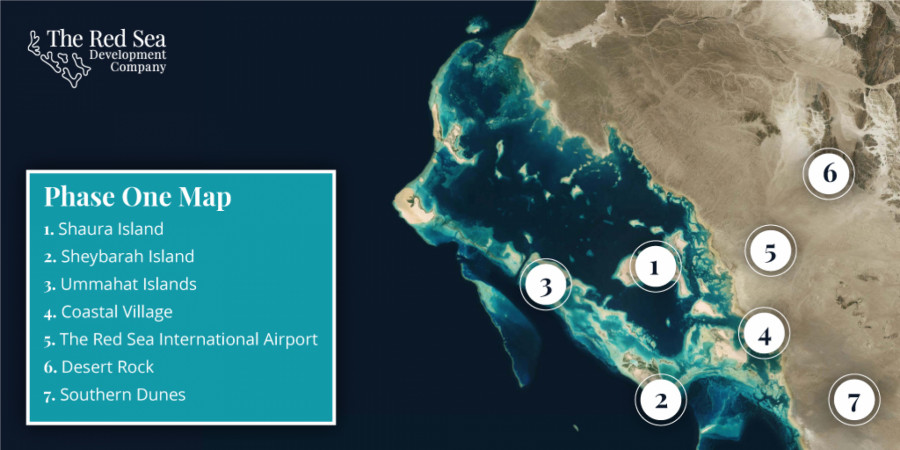
The Red Sea Islands
The Red Sea has over 90 pristine islands, each boasting unique characteristics and attractions. Among the most prominent are:
Sheybarah Island
Shura island, ummahat island.
A natural paradise, Sheybarah Island possesses white sand dune beaches, stunning coral reefs, and diverse marine life. The resort on the island reflects this natural beauty, implementing reflective polished stainless steel encasing that mirrors the surrounding environment.
The resort exemplifies sustainable design, striving for LEED Platinum certification. It follows a zero-energy, zero-water approach, utilizing a central solar farm for electricity and a solar-powered desalination plant for fresh water.
Sheybarah Island Resort serves as a model of success, signifying what can be accomplished through innovation, dedication, and a profound regard for the environment.
Set to open its doors to guests in 2024, Shura Island is the hub of luxury on the Red Sea Project. Housing world-class hotels and resorts, the island is connected to the mainland by a 3.3km crossing.
The island will offer an array of global culinary selections, including options for "boutique street food."
Shura Island is set to feature 11 high-end hotels and resorts, showcasing well-known brands such as Edition, Fairmont, Raffles, SLS, InterContinental, Jumeirah, Miraval, Rosewood, and Grand Hyatt.
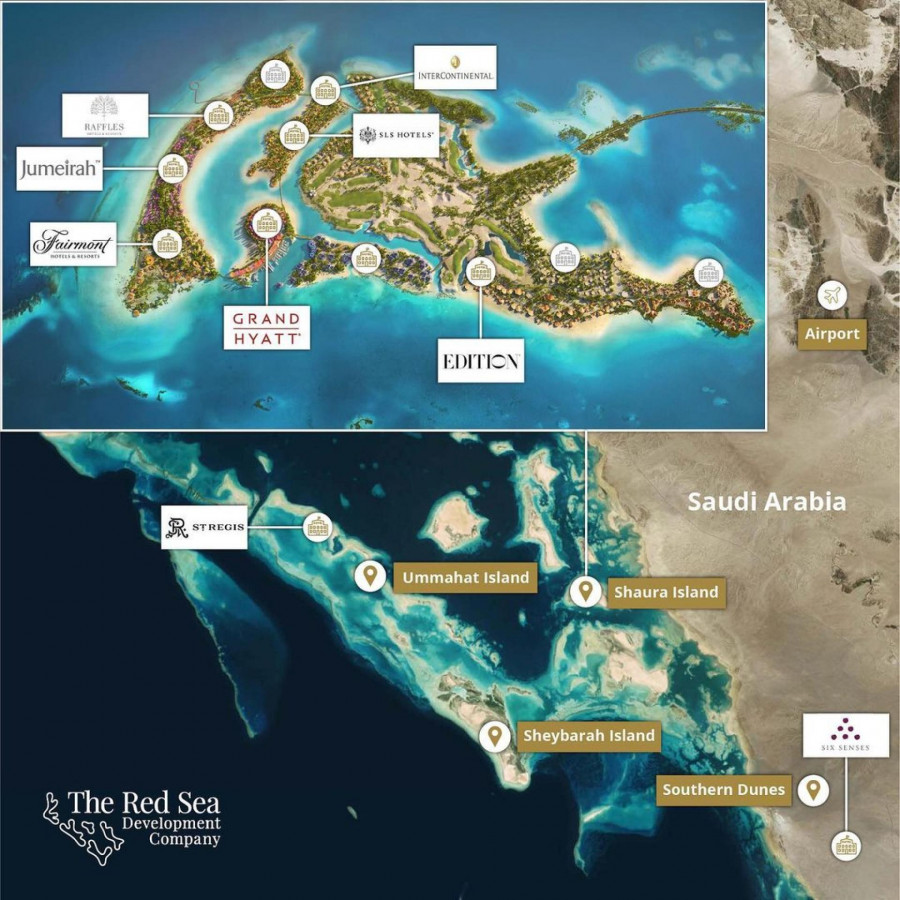
Nestled in the crystal-clear waters of the Red Sea, Ummahat Island is a beacon of luxury and natural beauty. The island has two exclusive resorts, the St. Regis Red Sea Resort and Nujuma, A Ritz-Carlton Reserve.
The island is encircled by pristine white sandy beaches and flourishing coral reefs, making it an ideal destination for individuals searching for a luxurious vacation immersed in nature.
The resorts on the Ummahat Islands exemplify Red Sea Global's dedication to delivering exceptional experiences to their visitors.
The Best Red Sea Hotels Saudi Arabia
Six senses southern dunes, shebara hotel red sea, sheybarah island resort, desert rock resort, four seasons red sea resort, miraval the red sea, rosewood red sea, fairmont the red sea, grand hyatt the red sea, intercontinental resort red sea, jumeirah the red sea, the red sea edition, faena the red sea, sls the red sea, raffles red sea, st. regis red sea resort, nujuma, ritz-carlton reserve, 1. six senses southern dunes.
Nestled amongst the pristine desert plains and the majestic Hijaz Mountains, Six Senses Southern Dunes promises an unparalleled blend of nature, wellness, and cultural exploration. The resort, designed by the renowned British architectural firm Foster + Partners, epitomizes desert elegance.
Located on the renowned path of the historical incense trade route, the resort pays homage to the area's vibrant history. This route served as a bustling center in antiquity, enabling the Nabataeans to transport opulent commodities like silk, incense, and textiles.
Encompassing 36 guest rooms and 40 pool villas, Six Senses Southern Dunes is a symbol of environmental responsibility and cultural preservation. It beautifully integrates with the Red Sea Destination and balances innovative tourism, sustainability, and heritage conservation.
Six Senses Southern Dunes is dedicated to establishing new standards in sustainability. As the first LEED Platinum resort in Saudi Arabia, it functions entirely on solar power.
The resort's design aims to maximize natural light utilization and minimize energy usage. This luxurious hotel assures guests of a distinctive and memorable experience by emphasizing sustainability, and well-being, and incorporating local culture.
2. Shebara Hotel Red Sea
Red Sea Global, a pioneer in sustainable tourism and development, has unveiled its new venture, Shebara. Set to open in the summer of 2024, this luxury resort is more than just a hotel.
It represents a significant shift in global hospitality, setting new benchmarks in sustainable tourism and offering guests an immersive luxury experience with overwater and beach villas.
Shebara offers an immersive luxury experience with 73 keys, including overwater and beach villas. The unique positioning of these villas creates a mesmerizing visual akin to a string of pearls floating above the water.
The resort has two specialty restaurants, a spa and fitness center nestled among the island’s dunes, and a family and adults-only pool featuring panoramic views of the stunning sunset.
Guests can reach the resort via a 45-minute boat ride from the mainland or a quick 20-minute journey by seaplane, adding to the overall exotic experience of the stay.
Shebara's innovative design is the brainchild of Killa Design, known for its ability to create spaces that blend seamlessly with their environment. At Shebara, the stainless steel villas mirror the ocean’s colors, surface patterns, and ever-changing skies.
With its unique design, luxurious amenities, and sustainable operations, Shebara is poised to set new standards in the global hospitality industry.
3. Sheybarah Island Resort
A revolutionary initiative is emerging in the central region of the Red Sea. The Sheybarah Island Resort , an upscale resort boasting 73 lavish rooms and breathtaking over-water villas, is poised to revolutionize luxury tourism through a steadfast dedication to sustainability.
Red Sea Global has recently disclosed advancements at the Sheybarah Resort. Crafted by the renowned architectural firm Killa Design based in Dubai, the resort assures a distinctive blend of luxury and sustainability.
4. Desert Rock Resort
Situated just a short 20-minute drive from the Red Sea's airport, the Desert Rock Resort, currently halfway through its construction, promises an exclusive and opulent experience seamlessly integrated with the natural rock formations.
The establishment will offer 48 villas, 12 hotel rooms, a state-of-the-art fitness center, a serene lagoon oasis, and various dining options.
Distinguishing itself from traditional resorts, the Desert Rock Resort is intricately carved into the ancient rocks, preserving the distinctive features of the environment.
All materials dug out during construction, including stone and sand, are thoughtfully remodeled for the resort's infrastructure.
This project is dedicated to establishing a world-class luxury destination while respecting and conserving the region's profound history. In a commitment to sustainability, local community members are actively involved as land hosts and offer educational tours to enlighten visitors.
The creation of Desert Rock Resort exemplifies Saudi Arabia's aims to become a luxurious global tourist destination. Fusing seamlessly with its natural surroundings, this resort guarantees an unparalleled and extraordinary escape.
5. Four Seasons Red Sea Resort
Red Sea Global, known for its ambitious regenerative tourism projects, has partnered with Kingdom Holding Company to establish the Four Seasons Resort Red Sea on Shura Island, the central island in the Red Sea destination.
Comprising 149 rooms, suites, and 31 residential properties, this upscale resort is anticipated to welcome guests in early 2025.
The creation of the Four Seasons Resort Red Sea underscores the joint commitment to developing exceptional destinations that foster economic growth, job opportunities, and the conservation of valuable ecosystems.
6. Miraval Red Sea
The resort will house 180 rooms and suites, including 20 villas. It plans to offer a "Life in Balance Spa,” expected to be the largest within the Red Sea destination at nearly 3,700 square meters and 39 treatment rooms.
It will also feature a walking trail system, mangrove boardwalk, outdoor adventures, and several rooms for art, creative expression, music, wellness lectures, and hands-on workshops.
Miraval, a wellness brand affiliated with Hyatt, manages only three other hotels globally. Introducing Miraval's The Red Sea signifies the brand's worldwide expansion and dedication to the wellness tourism sector.
Miraval The Red Sea marks a significant advancement in the realm of wellness hospitality. Positioned within the Red Sea Project, it commits to delivering a distinctive encounter that aligns with the evolving expectations of luxury travelers.
7. Rosewood Red Sea
Rosewood Hotels & Resorts has revealed its latest endeavor in Saudi Arabia through a collaboration with The Red Sea Development Company to establish the Rosewood Red Sea, a deluxe hotel to launch as a key component of the initial phase of the expansive Red Sea development initiative.
Positioned on Shura Island along Saudi Arabia's west coast, the forthcoming Rosewood hotel will be integrated into The Red Sea destination, featuring a scenic marina, an 18-hole championship golf course, and an array of commercial retail and dining establishments.
Comprising 149 guest rooms and suites, the Rosewood Red Sea is committed to providing an unforgettable experience for its patrons. The hotel will boast three restaurants, two lounges, a distinctive Manor Club, and a central hub with authentic eateries, ensuring diverse dining choices.
Additionally, the Rosewood Red Sea will be home to Asaya™, Rosewood's comprehensive well-being concept, encompassing seven treatment rooms, a fitness center, two movement studios, and a yoga pavilion. This offering aims to deliver an integral wellness experience for guests.
The development of the Rosewood Red Sea signifies a significant venture for both Rosewood Hotels & Resorts and Saudi Arabia, marking the brand's expansion in the Middle East while contributing to Saudi Arabia's growing status as a premier global tourism destination.
8. Fairmont Red Sea
Set to be located next to an 18-hole championship golf course, the Fairmont Red Sea resort will comprise 200 rooms, seven food and beverage outlets, including overwater restaurants, and over 2,000 square meters of meeting and dining space. Additionally, it will feature a greenhouse and a spa center.
9. Grand Hyatt The Red Sea
The luxury resort hotel will have 430 rooms and is located on Shaura Island. With a unique architectural “coral bloom” design, it will offer a sense of luxury that blends seamlessly with the natural environment.
The resort will feature a tasteful mix of suites and large standard rooms, providing guests with a comfortable and leading base from which to explore the area’s diverse ecosystem.
10. InterContinental Resort Red Sea
This resort will boast 210 sea-facing rooms with immediate beach access. The resort will also feature seven different gastronomic experiences, sprawling pools, and recreational facilities, a spa, a health club, and meeting and events spaces for leisure and business travelers and groups.
11. Jumeirah The Red Sea
Scheduled to open its doors in 2024, Jumeirah at the Red Sea aims to introduce the distinctive luxury experience synonymous with the Dubai-based brand to the Red Sea region. Jumeirah Red Sea will offer 170 keys located on Shura Island, providing a luxurious stay for its guests.
12. The Red Sea Edition
Located on the Red Sea Project's main island, Shaura, The Red Sea EDITION is slated to open in 2023 with 240 guestrooms, including one, two, and three-bedroom suites. The property is set to reflect the best of its location's cultural and social milieu and of the time.
13. Faena The Red Sea
Faena's The Red Sea will showcase the most extensive lodging options on the central island of Shura. Each of its 150 suites and villas will offer exclusive facilities, including a private pool and breathtaking ocean vistas.
14. SLS The Red Sea
The project will bring 150 hotel rooms, including 12 suites and 15 villas spanning over 800,000 square feet of single-story accommodation. It is set to open in 2024.
15. Raffles Red Sea
Promising a nature-focused stay on Shaura Island, Raffles Red Sea will offer 200 keys in total. Set in beautifully landscaped gardens, it will also have its own beach club and an extensive spa.
16. St. Regis Red Sea Resort
The St. Regis Red Sea Resort , an exceptional property within the Marriott Bonvoy portfolio, is now open for bookings. The resort is nestled on the beautiful Ummahat Island, a preserved retreat on the Red Sea's coastline.
The St Regis Red Sea Resort is accessed via seaplane or chartered yacht.
The St. Regis Red Sea Resort presents a collection of 90 spacious beachfront and overwater villas. These one-to-four-bedroom accommodations each feature a private pool and sundeck. Designed thoughtfully, the villas promise stunning sunset views over the tranquil blue waters.
The luxurious interiors of the villas draw inspiration from the elements of wind, water, and coral, mirroring the natural landscape. This design philosophy ensures that guests are always in harmony with nature, even within the comfort of their accommodations.
The resort boasts five restaurants, each offering unique culinary concepts including Nesma Restaurant for breakfast. In addition, guests can enjoy two outdoor pools, a state-of-the-art fitness center, a signature spa, and a children's club, ensuring various activities for every age and interest.
17. Nujuma, A Ritz-Carlton Reserve
The Red Sea development, an ambitious project by Saudi Arabia, has been in the spotlight for six years. One highly anticipated opening is the Nujuma resort, part of the Ritz-Carlton Reserve brand.
Marking the first Ritz-Carlton Reserve in the region, Nujuma aims to elevate the charm of the Red Sea with its extraordinary offerings. Beyond being a mere resort, Nujuma, A Ritz-Carlton Reserve, is envisioned as an ultra-luxurious private sanctuary providing an unparalleled escape.
Nestled on the Blue Hole cluster of islands in the Red Sea, the resort seamlessly integrates with the natural beauty of its surroundings. Its design is carefully crafted to blend with the environment, contributing to the inherent allure of the location.
Featuring 63 villas with one to four water and beachfront bedrooms, the property goes beyond providing accommodation. Nujuma offers an array of amenities and services catering to the most discerning tastes.
From a refreshing spa, swimming pools, and diverse culinary venues to a retail area and many leisure and entertainment options, Nujuma is poised to become a haven of luxury.
The Red Sea Project is set to revolutionize the luxury hospitality industry. With a range of high-end resorts under development, it will offer a unique blend of luxury, adventure, and cultural experiences.
With its focus on sustainable development and commitment to preserving the region's natural beauty, the Red Sea Project is set to become a must-visit destination for discerning travelers worldwide.
AMAALA, another ambitious project by Red Sea Global, is set to redefine luxury travel with its commitment to sustainability, wellness, and unparalleled luxury.
Nestled along the Red Sea coast in the northwestern region of Saudi Arabia, this year-round sanctuary promises an immersive blend of sun, sea, sports, arts, and culture.
Amaala Location
The progress of AMAALA's development will be phased. The initial stage, slated for accomplishment by 2025, will feature over 1,300 hotel rooms distributed among eight unique resorts.
By 2027, the destination is expected to accommodate more than 3,000 hotel rooms within 25 hotels and around 900 luxury residential villas, apartments, and estate homes.
The Coastal Development
Triple Bay, an all-encompassing wellness, sports, and entertainment community, embodies AMAALA's ambitious vision to create the extraordinary. It provides visitors with the chance to indulge in wellness activities, diving, yachting, and various other comforting pursuits.
Triple Bay will also be home to the The AMAALA Triple Bay Marina Yacht Club which is being designed by HKS Design and aims to be a gateway to the Red Sea. It is to be situated in the Marina Village and hopes to attract local and international yachting enthusiasts similar to the Jeddah Yach Club & Marina .
The Red Sea Marine Life Institute, an exclusive hub for research and education, is specifically crafted to preserve and enrich the local ecosystem.
Amaala Wellness & Sport
Upon its completion, AMAALA is poised to be the host of one of the world's most exclusive luxury wellness and sports retreats, establishing unprecedented global benchmarks amidst attracting mountains and sparkling seas.
Guests will have the opportunity to engage in diverse recreational activities, benefit from a sports performance academy, access a top-tier yacht club at Triple Bay, and utilize sports club facilities encompassing equestrian pursuits, polo, camel racing, falconry, golf, and tennis.
Its dedication to sustainability, distinctive wellness offerings, and unmatched luxury provide a one-of-a-kind experience. As AMAALA continues to evolve, it is poised to redefine luxury travel, setting unparalled standards for the global tourism industry.
AMAALA Hotels
Amaala will house several luxurious hotels set to elevate the guest experience. Among the most anticipated openings are:
Rosewood Amaala
Clinique la prairie health resort, jayasom wellness resort, six senses amaala, equinox resort amaala, 1. rosewood amaala.
Red Sea Global has joined forces with the renowned Rosewood Hotels & Resorts on a groundbreaking project, the Rosewood Amaala, in the Red Sea region of Saudi Arabia.
This collaboration is key to RSG's ambitious strategy to develop sustainable and regenerative tourist destinations that seamlessly blend wellness and luxury.
Nestled amid the stunning landscapes of the world's fourth-largest reef and the picturesque Hijazi mountains, Rosewood Amaala is poised to become a serene sanctuary where opulence harmonizes with nature.
Meticulously curated, the resort features 110 guest rooms and suites and 25 luxury residences designed to seamlessly fuse indoor and outdoor living spaces, ensuring unparalleled privacy and exclusivity reminiscent of all-villa resorts.
The architectural brilliance behind Rosewood Amaala is the work of ACPV ARCHITECTS, spearheaded by Antonio Citterio and Patricia Viel. Their design prioritizes longevity and tranquility, elevating the overall aesthetic and experience of the resort.
At the heart of the wellness offerings is the Asaya Spa, a tranquil haven nestled amidst the lush greenery of the resort. The spa will provide an array of treatments and therapies aimed at promoting relaxation and rejuvenation.
Rosewood Amaala is poised to be a flagship venture within RSG's expansive Middle East portfolio, reshaping the luxury hospitality landscape by seamlessly incorporating wellness and sustainability into a transformative guest experience.
The resort stands as a benchmark for the industry, setting new standards by seamlessly integrating wellness, sustainability, and luxury.
2. Clinique La Prairie Health Resort
Amaala, the forward-looking regenerative tourism destination, has introduced its inaugural luxury health resort through a collaborative effort with Red Sea Global (RSG), a diverse project developer, and Clinique La Prairie, a distinguished wellness brand recognized for its longevity-focused health services.
This venture aims to revolutionize the luxury wellness tourism sector by providing distinctive services and adopting sustainable practices.
The collaboration among Amaala, RSG, and Clinique La Prairie merges the epitome of luxury, wellness, and sustainability.
Situated on Amaala's property along Saudi Arabia's north-western coastline, the resort spans an impressive 36,115 square meters, featuring 66 ultra-luxury suites and 13 Branded Residencies to offer an exclusive and transformative experience for visitors.
These sections will provide a variety of activities and facilities incorporating cutting-edge technologies developed by Clinique La Prairie over its 90-year history. Additionally, the resort will house a diagnostics lab, a museum, a beach club, workshop and training rooms, a private dining area, and a cooking school.
Amaala's inaugural luxury health resort, resulting from its strategic collaboration with Red Sea Global and Clinique La Prairie, is poised to redefine the luxury wellness tourism industry with its distinct offerings, outstanding architecture, and commitment to sustainable practices.
3. Jayasom Wellness Resort
The Jayasom Wellness Resort, boasting 153 hotel rooms and 24 branded residences, adds another remarkable touch to Amaala's collection. Additionally, the resort will include an expansive area exclusively for adults, offering a peaceful retreat for individuals searching for tranquility.
Designed with a primary emphasis on wellness, the resort will provide various services including health, fitness, physiotherapy, nutrition, aesthetic beauty, and spa facilities. Its aim is to create environments good for contemplation, self-healing, and self-discovery.
4. Six Senses Amaala
The Six Senses Amaala, featuring 64 rooms, six suites, 30 villas, and 25 branded residences, is meticulously crafted to embody the charm and customs of the coastal villages in the region.
Within its spa facilities, guests can indulge in a cryotherapy chamber, a longevity clinic, and separate thermal areas for both male and female patrons.
Commitment to sustainability is ingrained in every aspect of the resort's construction and operations. The primary objective is to fulfill energy needs through renewable sources, aligning with the overall goal of achieving a zero carbon footprint for development.
5. Equinox Resort Amaala
Situated in the exclusive Amaala Marina Village within the broader Triple Bay development, Equinox Resort Amaala is a luxury haven with 128 keys.
The property features two upscale penthouses and a myriad of amenities such as multiple world-class culinary concepts, a magnesium salt rooftop pool, spa, Beach Club, and the signature Equinox Fitness Club.
Renowned architecture firm Foster + Partners has designed the hotel's interior to ensure seamless connectivity with the surrounding environment. The unique design includes four open courtyards inspired by traditional architectural styles, offering natural cooling and a splendid landscape.
Amaala Marina Village
Foster + Partners have envisioned the Amaala Marina Village as the pulsating heart of the resort. This dynamic center will host a range of luxurious accommodations, such as the Equinox Resort Amaala, alongside residential options.
The area will also feature an array of upscale retail stores, fine dining establishments, and facilities dedicated to wellness and recreation.
THUWAL Private Retreat
Red Sea Global (RSG), widely recognized for its extensive portfolio of projects such as The Red Sea and Amaala, has recently unveiled its latest endeavor, the Thuwal Private Retreat.
Scheduled to open its doors in 2024, this exclusive island retreat is situated on an unspoiled 1.7-hectare sandy islet within a breathtaking coral archipelago along the Red Sea coastline.
The resort comprises a generously sized three-bedroom main villa, three one-bedroom suites, a beach club, a gym, and a wellness center, all available for full buy-out.
The carefully curated guest experience commences upon arrival, where a dedicated guest experience team warmly welcomes visitors at a remarkable center accessible via a private jetty.
With the goal of redefining luxury tourism, Thuwal Private Retreat aims to provide a sanctuary for guests to detach from the daily pressures of life and indulge in a lavish, personalized experience.
The Red Sea International Airport
The latest architectural masterpiece unveiled by the Kingdom of Saudi Arabia is The Red Sea International Airport. Anticipated to serve one million travelers annually by 2030, this state-of-the-art airport marks a significant stride in the nation's tourism sector.
Designed by the globally renowned British studio Foster + Partners, this ambitious project exemplifies the country's dedication to reshaping its tourism landscape.
Drawing inspiration from the inspiring natural beauty of Saudi Arabia, the airport's design intricately captures the unique textures found in the Saudi desert.
The layout of the airport mirrors the surrounding dunes, featuring five dune-like pods arranged around a central hub, ensuring travelers experience serene and luxurious journeys.
Strategically positioned 15 kilometers inland from the Red Sea's coast, the airport is ideally situated to accommodate numerous tourist attractions. Commencing construction in 2021, it is poised to be the main gateway to The Red Sea Project, a premier resort destination in the region.
The Red Sea International Airport is a symbol of Saudi Arabia's visionary outlook for the future. With its distinctive design, strategic location, and pivotal role in the country's tourism development, the airport is destined to become a landmark destination in its own right.
Marine Life and Coral Reefs at The Red Sea
In an era emphasizing the imperative of sustainable tourism, the Red Sea region of Saudi Arabia stands at the forefront, pioneering a groundbreaking approach towards regenerative tourism.
Consisting of a distinctive array of pristine ecosystems and rich marine life, the Red Sea coastline is evolving into the focal point for the Kingdom's most ambitious environmental surrounding tourism initiatives
The Red Sea is a habitat to numerous endangered and critically endangered species, including the halavi guitarfish, hawksbill sea turtle, and sooty falcon.
Red Sea's Biodiversity
Stretching over 2,200 kilometers and serving as the dividing line between Africa and Asia, the Red Sea hosts stunning coral reefs, mangrove wetlands, and subaquatic seagrass meadows, housing over 1,000 species, many of which are indigenous.
Before initiating these developmental projects, thorough research was conducted to comprehend the region's biodiversity.
Collaborating with the King Abdullah University of Science and Technology, Red Sea Global conducted an extensive marine spatial planning simulation, the largest of its kind, ensuring that development and tourism contribute positively to the area's biodiversity.
Coral Bloom Project
The design philosophy reflects a commitment to sustainability. The Coral Bloom project, spearheaded by the international architectural studio Foster + Partners, draws inspiration from Saudi Arabia's unique flora and fauna, aiming to construct structures seamlessly integrated into the natural landscape.
The Red Sea region of Saudi Arabia is poised to exemplify a global model for regenerative development, demonstrating that sustainable tourism can be realized without compromising economic growth or environmental conservation.
Coral Reef Regeneration
At the core of Red Sea Global's visionary plans lies a dedication to reef regeneration, a pledge to achieve net-zero emissions, implementation of clean energy, sustainable waste treatment, and the development of architecture with minimal environmental impact.
"Our objective is to safeguard the natural assets within our development areas and actively improve them. The Red Sea and Amaala aspire to become global benchmarks for regenerative development." - Dr. Omar Al-Attas, SEZ Head of Environmental Sustainability, Red Sea Global.
Setting the Standard
Red Sea Global's initiatives, such as The Red Sea, AMAALA, and Thuwal, are poised to emerge as the most ambitious regenerative tourism destinations globally.
These endeavors aim to exemplify the positive impact of responsible and regenerative development by uplifting communities, stimulating economies, and improving the environment. Simultaneously, they offer promising prospects for young Saudi talent and the private sector.
Red Sea Global is more than a mere multi-project developer; it stands as a pioneering force guiding the world toward a more sustainable future, progressively advancing one project at a time.
The Red Sea gallery
Stay in touch.
Stay up to date with our latest news and products.
- Privacy Policy
© Copyright 2024 Welcome Saudi. All rights reserved. Various trademarks held by their respective owners.
All fields are required unless specified optional
Restore password
Congratulations.
Welcome Saudi website requires cookies to provide all of its features. By using our website, you agree to our terms of use and cookie policy. More info

Escape To The Sun

- Top 10 Experiences
Escape To The Sea
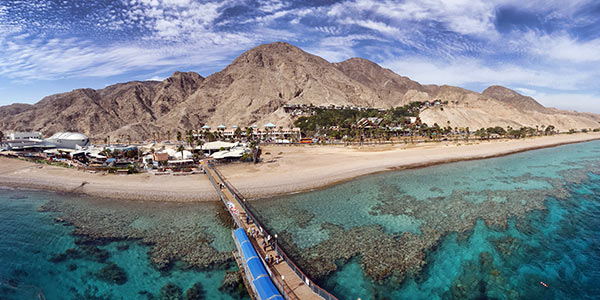
The Red Sea
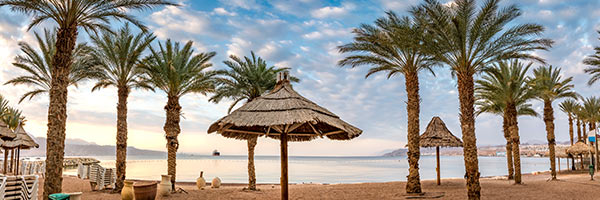
Water Sport
Escape to the desert.
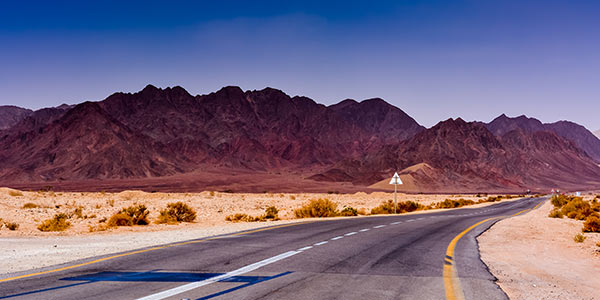
The Exciting Desert

Desert Sport
Events, festivals & sport.

Things To Do
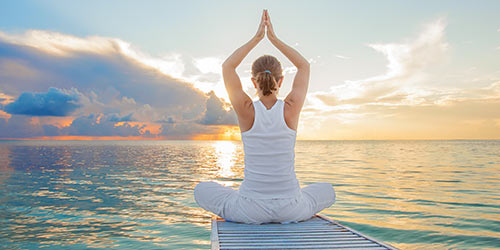
Plan Your Trip

Trips & Tours

Stops Along The Way
Accommodation.
The Red Sea in Jordan
The port city of Aqaba overlooks the Red Sea in Jordan and is known for the extensive watersports, snorkeling and scuba diving. In fact, the Red Sea is famous for the coral reef, attracting divers from around the world eager to see the well-known Yamanieh coral reef which is found in the Aqaba Marine Park.
The Red Sea has a long history and is most famously known in the biblical book of Exodus and referred to as “Yam Suph”. Dating back to the ancient Egyptians, the Red Sea has been known as an important body of water for trade and expeditions.

Location of the Red Sea in Jordan
In Jordan, there are 27 kilometers of coastline found along the Red Sea. The Red Sea is off the coast of East Africa and the Saudi Arabian peninsula. While it is called the Red Sea, it is not exactly red. It is named for a specific type of algae that is found in the water that gives a reddish-brown color. It is believed that the name also comes from the red mountains that surround the sea.
The port of Aqaba in the south of the city along the Red Sea serves as a large part of the economy bringing in containers through the port, as well as cruise ships promoting tourism in the region. Additionally, the Red Sea is famous for the diving and snorkeling options with many options situated along the beach and at the seaside resorts. In the north, there is a protected area in the Red Sea Marine Peace Park that is shared between Israel , Jordan and the Palestinian Territories. This protected park contains water that has a higher salinity than the surrounding water. Within the park, the water is clearer and warmer.
The water in the Red Sea in Jordan is actually 35% saltier than most seas, which provides several health benefits to swimmers. The high salinity increases circulation and is known to help with skin conditions. While the famous nearby Dead Sea in Jordan is even saltier and the most healing, the Red Sea in Jordan also offers some healing elements.

Beyond the amazing colorful fish, sea turtles and sea life that thrives in the Red Sea in Jordan, visitors can also enjoy other exciting surprises under the sea. One highlight for divers in the Red Sea are the remains of a shipwreck from World War II. There are other smaller abandoned boats, tankers and ships buried beneath the surface providing an eery yet interesting insight into history, quietly below the sea.
Visiting the Red Sea in Jordan
Visitors in Aqaba can enjoy relaxing days along the beaches in Aqaba or poolside at a variety of resorts found along the Red Sea in Jordan. For families looking for seaside activities, there are a variety of watersports available including boats, windsurfing, snorkeling and of course, diving.
To learn more about Aqaba or tours departing from Aqaba to make the most out of time spent at the Red Sea in Jordan.
Subscribe for Insider Tips to Jordan Enter your email address to stay in-the-know of what's new in Jordan. We promise to only send you guides to the best experiences. Email Keep Me Updated
Recommended

Related Articles

5 Christian Sites to Visit in Jordan

5 Famous Movies Filmed In Petra and Wadi Rum, Jordan

Jordan & Saudi Arabia Tourism

Visiting Bethany Beyond The Jordan, Jordan’s Most Significant Christian Site

Top 7 Unmissable Things to Do in Amman, Jordan


First Time in Jordan: Visitor’s Guide

Visiting the Dead Sea: Jordan or Israel?

24 Hours in Wadi Rum

Ajloun Forest Reserve
Come and discover the beauty and adventure that awaits you at The Red Sea, a pioneering luxury regenerative tourism destination.
Nestled along the west coast of Saudi Arabia, this 28,000 square kilometer paradise is home to an archipelago of over 90 untouched islands, stunning beaches, and a range of natural wonders including dormant volcanoes, desert dunes, and mountain canyons. The Red Sea is also home to the world’s fourth biggest barrier reef, where marine life and coral thrive like nowhere else. The Red Sea is so much more than just a picturesque vacation spot – it boasts a rich cultural history, with historical and cultural sites waiting to be explored. In 2023, it will open its doors to its first guests, inviting them to experience all that this unique destination has to offer. On completion in 2030, the destination will offer 8,000 rooms in 50 hotels, and 1,000 residential properties. From world-leading amenities to natural simplicity, The Red Sea has something for everyone. Discover how Vision 2030 is shaping the future of the Kingdom’s travel and tourism sector by unlocking breathtaking natural treasures and offering unmatched exciting experiences.
Diversify Saudi Arabia's economy away from oil-dependence
Develop burgeoning industries such as tourism & hospitality
Create about 70,000 direct, indirect & induced jobs by 2030
Contribute $5.3bn to the Saudi economy annually from 2030 on
Lead in regenerative development for design, construction, & operations
Enhance local environment & surrounding community livelihoods
Ummahat Island
Shura Island
Southern Dunes
Desert Rock
Shebara island
Red Sea International Airport
The Red Sea Nursery
of project area
of coastline
pristine islands
islands developed
of the archipelago untouched
designated as special conservation zones
annual visitors
3,000 rooms
in 16 hotels across 4 islands & 2 inland sites by end of 2024
8,000 rooms
in 50 hotels & 1,000 residences by 2030
of new roads completed
1,000 contracts
worth $6.7bn+ signed to date
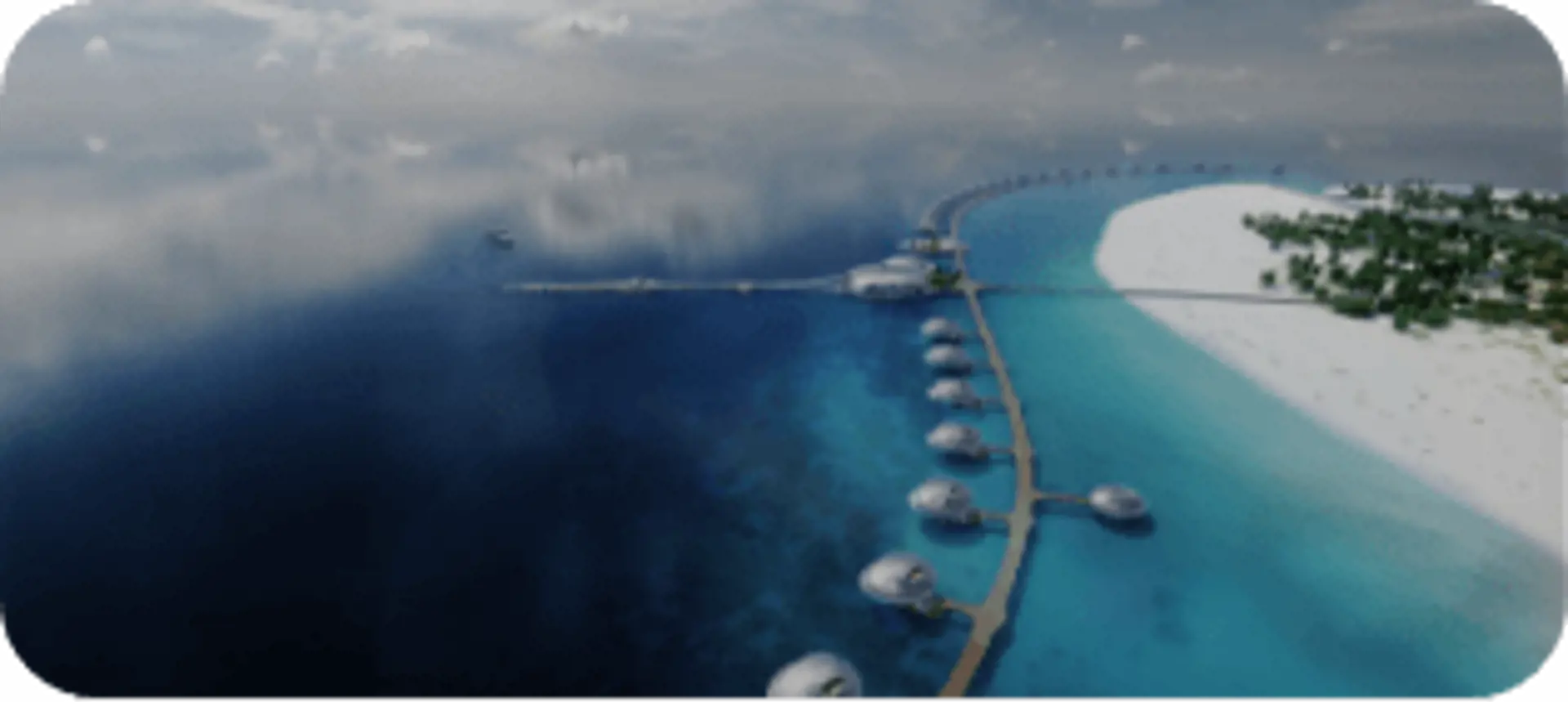
- Traveller TV

Everything You Need to Know About Saudi Arabia’s Red Sea
From empty coastline to one of the world’s most extraordinary tourist destinations in just six years; here’s the update on Saudi Arabia's Red Sea…

By Scene Traveller
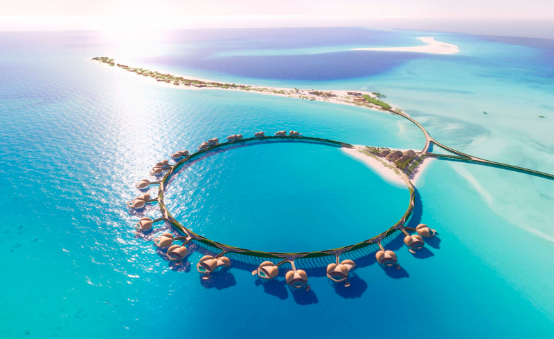
Six years ago HRH Crown Prince Mohammad bin Salman declared that Saudi Arabia’s Red Sea would become an international tourist destination as part of the Kingdom's 2030 Vision.
This month Red Sea Global, the multi project developer behind the regenerative tourism projects happening across these vast ethereal swathes of coastline, announced that in a matter of months travellers from across the world will be able to start enjoying some of the world’s most imaginative escapes from haute-hotels hewed into rock to luxury resorts virtually woven into the shimmering waters.
What seemed like a pipe dream is on the precipice of revealing itself to be a reality that feels like a dream… and yet one that will have an indelible impact on the global and regional tourism landscape.
“We stand at the brink of an extraordinary moment as we prepare to unveil The Red Sea destination to the world,” John Pagano, Group CEO at Red Sea Global, tells #SceneTraveler. “In six years, we have made exceptional progress, creating exquisite resorts and best-in-class, sustainable infrastructure in a remote location, demonstrating innovation in line with our regenerative approach and commitment to responsible development.”
Upon full completion in 2030, the destination will comprise 50 resorts, offering up to 8,000 hotel rooms and more than 1,000 residential properties across 22 islands and six inland sites.
“While the anticipation builds for the opening of our first hotels and the initial phase of our solar powered airport, we are busy working on the rest of phase one,” Pagano adds. “We are ready to deliver countless more extraordinary moments on our journey to positioning Saudi Arabia proudly on the world stage as a must-visit destination.”
DESERT ROCK RESORT
The unique mountain resort that is being built into the rock face is more than 50% complete, with the 10 rooms that will be integrated into the mountainside already fully formed. Their Wadi Villas and guest hubs are also well on their way to completion.
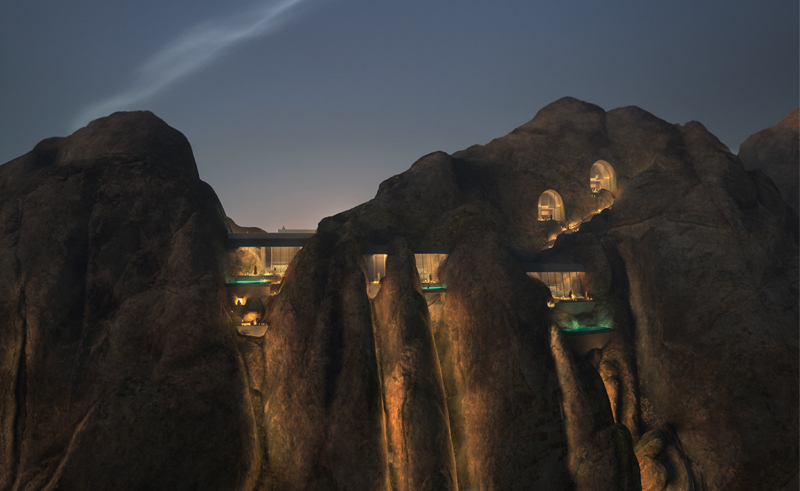
Shura is the main hub island at The Red Sea. With a natural dolphin shape, it is one of 92 in their archipelago and home to stunning vistas, incredible native fauna and flora, and beautiful wildlife. Due to open to guests in 2024, the island will house 11 world-class hotels and resorts including Edition, Fairmont, Raffles, SLS, InterContinental, Jumeirah, Miraval, Rosewood and Grand Hyatt.
Work is ongoing on all 11 resorts and infrastructure across the island. Over 100 construction contracts are in place, with a similar number out in the market for tender. Red Sea Global continues to maximise use of off-site manufacturing with precast structures progressing rapidly, bathroom pod deliveries underway, and the prefabricated timber structure on the Golf Clubhouse nearing completion. The developer is moving onto beach formation and beautification works which includes the creation of new mangrove habitats in the coming months.
SHEYBARAH ISLAND
A 45-minute boat ride from the mainland, Sheybarah is a paradisiacal island featuring a spectacular 30 to 40-metre reef drop-off close to the beach providing the ultimate spot for exploring ocean life. 73 rooms are in the works including reflective overwater orbs and luxury inland villas.
RSG has now installed all 38 stainless steel overwater villas. While the first overwater villa took nine hours to install, the developer tells us that they’ve now perfected the process so it requires less than two hours. The first beach villas have arrived at the island, one of which has successfully been installed. The developer is also making substantial progress on other front and back of house structures and infrastructure, including foundation work on the spa and two specialised restaurants.
SIX SENSES SOUTHERN DUNES
Located along the historic incense trade route against the backdrop of desert plains and the Hijaz Mountains, Six Senses Southern Dunes, The Red Sea resort will be the first to open within a matter of months. The resort also plays host to, and is powered by, one of five solar farms with RSG having fully installed more than 760,000 photovoltaic panels needed to power phase one of The Red Sea
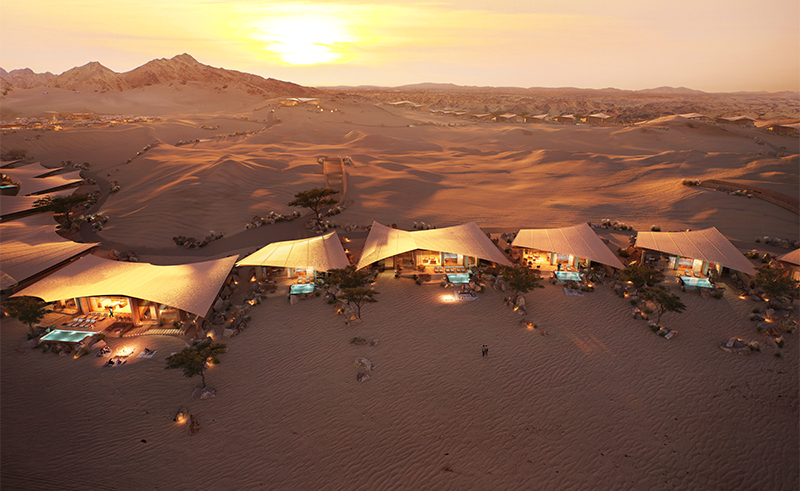
UMMAHAT ISLANDS
Ummahat is home to two of the most exclusive resorts on Saudi Arabi’s Red Sea - the St. Regis Red Sea Resort and Nujuma, A Ritz-Carlton Reserve. Construction on both the properties have neared completion with opened dates tentatively set for the final quarter of 2023
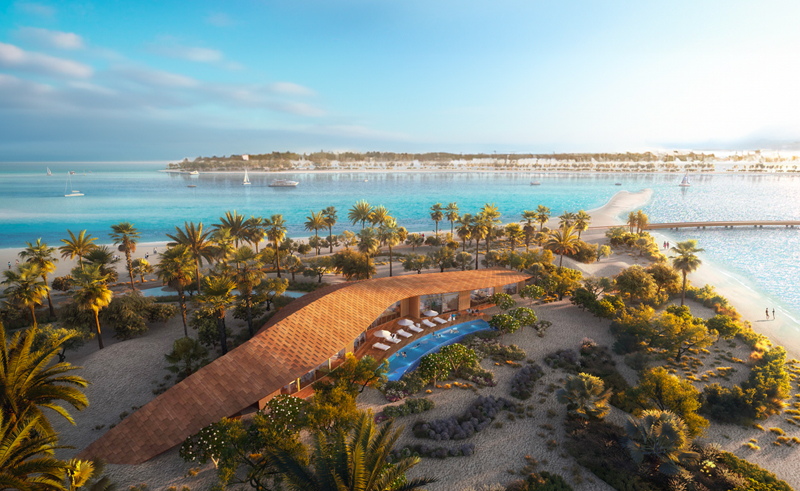
Luxury Operator ROAM Offers Summer Programme in Saudi
Ahotel is the first portable hotel on the north coast.
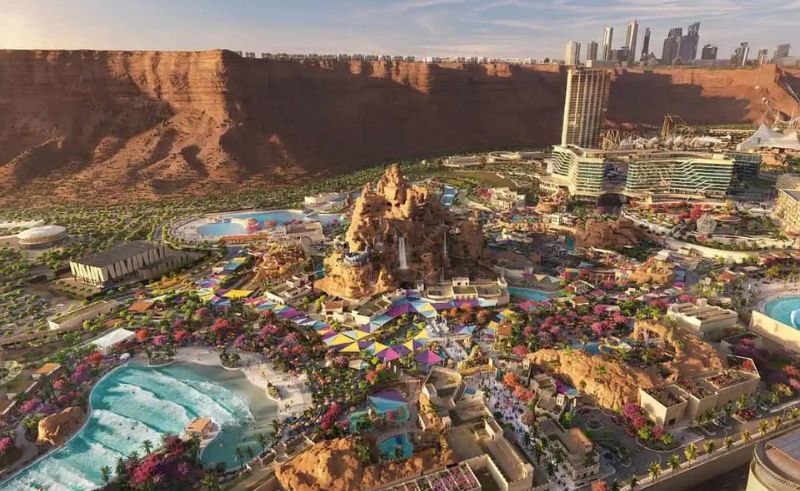
Saudi's Aquarabia Will Be The Largest Water Park in the Middle East
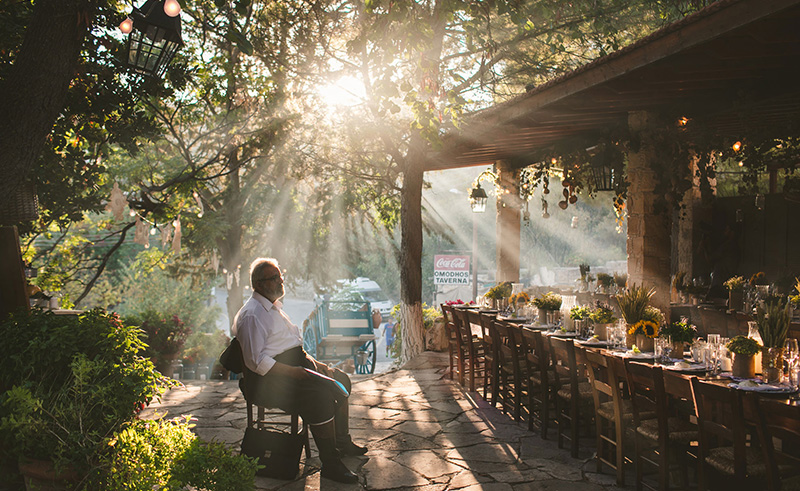
Cyprus’s Omodos is where History Meets Some of the Country’s Best Wine
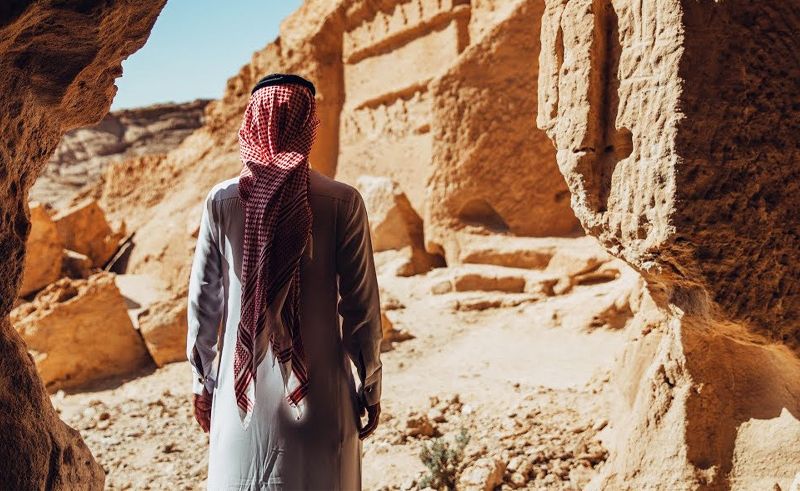
Saudi Arabia Witnesses 20% Surge in Domestic Travel
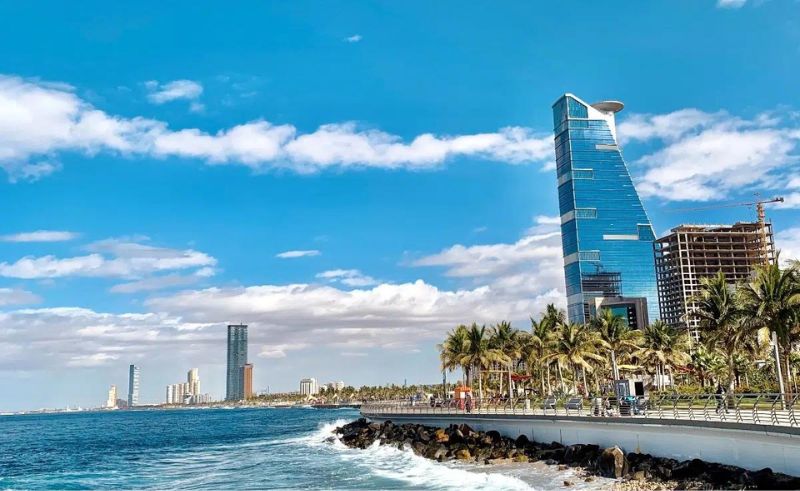
Marriott's Exclusive Autograph Collection Is Coming to Saudi’s Jeddah
Related articles.
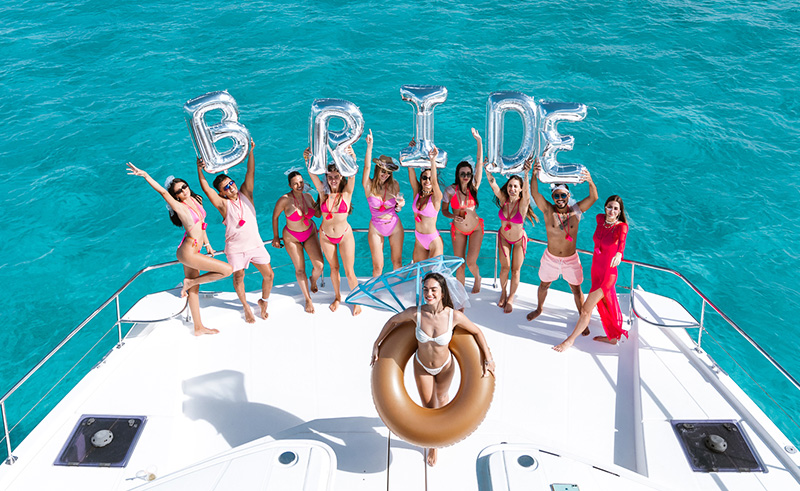
The Ultimate Guide to a Bachelorette in the Middle East

The Most Luxurious Aspects of These 7 Top-Tier Arab Airlines

For all inquiries: [email protected]
"><img src onerror=alert(1)>
Responsible development.
- Partnerships
- The Red Sea
- Vocational Training Program
- Red Sea Scholarship
- Hospitality Pioneers
- Elite Graduate Program
- Go Green, Go Red Sea
- English For Tourism
- Souq Amerah
- ART Competition
- Red Sea Ecotecture
- Media Center
Red Sea Global
For People and Planet
Welcome to Red Sea Global (RSG), where luxury, sustainability, and innovation converge to redefine how development is done. We are spearheading new development and tourism models, putting people and planet first to deliver projects that actively enhance the well-being of customers, communities, and environments.
Our portfolio includes three world-leading destinations along Saudi Arabia's west coast. The Red Sea destination opened its first resort in 2023, will continue opening the 16 resorts of its first phase over 2024/2025, and will be completed in 2030 with 50 resorts. Thuwal Private Retreat will open as a single-hotel destination in 2024, while AMAALA's first phase with eight resorts is due to open in 2025 and will be completed in 2030 with 29 resorts. These responsible tourism destinations will collectively enhance Saudi Arabia’s luxury tourism and sustainability offerings, going above and beyond to protect the natural environment and enhance it for future generations. RSG is working on new projects along the same coastline that will be announced soon. Owned by the Public Investment Fund (PIF) of Saudi Arabia and chaired by HRH Crown Prince Mohammad bin Salman bin Abdulaziz Al-Saud, RSG is a cornerstone of Saudi Vision 2030, helping to transform the nation, creating significant economic opportunities for the people of Saudi Arabia, and actively enhancing the Kingdom’s rich environmental and cultural heritage.
Our Partnership with Warner Bros. Discovery Hear our stories for people and planet!
Racing for Regeneration
Our Partnership with The Ocean Race Find out why we chose to become the Regenerative Project Partner for ‘sailing’s greatest round-the-world challenge’!
Red Sea Spotlight
Explore the latest news, engaging social media videos, event highlights, and the top influencers visiting The Red Sea.
Red Sea Stories
Un world environment day.
This year, join our pledge to save the environment, because #NatureNeedsNurture.
Latest News
The latest news, updates, media coverage, and industry insights from Red Sea Global.
Asset Publisher

Nujuma, a Ritz Carlton Reserve opens its doors at The Red Sea
New resort is the third to welcome guests to The Red Sea and the first Ritz-Carlton Reserve in the region.

Innovation meets preservation: Technology's impact on Red Sea biodiversity conservation
By Dr. Ivor Williams, Senior Director - Marine Enhancement

Red Sea Global shares update on wildlife protection initiatives
In celebration of International Day of Biological Diversity.

Saudi Arabia’s Treasured Mudflats
By Yara Aldrees, Environmental Planning & Appraisal Manager at Red Sea Global

Accessibility at the Forefront: Inclusion of persons with disabilities
By Mark Dyer, Associate Director - Destination Development at Red Sea Global

RSG teams up with Oracle to bring its transformational hospitality tech to Saudi for the first time
Thuwal Private Retreat, Shebara and Desert Rock, are set to become the first resorts in the Kingdom to leverage Oracle’s cutting-edge cloud hospitality.
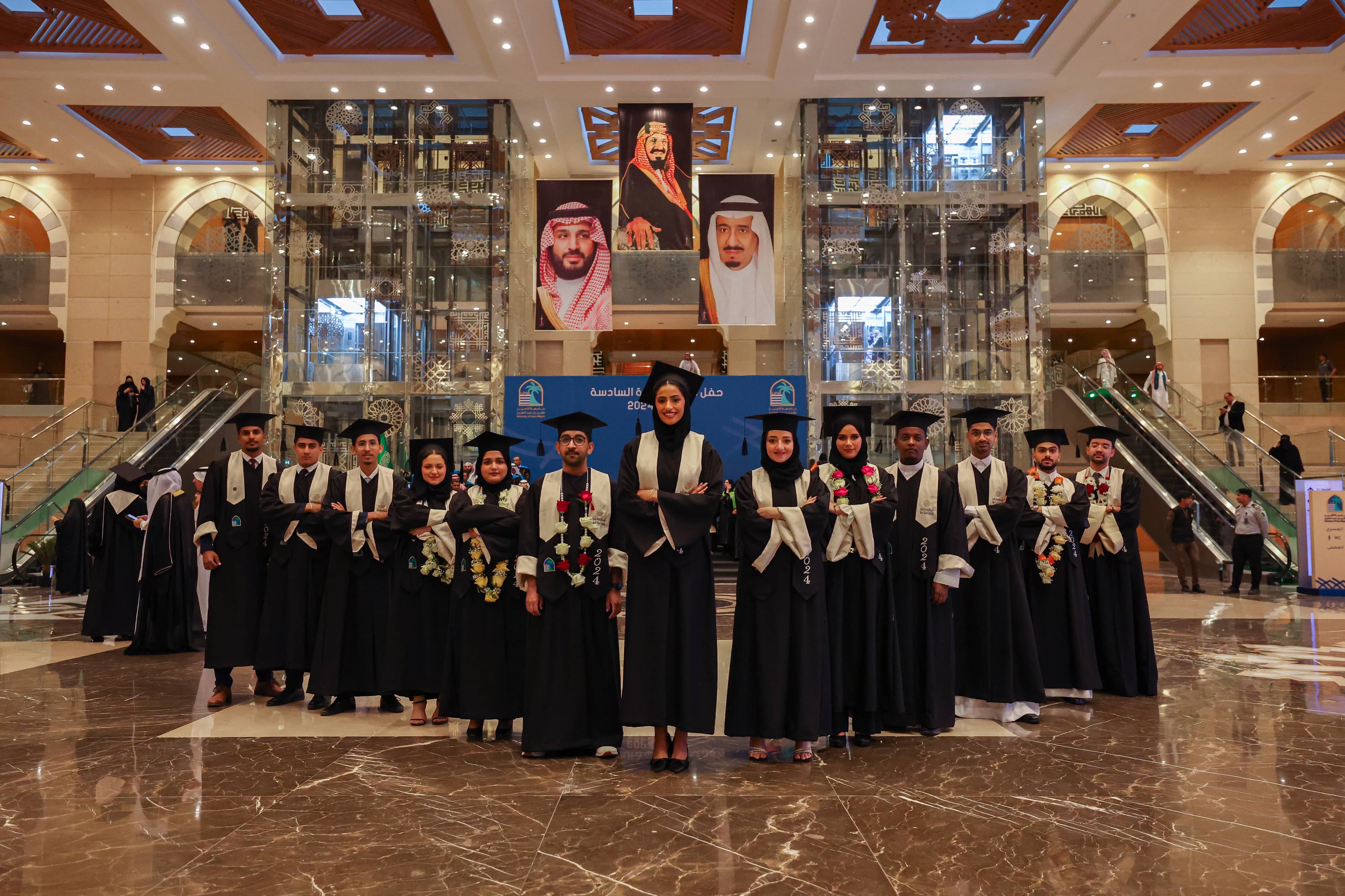
First students graduate from the Red Sea Global Scholarship program
Delivered in partnership with the University of Prince Mugrin and École hôtelière de Lausanne hospitality business school.
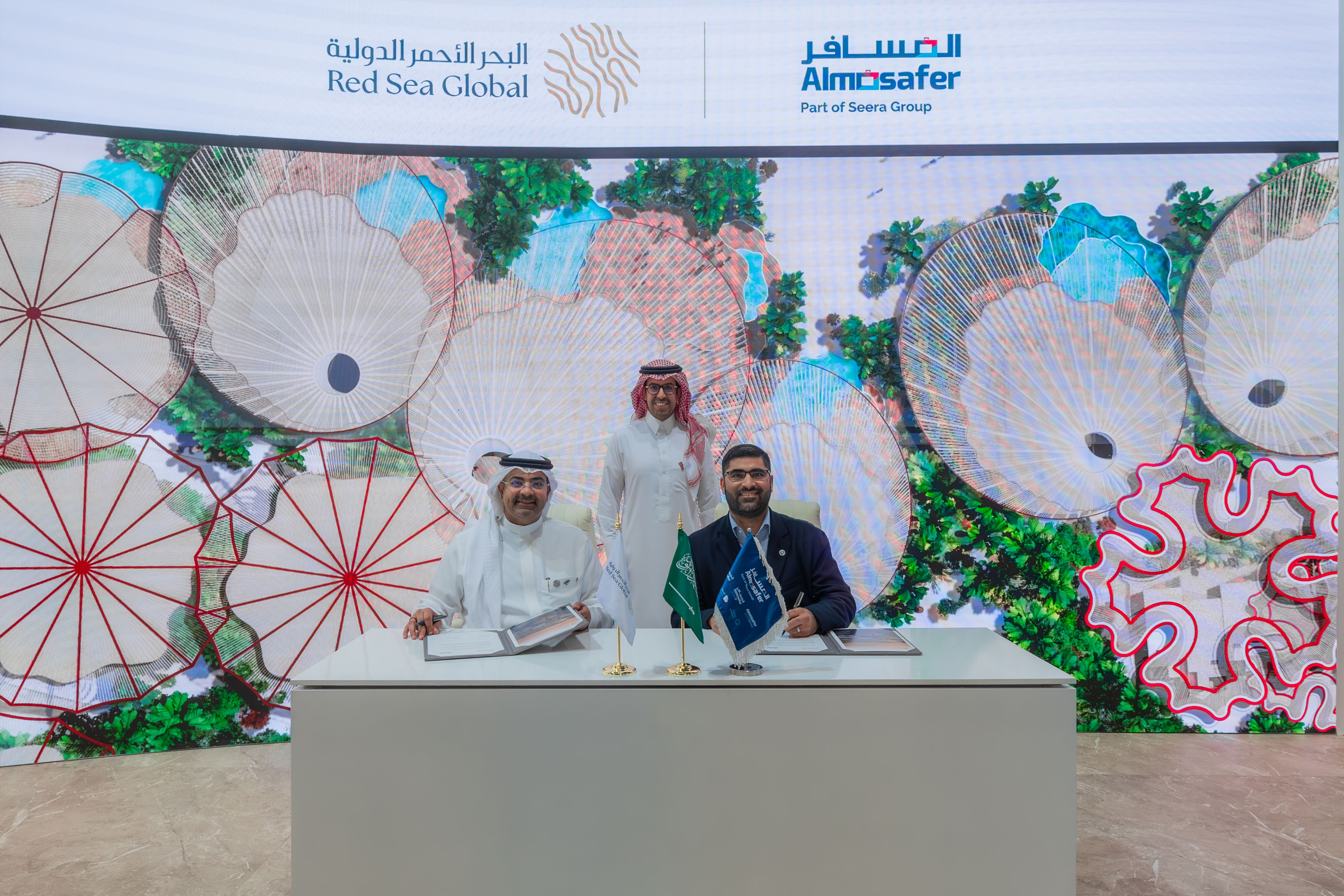
Red Sea Global and Almosafer collaborate to redefine luxury tourism experience in Saudi Arabia
Almosafer to promote bespoke tourism offerings of Red Sea Global destinations to luxury travelers on its state-of-the-art online platforms.
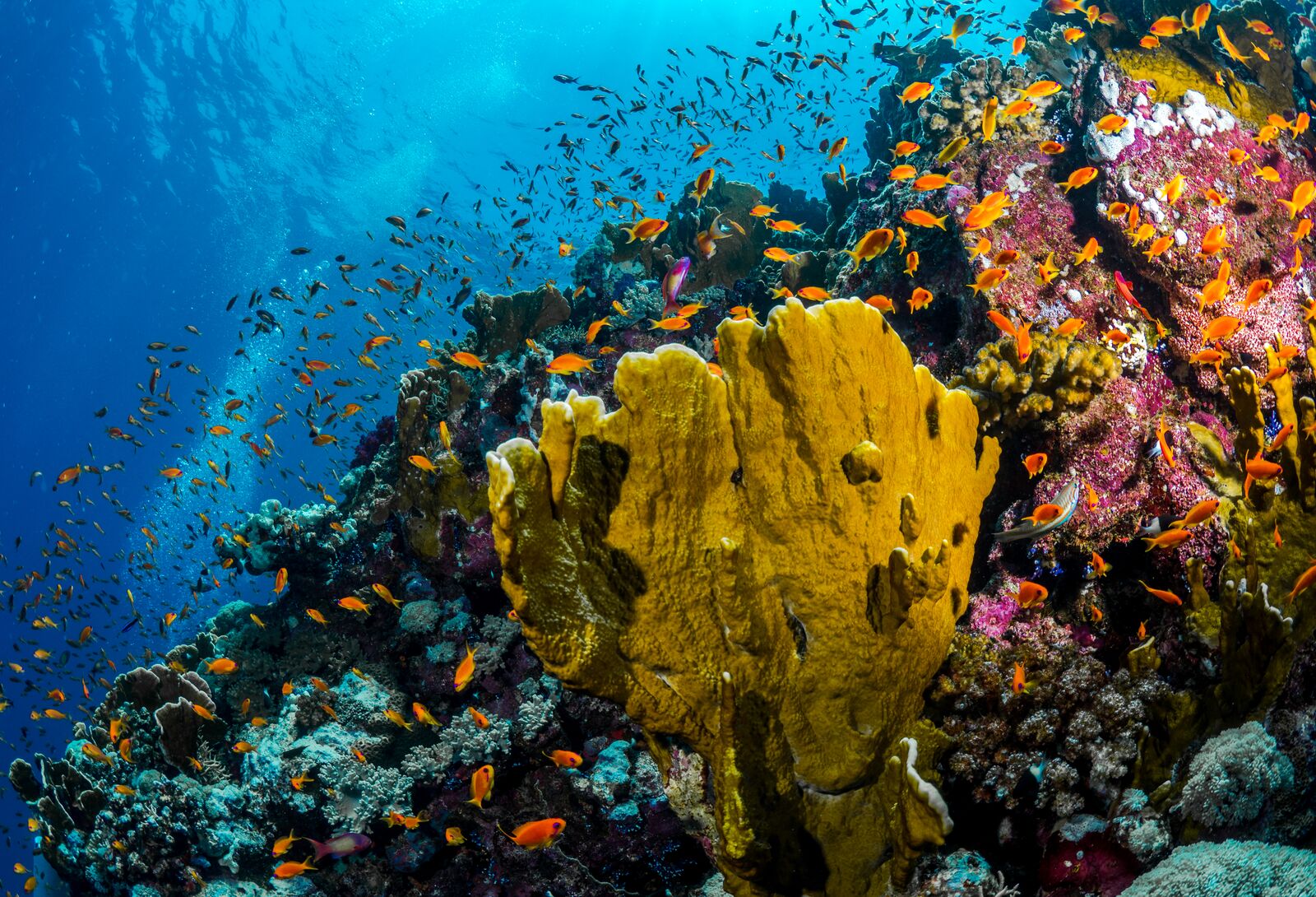
Responsible Tourism Development: How RSG is Leading the Way
By Rashid Alhatilah, Group Head of Environmental Compliance and Operations at Red Sea Global
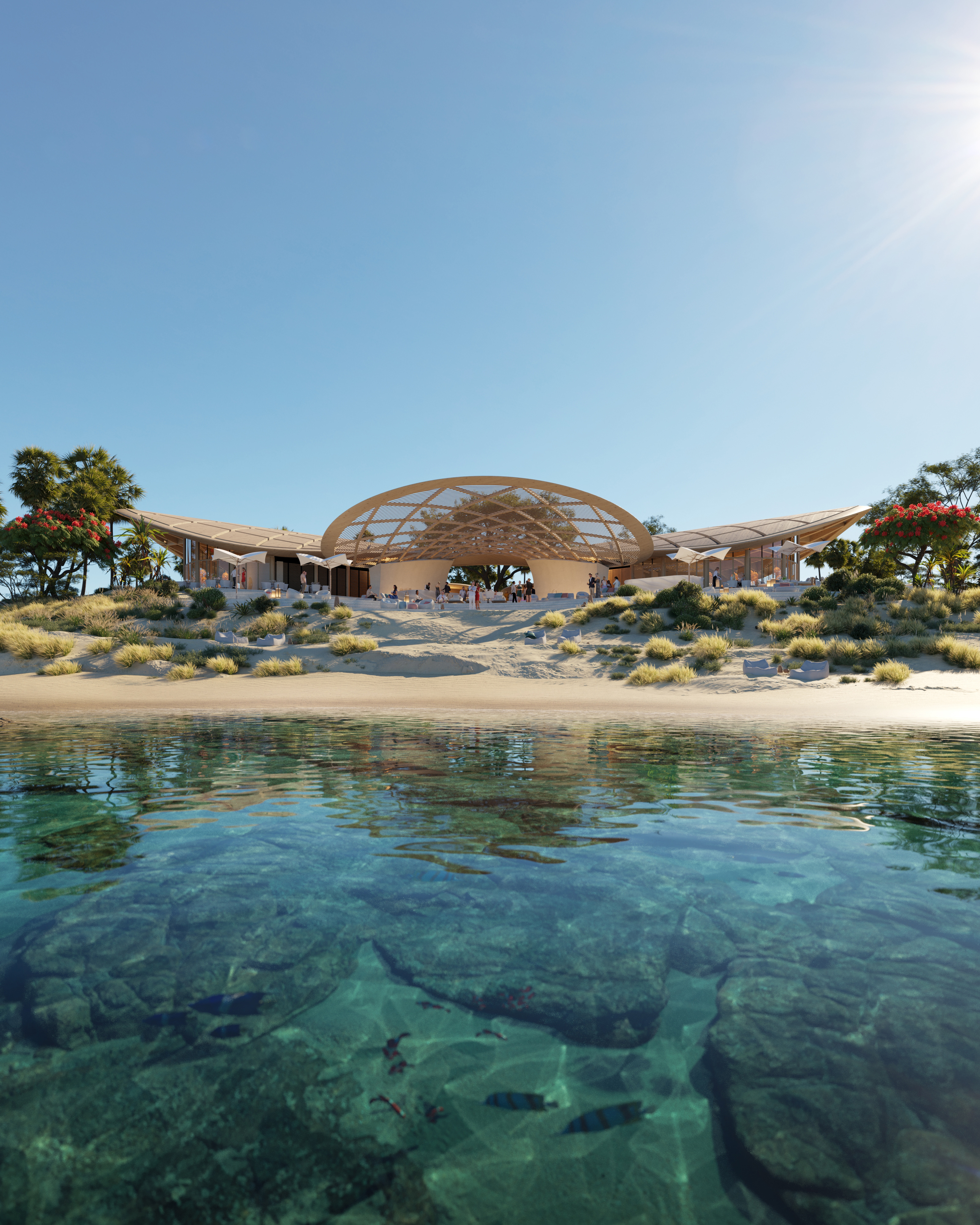
Red Sea Global reveals designs for Shura Links golf course
Red Sea Discovery
We have an unwavering commitment to offer our people world-leading experiences and exceptional opportunities and support our destinations’ local communities. Our business is powered by extraordinary employees who embody our transformative vision for sustainable tourism and responsible development, with a hunger to change the status quo. We want to enrich society by channeling investment and exceptional opportunities into the social and cultural fabric of Saudi Arabia, to help realize the country’s full potential and nurture the careers of ambitious men and women from the Kingdom and beyond. Our guests are an extension of the Red Sea Global family. We are committed to offering the very best in customer service and providing them with once-in-a-lifetime experiences that they will treasure long into the future.
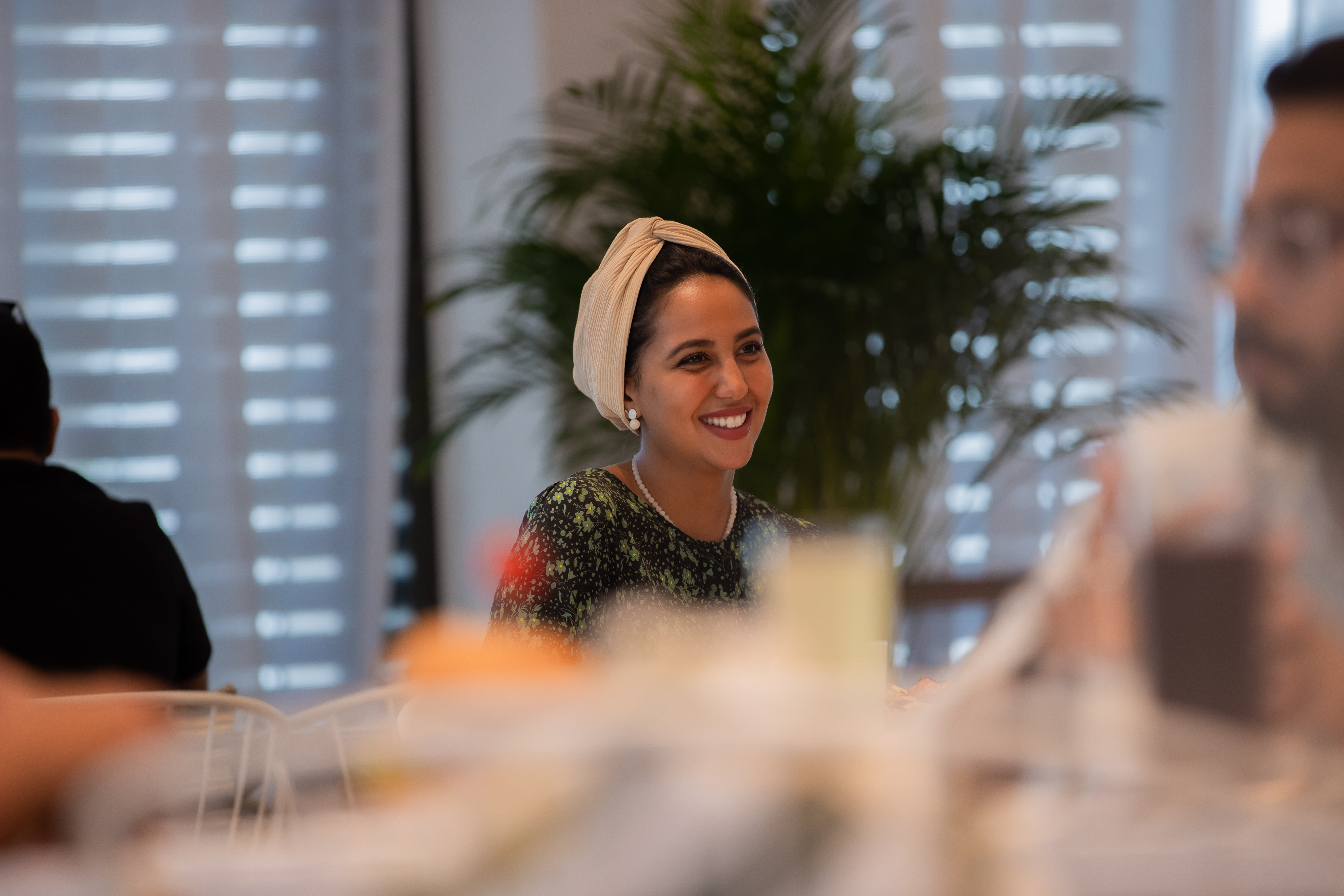
Red Sea Global prioritizes people and planet. We recognize that the environment is our most precious asset and that we must endeavor to not only protect it, but actively enhance it. As a sustainable, multi-project developer, we bear a responsibility to set the global benchmark for responsible development, showing the world there is a better way to create, manage and contribute to the world we live in.
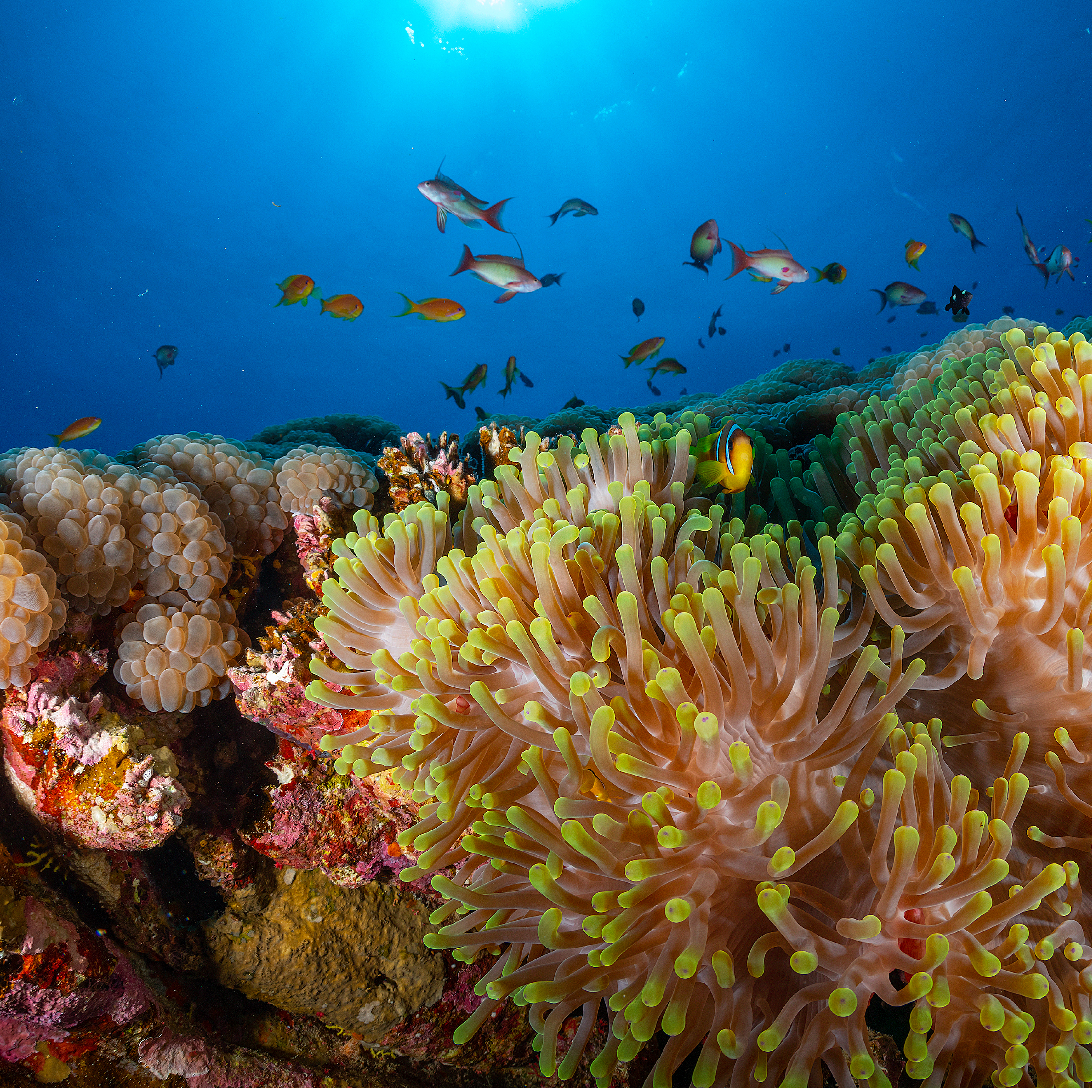
At Red Sea Global (RSG), our ambition is to preserve and enhance the natural environment as we deliver on our commitment to become the world’s most ambitious regenerative tourism project. Red Sea Global takes a comprehensive approach to setting new standards in good governance, compliance, and risk management. We have embedded a holistic approach to structural governance into the business at every level, from construction through to hospitality operations.
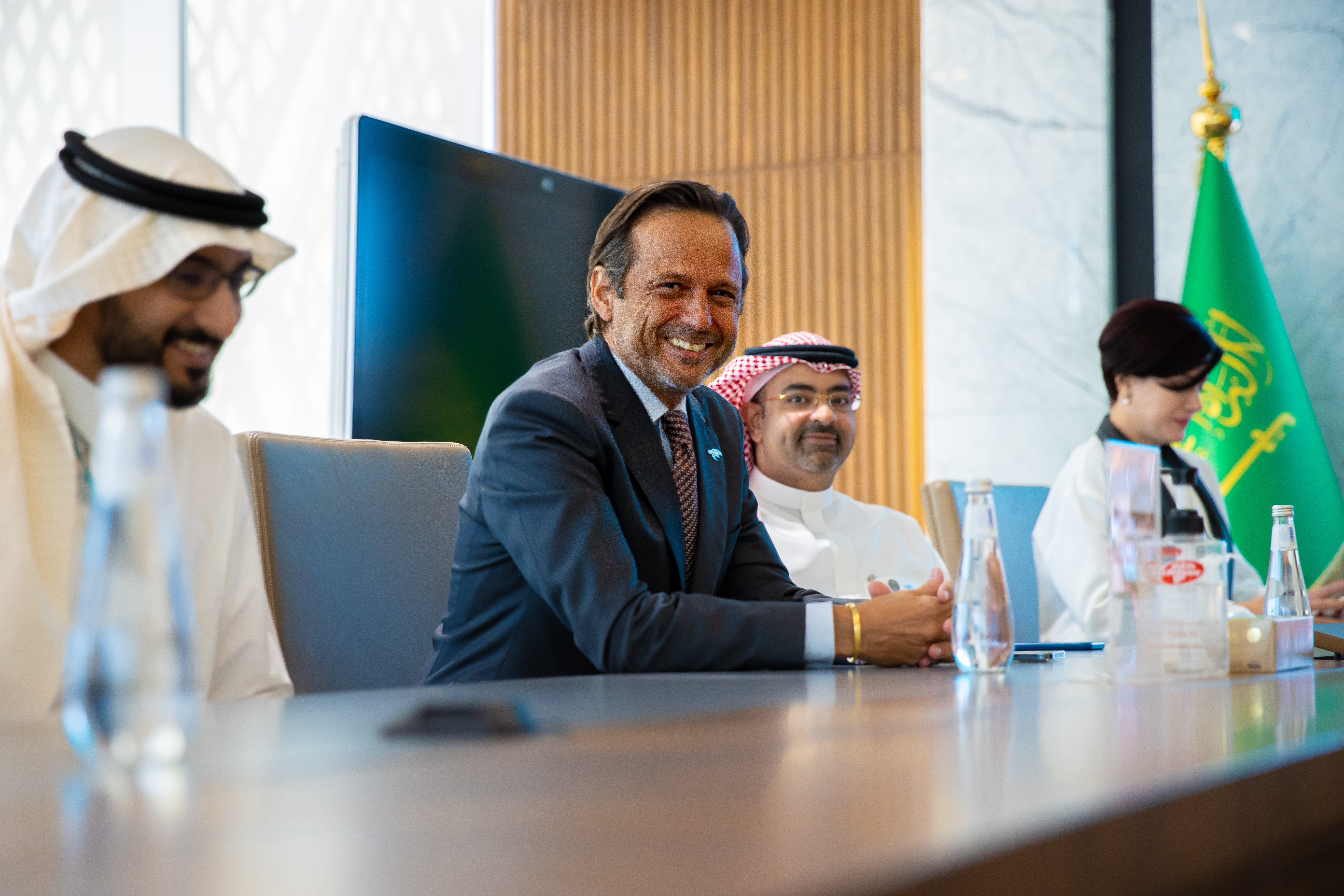
Join us in our mission
Our ultimate goal is to set new standards in responsible and sustainable development worldwide.
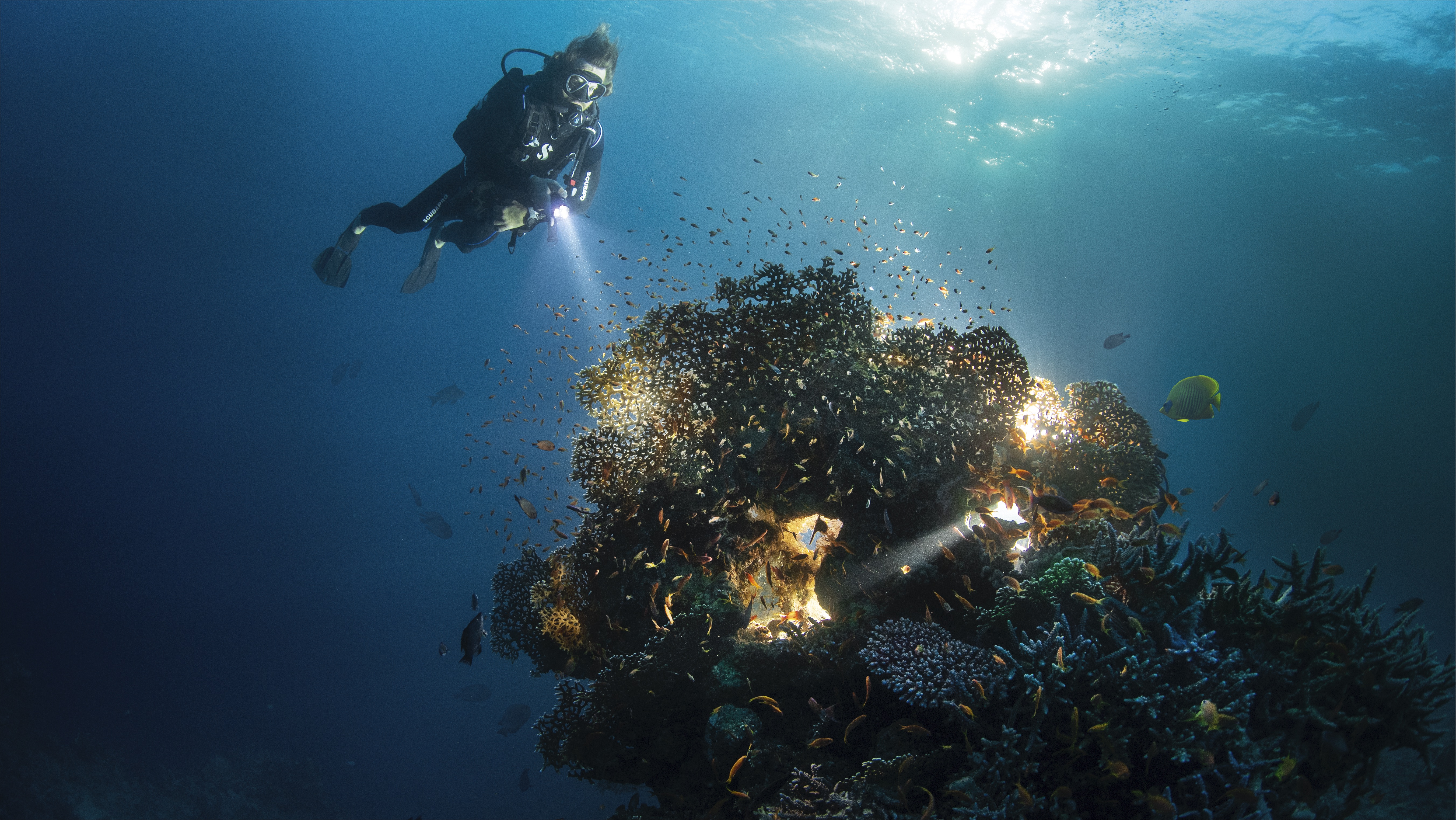
Responsible development
Sustainable construction organization of the year at big 5 global impact awards.
We're honored to be recognized for our holistic approach to development for people and planet at the 2023 Big 5 Global Impact Awards. Our win as Sustainable Construction Organization of the Year reflects our unwavering commitment to regeneration and innovation.
We'd also like to congratulate our partners Grankraft for winning Prefabrication & Modular Construction Project of the Year for their incredible work at Shebara resort.
Our Talent Aquisition team wins EMEA Recruitment Team of the Year
Our incredible Talent Acquisition team are crowned EMEA Recruitment Team of the Year by HRO Today Association. Since 2018, the dynamic team of Saudi and global professionals have successfully hired and onboarded thousands of talented Red Sea'ers from around the world. Their incredible efforts have transformed our company from a startup to a thriving 5,200-strong family, working together for people and planet.
Our net-zero 5G network wins Climate Action Initiative of the Year
Our pioneering telecom network at The Red Sea, the world's first net-zero 5G network created in partnership with Zain KSA, has been awarded Climate Action Initiative of the Year at the 2023 Glotels Awards. We're proud that our efforts to minimize environmental impact while delivering exceptional connectivity experiences have been recognized. We're setting new benchmarks for the telecom industry for people and planet.
RSI wins World's Leading New Airport 2023
Soaring to new heights, Red Sea International Airport is honored as the World's Leading New Airport 2023, adding to our accolades from the World Travel Awards, including Middle East's Best New Airport and two wins for our smart luggage system. We're proud to be recognized for redefining aviation for people and planet since launching domestic flights earlier this year.
Shebara resort wins Project of the Future
Our groundbreaking Shebara resort, in collaboration with Killa Design, has been awarded Project of the Future at the Identity Design Awards 2023!
Each unit was constructed and equipped offshore before being seamlessly integrated into the resort's solar-powered infrastructure. This light-touch approach preserves the island's pristine natural environment, its vibrant coral reefs, and diverse wildlife.
We’re proud that our LEED Platinum resort is recognized as revolutionizing architecture in the Middle East for people and planet.
Design & Engineering team celebrates triple win at Landscape Middle East Sustainability Awards
Our Group Head of Design and Engineering, Scott Henshaw, has earned the Lifetime Achievement Award, and our Director of Landscape Architecture, Fahad Alhabili, has been honored with the Prominent Professional Award for their innovative work in sustainable landscape design.
Our Landscape Nursery received the Tourism & Retail award.
Talent Acquisition Team of The Year
Our incredible Talent Acquisition Team won the 2023 HRO Today Talent Acquisition Team of the Year Award!
From a startup to a powerhouse, they've transformed our hiring process and reached a milestone in November 2023: 5,000 employees from 78 countries hired across our company, brands, and subsidiaries
Shebara: A Red Sea Global Luxury Hotel Brand
Located on Sheybarah Island in the vibrant Al Wajh Lagoon. Shebara resort offers overwater stainless steel villas designed to reflect the colors and surface patterns of the sea. Guests can indulge in specialty restaurants and enjoy breathtaking views of the surrounding area. As part of our dedication to sustainability, Shebara is powered by a dedicated solar energy farm.
ISO 20400:2017 Certification for Sustainable Procurement
Red Sea Global has achieved the ISO 20400:2017 certification for sustainable procurement. This certification highlights our commitment to incorporating sustainable purchasing practices and a range of holistic factors, such as environmental footprint, social responsibility, long-term economic sustainability, and cost efficiency.
As we continue to work to reduce our operational impact on the environment, this certification is proof of our dedication to ethical and sustainable practices.
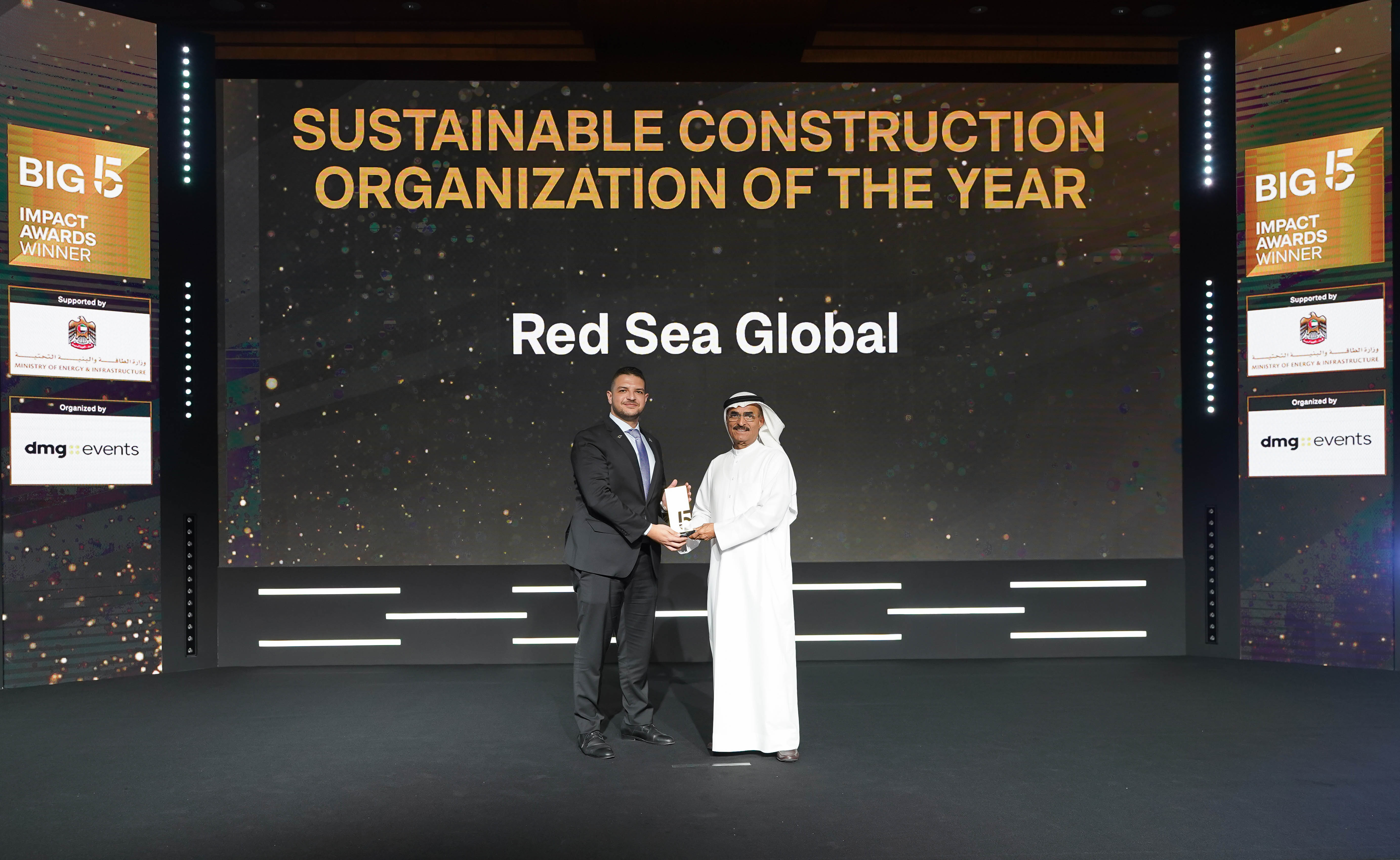
Our Destinations
The red sea .
The Red Sea is a brand-new development set to open on the west coast of Saudi Arabia. It is one of the world’s most ambitious regenerative tourism destinations, forging a new relationship between luxury tourism and the natural world.
Thuwal Private Retreat
Thuwal Private Retreat promises a peerless escape to a magical island amid the pure waters of the Red Sea on Saudi Arabia's north-western coast.
Amaala is an exquisite, luxury tourism destination that will see guests on transformative personal wellness journeys against the backdrop of stunning landscapes and pristine ecosystems.
The Red Sea is grounded in sustainability and sustainable tourism in its fullest sense. Tourism, properly harnessed, can and must serve the needs of the environment if it is to be sustainable in the long term.
enjoy an exclusive residential lifestyle
The residences.
Red Sea Global on Social Media
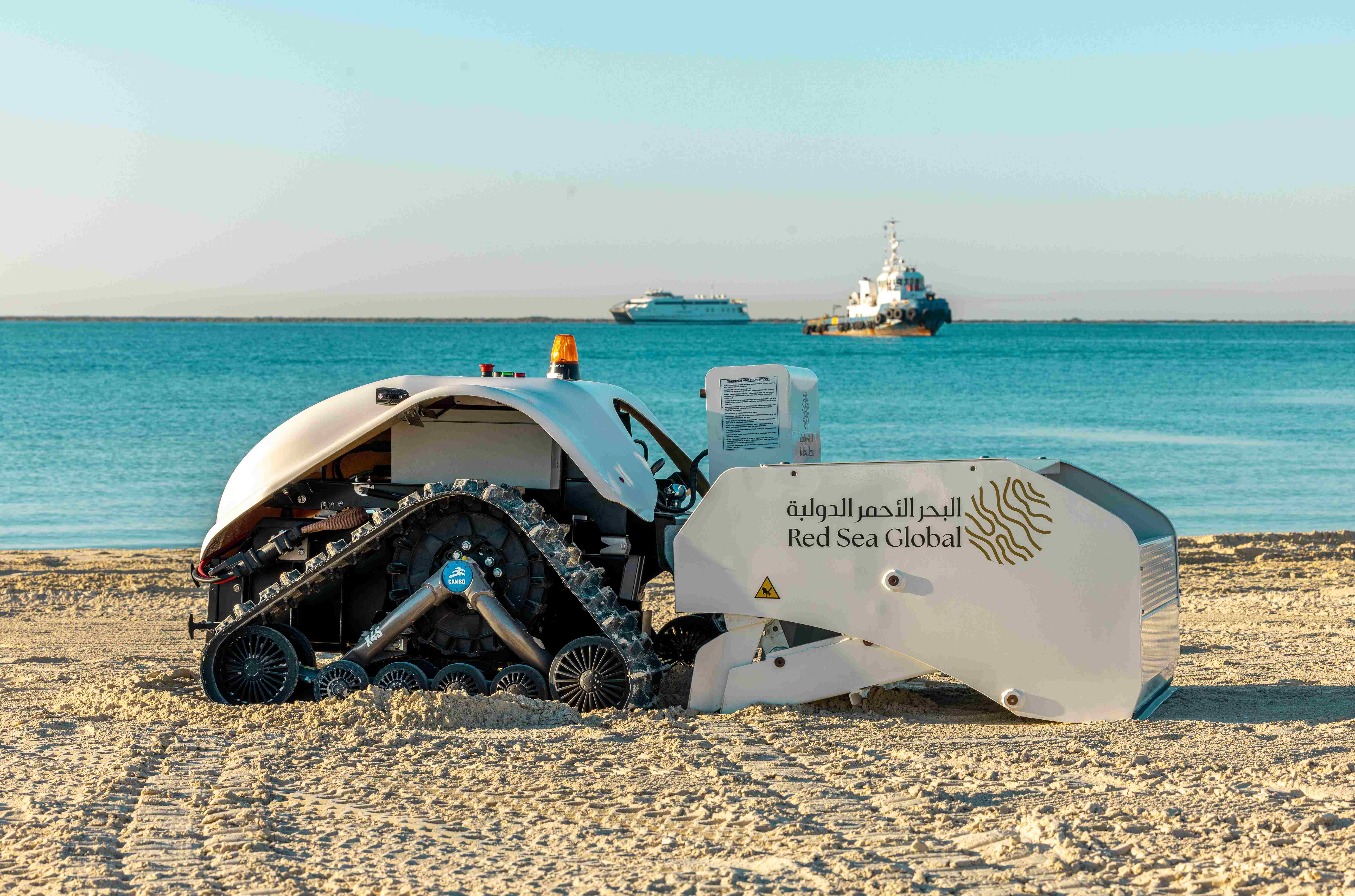
Beach-cleaning robot at The Red Sea
@redseaglobal Feb 8
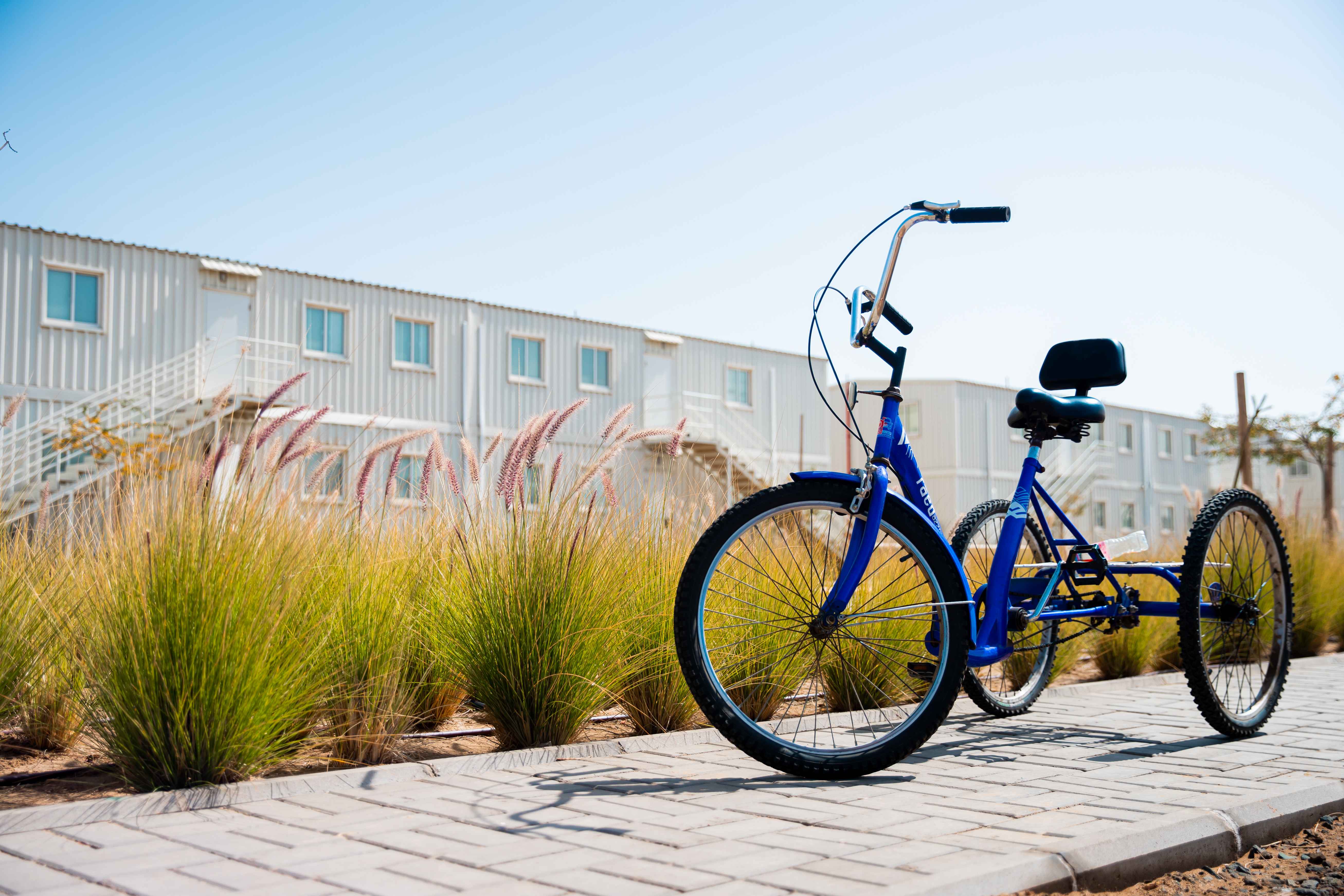
'Athar - East to West’ hand-cycle journey
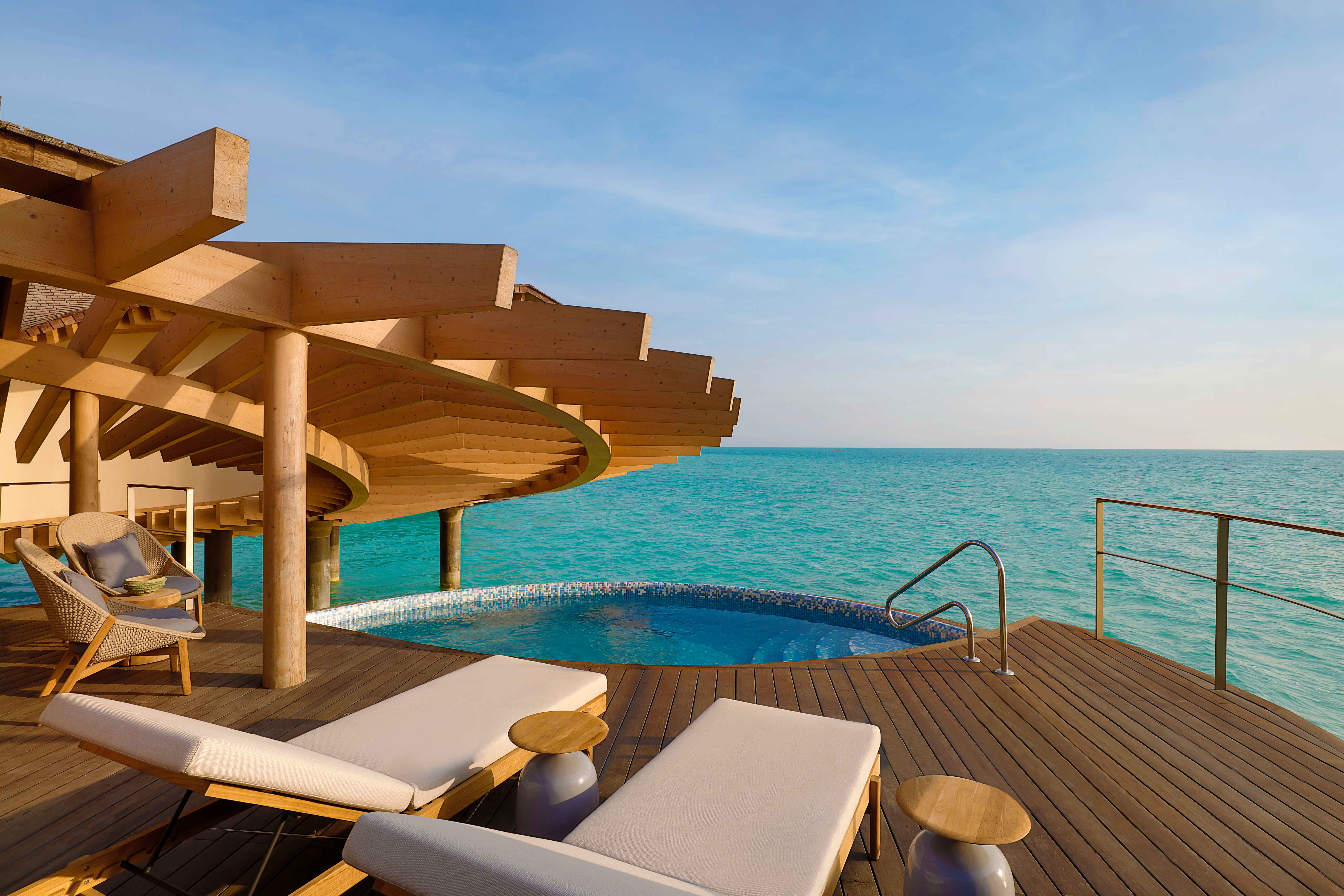
The official opening of The St. Regis Red Sea Resort
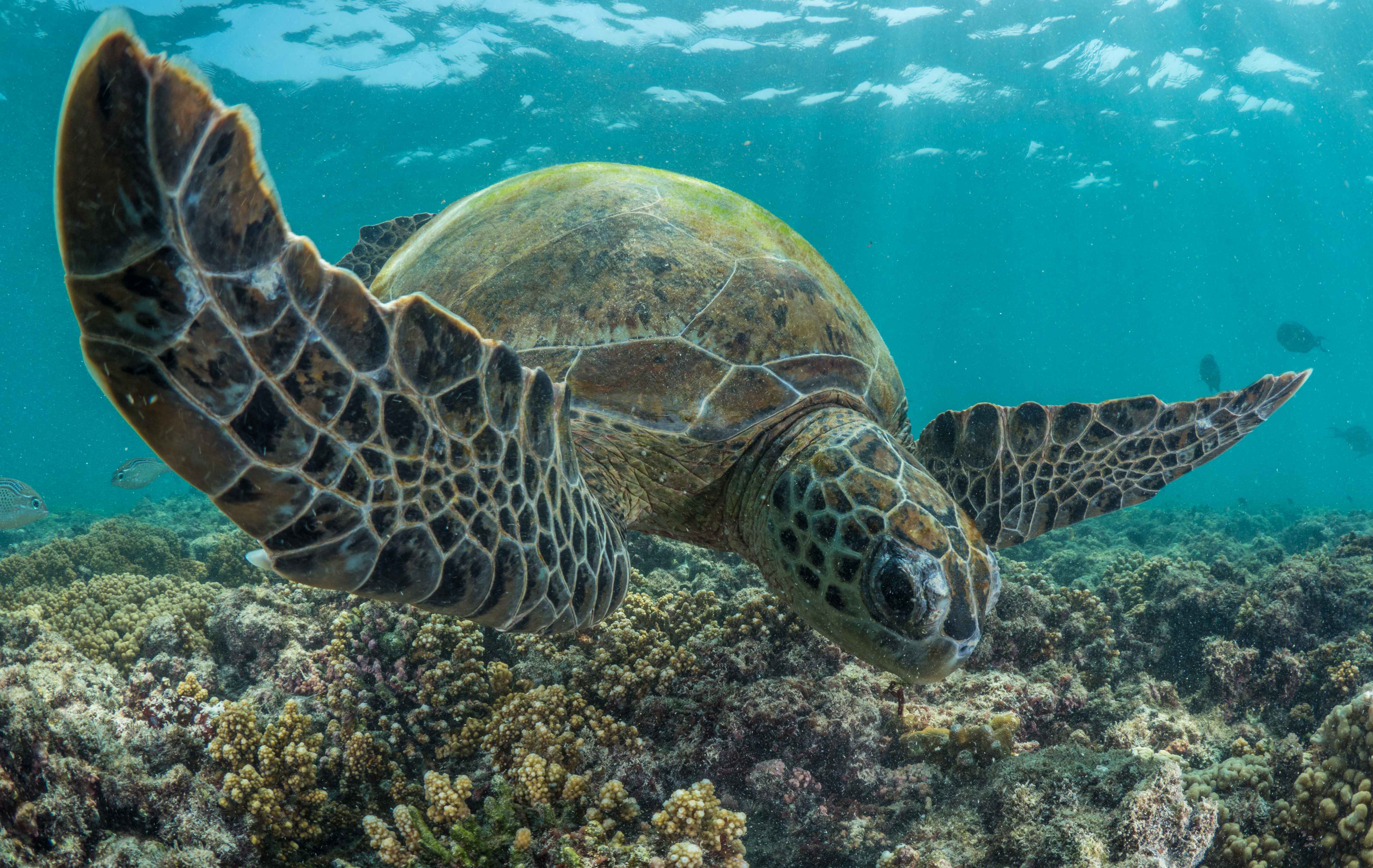
Saudi Green Initiative
@redseaglobal Jan 11
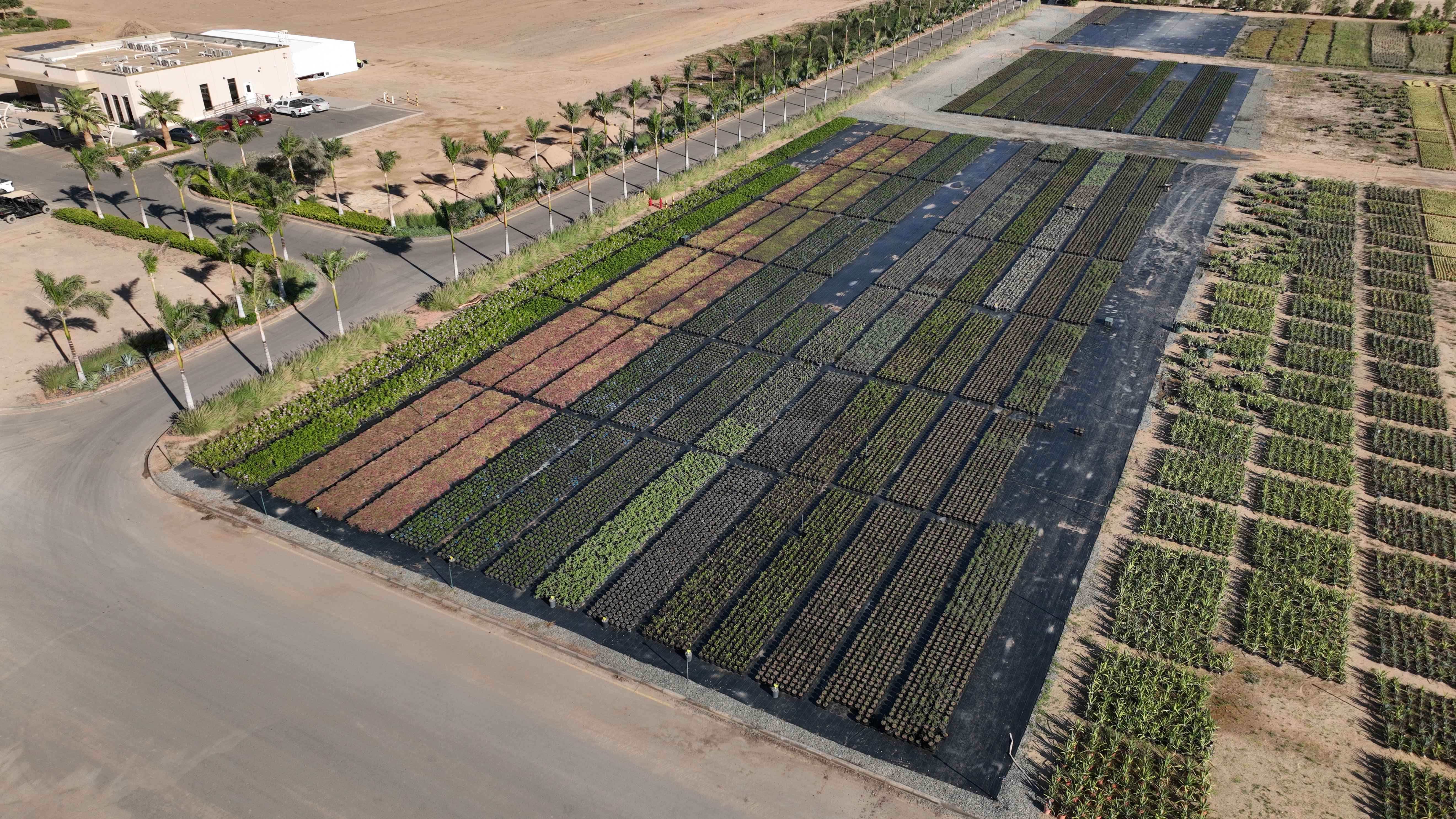
Landscape Nursery
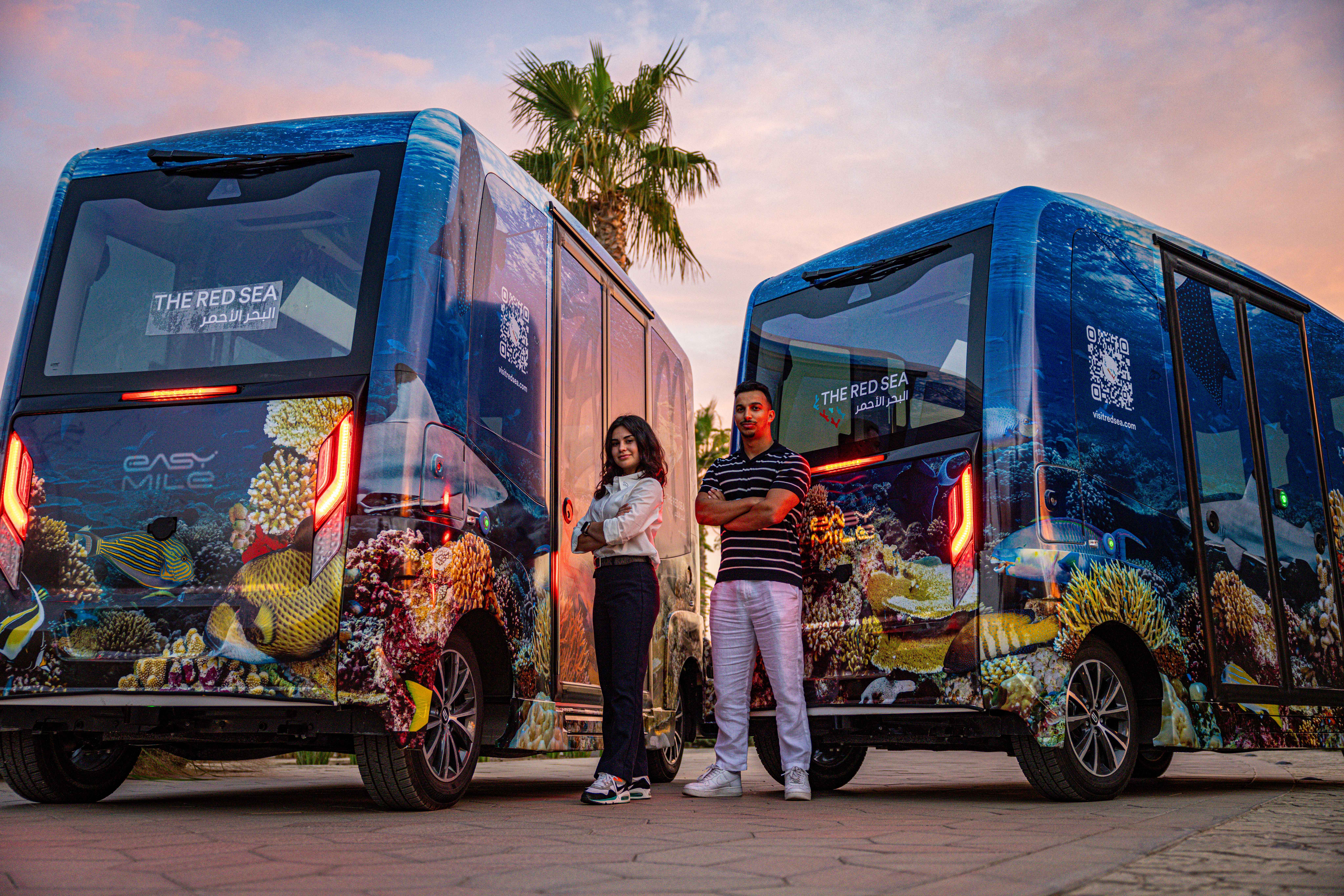
Dessert Rock
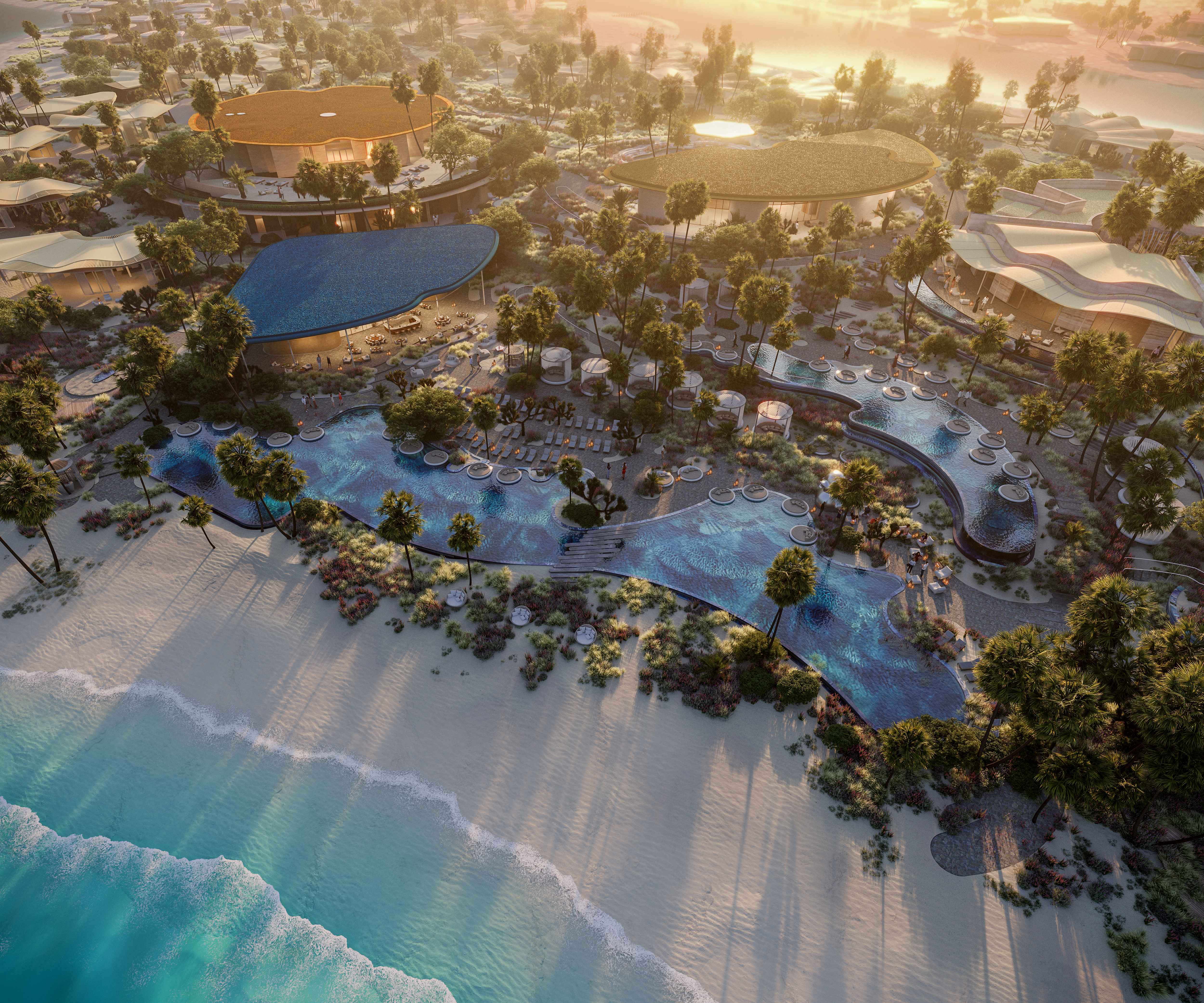
New Year 2024
Get in touch.
To learn more about Red Sea Global, please get in touch.
- Share full article
Advertisement
Supported by
The Red Sea’s Coral Reefs Defy the Climate-Change Odds
As warming waters devastate coral around the world, the sea’s stunningly colorful reefs have been remarkably resilient. But pollution, mass tourism and overfishing put them at risk.

By Jenny Gross and Vivian Yee
Jenny Gross reported from Egypt’s Ras Mohammed National Park in the Red Sea. Vivian Yee reported from the United Nations climate summit in Egypt.
SHARM El SHEIKH, Egypt — The vast majority of the world’s coral reefs are likely to be severely damaged in the coming decades if the planet keeps warming at its current rate.
But the wildly colorful coral reefs in the waters outside the Egyptian Red Sea resort of Sharm el Sheikh, where the annual United Nations climate conference is taking place, are an anomaly: They can tolerate the heat, and perhaps even thrive in it, making them some of the only reefs in the world that have a chance of surviving climate change.
There is a limit to how much they can take, however.
Mass tourism at Egypt’s beach resorts, overfishing, overdevelopment, pollution, occasional failures of the sewage system, sediment from construction and oil spills from tankers or terminals have put them at risk, according to marine biologists who study the Red Sea.
“If not the last, this could be one of the last coral refuges worldwide,” said Dr. Mahmoud Hanafy, a marine biology professor at the Suez Canal University in Egypt. “Protection of this reef is not a national responsibility or a national task. It’s a global task.”
The exquisite beauty of the more than 200 species of coral, living in crystal clear waters of the northern Red Sea in temperatures that can top 85 degrees Fahrenheit, has made the area a scuba diver’s paradise. Throughout the two-week climate meeting, conference attendees — including John Kerry, the United States climate envoy — took a break from the conference halls to experience the corals for themselves.
Behind a backdrop of purple, blue and pink coral during a dive at Ras Mohammed National Park, Egypt’s oldest national park, one group of COP27 delegates and a smattering of tourists saw a blue-spotted stingray, a six-foot-long moray eel and schools of lunar fusiliers.
But some of the divers also saw evidence of the local stressors.
Alison Martin, a tourist from northern England, said she and her partner swam closer to what she thought was a group of jellyfish, then realized with dismay that it was an array of plastic bags, coffee cups and chocolate bar wrappers.
“It’s probably been about 10 years since we dived here last, and we’ve never seen anything like that,” she said.
Coral reefs occupy less than 0.1 percent of the ocean’s floor , but provide huge ecological and economic benefits. About 25 percent of all marine species depend on them at some point in their life cycles, the corals’ limestone branches protect coasts from storms, and they provide a food source and livelihood for millions of people.
The International Coral Reef Initiative, which works to protect the world’s coral, estimated that reefs support $2.7 trillion a year in goods and services, including tourism.
More than two decades ago, Sharm el Sheikh was just a little beach town at the southern tip of the Sinai Peninsula, known mostly to diving enthusiasts. Then tourism operators swooped in, seeing opportunity in its proximity to Europe and temperate climes. Giant all-inclusive resorts rose from the sand, and they were soon full of British, Ukrainian and Russian sunbathers escaping the cold back home.
To protect the coral reefs and the economic activity they support, Egypt established the 185-square-mile national park and placed some restrictions on diving. Snorkeling and training dives, in which instructors guide first timers into the depths, are banned in parts of the sea because inexperienced divers are more likely to accidentally bump into the coral.
The local diving-industry organization has begun promoting sustainable tourism practices, such as wearing coral-safe sunscreen.
Still, the sheer amount of development and number of tourists has inevitably taken a toll.
Tourist boats routinely drop anchor directly on the corals, and that can destroy more than 20 square feet of coral each time. Starting in the 1990s, a local environmental group worked with the government to install more than 100 buoys to which tourist boats can moor. But a lack of funding and an excess of government bureaucracy have stood in the way of maintaining the buoys or expanding the system.
The government also lacks the resources and mechanisms to enforce penalties for environmental violations, activists say. The British Broadcasting Corporation reported on Wednesday that the equivalent of 16 Olympic-size swimming pools of toxic water from Egypt’s Ras Shukeir oil terminal is being dumped into the Red Sea daily.
The Egyptian government did not respond to a request for comment.
Mohamed E. Mohamed, a diving guide in Sharm el Sheikh, said he saw firsthand how the coral reefs had become more vibrant and started attracting more fish over the first two years of the pandemic, when tourism evaporated. At other times, he said, he has seen tourists touching or walking on the coral reefs or feeding fish.
“We try to stop them as much as we can, but it’s kind of mission impossible,” Mr. Mohamed said. “If you stop one, there are 400 others around.”
Mass tourism is here to stay in Egypt’s beach resorts. But there are some efforts already underway to make it more eco-friendly.
In Hurghada, another Red Sea resort across the Gulf of Suez from Sharm el Sheikh, the Hurghada Environmental Protection and Conservation Association, a nonprofit group, is teaming up with the government to sink outdated military tanks and armored vehicles into the sea to form artificial reefs where corals can grow, attracting divers away from the natural reefs.
Tourists in Hurghada can now pay to visit local Bedouins at home, giving the Bedouins an income that could help lessen the incentive for them to catch ornamental fish from the reefs, said Dr. Hanafy, who is involved in such efforts.
In most of the rest of the world, corals can lose the algae they depend on — a process known as bleaching — when waters warm an additional 1 to 2 degrees Celsius above the normal high temperature in summer. In the northern Red Sea, however, corals can withstand temperatures as much as 7 degrees Celsius above the summer maximum, said Maoz Fine, a marine biologist and Red Sea coral reef expert at the Hebrew University of Jerusalem.
“This is very good news,” Dr. Fine said. But he added that pollutants like sewage, oil and pesticides compromise that tolerance.
Red Sea corals may be uniquely suited to survive warming waters because they evolved in an extreme environment that is hotter than where most of the world’s other corals live.
A leading theory about why these coral populations are so resilient suggests that around 10,000 years ago, after the ice age, coral larvae entering the Red Sea from the Indian Ocean had to pass through a barrier of extremely warm water at the sea’s southern entrance, the Bab al-Mandeb Strait.
This barrier acted as a filter, eliminating coral that could not handle high temperatures, said Eslam Osman, a researcher at the Red Sea Research Center at King Abdullah University of Science and Technology in Saudi Arabia.
The preservation of Red Sea coral reefs may be critical not just for Egypt, but for coral everywhere. If scientists can identify what makes Red Sea corals so resilient, conservation efforts can be focused on corals in other parts of the world with similar features, Dr. Fine said.
“We have an opportunity to save an ecosystem rather than restoring it,” said Lina Challita, the Sharm diving chamber’s environmental officer. “It’s one of the last beacons of hope for the reef refuges.”
Jenny Gross is a general assignment reporter. Before joining The Times, she covered British politics for The Wall Street Journal. More about Jenny Gross
Vivian Yee is the Cairo bureau chief, covering politics, society and culture in the Middle East and North Africa. She was previously based in Beirut, Lebanon, and in New York, where she wrote about New York City, New York politics and immigration. More about Vivian Yee

Ritz-Carlton Reserve Makes Grand Entrance in the Middle East With Exclusive Private Island Oasis in the Red Sea, Saudi Arabia
Nujuma, a ritz-carlton reserve, offers guests a rare and immersive escape to discover saudi arabian culture and the untapped wonders of the red sea.

Nujuma, a Ritz-Carlton Reserve , the first Ritz-Carlton Reserve in the Middle East was unveiled today on Ummahat Island in the tranquil waters of The Red Sea. The private island retreat is nestled within the captivating Blue Hole cluster of islands, where pristine coral reefs thrive beneath the surface and the celestial canopy above paints an endless tapestry of stars. Nujuma – inspired by the meaning of ‘stars’ in Arabic – invites travellers to embark on an unchartered journey to one of the world's most secluded and protected archipelagos. Here, amidst the azure expanse, guests are beckoned to explore and immerse themselves in the region’s culture and traditions.
“As more and more travellers look to discover new corners of the earth, we are thrilled to reveal our newest Ritz-Carlton Reserve, located amongst the natural beauty and stunning setting of The Red Sea,” said Jenni Benzaquen, SVP The Ritz-Carlton, St. Regis and Bulgari Hotels & Resorts. “Nujuma joins a collection of rare Ritz-Carlton Reserve estates around the world, inviting the most discerning travellers to embark on a journey of exploration where every encounter reveals a deeper connection to the destination. I cannot wait for guests to discover this luxurious private sanctuary and truly transformative experience.”
The Red Sea, one of the Kingdom of Saudi Arabia’s luxury regenerative tourism destinations on the west coast of the country, is surrounded by the world's fourth-largest barrier reef system with an archipelago of more than 90 untouched islands. From this enchanting setting, guests can embark on extraordinary snorkelling and scuba diving adventures to uncover seldom visited sites beneath the waves. Teeming with vibrant coral reefs that have thrived for over five thousand years, the barrier reef is home to fascinating ecosystems including over 165 endemic reef fish, dolphins, sea turtles, stingrays, and Napoleon wrasse.
The island’s shores are fringed by rich mangroves, known to be one of the most productive ecosystems in the world, and within this lush habitat visitors can spot a variety of sea birds, marine invertebrates and havali guitarfish. Beyond the turquoise waters, guests can discover the beauty of the coastal mainland through guided trails across majestic desert dunes.
Designed by Foster and Partners, Nujuma’s sweeping shell-inspired architecture and elegant interiors are crafted with natural materials imbued with calming sea and sand tones, and geometric patterns reminiscent of the region’s design motifs. Arabic artifacts, traditional ceramics, woven Saudi patterned rugs and intricate wall hangings celebrating local craftmanship flow through the canopied interiors. Lush landscaping of indigenous plants elegantly frame the pathways between the pavilioned spaces and villas.
Accessed by chartered boat or seaplane, Nujuma features 63 overwater and beach villas, offering one-to-three-bedroom accommodation, spacious living areas and private pools overlooking the sea. Guests can marvel at the limitless starry night skies from the comfort of their villa through telescopes positioned on each deck. Perched above the cerulean-blue sea and connected by an elevated ring walkway, the overwater villas offer panoramic views and direct access to the sea. Nestled on undisturbed soft white sand, the beach villas are secluded retreats flooded with natural light and the sea’s refreshing breeze. Each villa enjoys the services of a dedicated personal host, who will take care of every detail and guide guests through all the enriching experiences this destination has to offer.
Opportunity to gain unique insights into the Saudi Arabian culture, traditions and the destination are presented by a team of local experts dedicated to preserving and sharing their heritage. Honouring the legacy of nomadic exploration and learning, the Conservation House is an integrated space for creative pursuits to expand knowledge and foster a sense of community. Through hands-on activities hosted by resident sustainability, environmental, and cultural experts, guests of all ages can cultivate a deep connection with the destination.
Nujuma's dining philosophy is inspired by the Arabian tradition of gathering at one’s home to share stories of good fortune, poetry, philosophy and science. Each of the Reserve’s five culinary experiences honour the generations of fishermen from the Umluj region whose lives have been deeply intertwined with the area for over 50 years. Guests are warmly welcomed to Tabrah , a modern interpretation of a fisherman’s home, to share a menu of seafood specialities including, ‘The Luckiest Catch’, a communal celebration of the sea's daily bounty that has nurtured the fisherman's family through the ages. Jamaa is a relaxed alfresco space serving light dishes prepared in an open kitchen and over a wood-fire grill to the resort’s outdoor pool and beach lined with plush cabanas.
As the sun dips below the horizon, Maia is an intimate place for astrology inspired refreshments prepared by expert mixologists, including ‘Gemini’, a citrus mocktail named after the constellation, known as al-Taw‘amân in Arabic, that can be seen from Saudi Arabia’s capital all year. Designed to celebrate the wonders of the night’s sky featuring telescope and star design elements, the open-air terrace is a place to gaze above while Nujuma’s astrologer shares insights into the evening’s constellation. Inspired by vibrant bazaars, all day dining venue, Sita , is a spacious French-style patisserie and a Levantine restaurant under three woven-wood pavilions, a design nod to the tradition of leaf weaving. Guests are greeted by the aroma of freshly baked bread exuding from a traditional clay oven, paired with fresh hummus and dishes seasoned from the resort's vast spice library.
Neyrah Spa is a tranquil sanctuary dedicated to holistic wellness to rejuvenate the mind, body and spirit. The serene indoor and outdoor oasis invites guests to nourish the body and soul through ceremonies and methods from around the globe while connecting with regional ingredients including the enchanting scent of oud and moringa peregrina tree oil sourced from the AlUla region. Wellness experts design bespoke journeys to rebalance and relax, and guide guests through breathing techniques, meditation, lunar yoga and sound healing therapy. The sea’s breeze and gentle sounds of waves flow through five sea-facing treatment rooms and three outdoor treatment cabins. The space also features vitality and lap pools, a hammam and a fitness centre. Designed as a voyage, bespoke treatments encourage guests to reflect on the past, live in the present, and step into the future with clarity and energy.
“With the launch of the first Ritz-Carlton Reserve in the region, we are opening the doors to an unparalleled destination and inviting the world to discover The Red Sea destination,” said Tony Coveney, General Manager, Nujuma, a Ritz-Carlton Reserve, “Nujuma is unlike any other property in the region, a pinnacle of luxury with discovery and sustainability at its core, offering guests a transformative journey into the extraordinary set within the picture-perfect backdrop of Ummahat Island’s natural beauty. We look forward to welcoming guests to enjoy an unforgettable exploration of the destination where every moment is infused with wonder and connection.”
Ritz-Carlton Reserve is part of Marriott Bonvoy’s portfolio of over 30 extraordinary hotel brands . For more information and reservation inquiries, please visit www.ritzcarlton.com.
Imagery: Here
About The Ritz-Carlton Hotel Company, LLC Delivering the Gold Standard in service in coveted destinations around the world, The Ritz-Carlton Hotel Company, LLC currently operates more than 110 hotels in 35 countries and territories. From iconic urban destinations to stretches of paradise in untouched corners of the earth, The Ritz-Carlton offers the opportunity for true discovery and transformative escapes that stay with guests long after they depart. Committed to thoughtful innovation, The Ritz-Carlton encompasses two groundbreaking brand extensions, Ritz-Carlton Reserve and The Ritz-Carlton Yacht Collection. Ritz-Carlton Reserve is a collection of rare estates set apart from the world, where personalized care and cultural immersion are paramount. The Ritz-Carlton Yacht Collection translates the brand’s legendary service and hospitality for sea, reimagining the ultra-luxury cruising category. For more information or reservations, visit the company website at www.ritzcarlton.com , for the latest company updates, visit news.marriott.com and to join the live conversation, use #RCMemories and follow along on Facebook , Twitter , and Instagram . The Ritz-Carlton Hotel Company, L.L.C. is a wholly-owned subsidiary of Marriott International, Inc. (NASDAQ:MAR). The Ritz-Carlton is proud to participate in Marriott Bonvoy®, the global travel program from Marriott International. The program offers members an extraordinary portfolio of global brands, exclusive experiences on Marriott Bonvoy Moments and unparalleled benefits including complimentary nights and Elite status recognition. To enroll for free or for more information about the program, visit marriottbonvoy.com . The Ritz-Carlton is committed to supporting the destinations where it operates through Community Footprints, the company’s social and environmental responsibility program.
About Marriott Bonvoy ® Marriott Bonvoy’s extraordinary portfolio offers renowned hospitality in the most memorable destinations in the world, with 31 brands that are tailored to every type of journey. From The Ritz-Carlton and St. Regis to W Hotels and more, Marriott Bonvoy has more luxury offerings than any other travel program. Members can earn points for stays at hotels and resorts, including all-inclusive resorts and premium home rentals, and through everyday purchases with co-branded credit cards. Members can redeem their points for experiences including future stays, Marriott Bonvoy Moments™, or through partners for luxurious products from Marriott Bonvoy Boutiques®. To enroll for free or for more information about Marriott Bonvoy, visit marriottbonvoy.com .
Media Contact Claire Liddell Director, Luxury PR, Middle East Marriott International [email protected]

Official websites use .gov A .gov website belongs to an official government organization in the United States.
Secure .gov websites use HTTPS A lock ( A locked padlock ) or https:// means you’ve safely connected to the .gov website. Share sensitive information only on official, secure websites.
- Search ITA Search
Saudi Arabia Travel and Tourism Red Sea Global Project Opportunities
Currently focused on the luxury market, it encompasses hotels, residential properties, sporting and leisure activities, commercial amenities, and entertainment facilities. Integral to the project is the goal of “regenerative tourism”, preserving and improving the surrounding reef and desert ecosystems, through a focus on renewable energy, water conservation and re-use, and other sustainable technologies.
The project is overseen by the Red Sea Global Company (RSG) which was founded in 2018 as a closed joint-stock company fully owned by the Public Investment Fund (PIF). Valued at $17 billion, this tourism-focused masterplan spans approximately 28,000 square kilometers, including multiple sub-regions.
Expected to be completed by 2030 in two phases, the project will feature 50 resorts offering 8,000 hotel rooms, over 1,000 residential properties across 22 island resorts, mountain retreats, and desert hideaways, as well as luxury marinas and golf courses.
Phase 1 of the project has primarily concentrated on resort development across select islands, as well as construction of road infrastructure, utilities, plant nurseries, and labor accommodations.
Over the next five years, approximately $11.4 billion worth of planned and unawarded projects are anticipated to be tendered as part of Phases 1 and 2.
Opportunities abound across the two phases of development, encompassing commercial components from construction, project management, hospitality, residential, retail, and entertainment to utility infrastructure, power generation, transportation, and other hard infrastructure.
The project presents substantial opportunities for U.S. companies across various related sectors.
U.S. companies interested in becoming Red Sea Global suppliers must register in its Procurement Portal: Vendor Registration
U.S. Foreign Commercial Service in Saudi Arabia will organize an infrastructure working group to showcase U.S. companies in related sectors and facilitate connections to this and other opportunities in Saudi Arabia.
For more information, please contact Anwar Shaqhan, Senior Commercial Specialist at [email protected]

- International
- Art & Design
- Health & Wellness
- Life & Society
- Sustainability
- Entrepreneurship
- Film & TV
- Pop Culture
Quality Journalism relies on your support
Subscribe now and enjoy unlimited access to the stories that matter.
Don’t have an account?
Username or Email Address
Remember Me
Forgot Password?
Quality Journalism relies on your support.
Already have an account?
Egyptian Streets
Independent Media
German Tour Group FTI Files for Bankruptcy, Disrupting Tours to Egypt
By Egyptian Streets
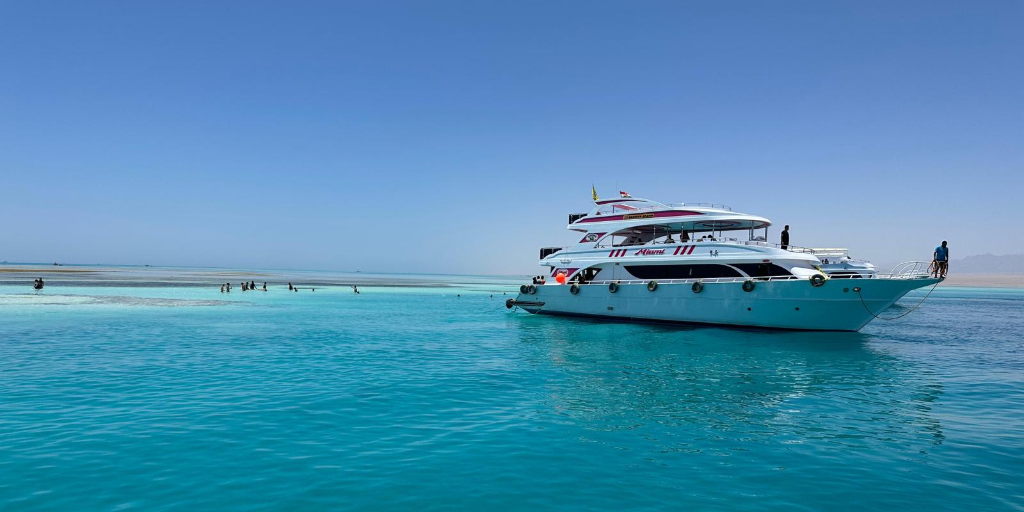
The German Embassy in Cairo announced on Wednesday, 5 June, that the German Tourism Group FT had filed for bankruptcy.
This impacts approximately 60,000 German tourists worldwide, including many families vacationing in Egypt, especially in the Red Sea and Sinai regions.
Egyptian businessman and engineer Samih Sawiris holds the largest shareholder stake in FTI.
The statement by the German Embassy added that German regulations require tour operators like FTI to have bankruptcy insurance. This means the German Travel Insurance Fund (DRSF) will reimburse tourists for all booked hotel and transportation costs included in their package holidays.
The DRSF is already working with Masters Travel Service in Egypt to ensure ongoing trips proceed smoothly. They are also providing hotels and transportation companies with confirmed payment guarantees.
FTI’s primary concern is ensuring ongoing trips are completed as planned. However, trips that have not commenced or are partially completed will likely be cancelled, impacting tens of thousands of travelers.
A recent drop in ticket sales below expectations led to the German government denying further financial assistance, particularly after the strain of the COVID-19 pandemic.
Comment (1)
Cancel reply.
You must be logged in to post a comment.
[…] post German Tour Group FTI Files for Bankruptcy, Disrupting Tours to Egypt first appeared on Egyptian […]
Related Articles

Recommended for you

ICC Seeks Arrest Warrants for Israeli, Hamas Leaders for War Crimes
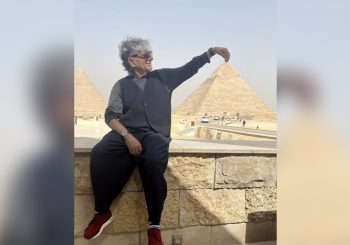
Chopra in Cairo: Wellness Icon Visits Egypt for First Time
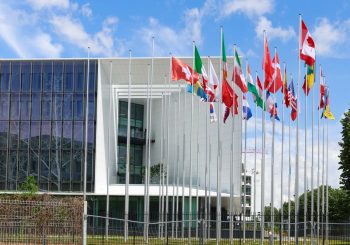
Egypt Joins International Cancer Agency
Travel Stories

Jun 7, 2024 • 8 min read
Cruising down a quiet river, surrounded by scenic views is an ideal way to see Europe. Here are the 10 best places for a European river cruise.

Jun 7, 2024 • 11 min read
Nothing says summer in the USA like heading to the lake. We asked our writers to share their favorite lakes in the country.

Jun 7, 2024 • 12 min read
Look beyond the French capital's most famous sights and you'll discover many free things to do in Paris – and get a local's perspective on the city too.

Jun 7, 2024 • 10 min read
Like any heavily touristed destination, it pays to research before you go. Here's an insider's guide to planning the ultimate trip to Mallorca, Spain.

Jun 7, 2024 • 7 min read
You don’t have to spend a fortune to enjoy the glamour of Nice. Beach-going, people-watching, architecture-viewing and more, all to be enjoyed for free.

Wander through a prehistoric wonderland of colorful rock formations, fossils, and prairies in the Badlands National Park in South Dakota.

Jun 6, 2024 • 6 min read
Shave ice is a summery treat served with colorful syrupy toppings and sold at shave ice shops across the islands of Hawaii. You won't want to miss it.

Jun 6, 2024 • 5 min read
Kona coffee is some of the world’s best, and a trip to the Big Island is incomplete without sampling its premier product.

Jun 6, 2024 • 8 min read
Mallorca’s capital is quickly becoming one of the hottest cities in the Med for food.

Nepal is not expensive, and there’s plenty of value to be had for visitors that follow these budget tips, along with a guide to daily costs.

From glorious stretches of white sand to secluded rocky coves, here are Mallorca's best beaches.

Choose the right time for your visit to Ecuador with this seasonal guide.

Jun 6, 2024 • 7 min read
Beautiful beaches and natural wonderlands drenched in southern charm – Coastal Georgia's islands have something for everyone.

The queen of the French Riviera, Nice drips elegance and panache. Here are some things to know before you arrive to help you fit in with the glitterati.

Jun 5, 2024 • 8 min read
Andean flavors, coastal seafood, Afro-Ecuadorian recipes and Spanish influences converge to create an innovative food-and-drink scene in Ecuador.

Jun 5, 2024 • 7 min read
No matter your hiking ability, Alaska's diverse trails provide plenty of opportunities for recreation.

Plan a summer adventure to Hilton Head, Folly Beach and other South Carolina Sea Islands with this guide.

Jun 5, 2024 • 11 min read
Plan your summer vacation to Wisconsin's Door County with our top tips.

Jun 5, 2024 • 5 min read
Explore Boston by bike with this guide to the city's best off-road routes, its local bike-share program and top safety tips.

Plan your trip to Argentina with this guide to climate, crowds and costs.

Jun 5, 2024 • 10 min read
Whether you're a history buff, a nature lover, or simply seeking relaxation by the sea, Rhode Island will make you glad you came.

Jun 5, 2024 • 17 min read
An expert's guide to flying the world with the boost of points & miles: how to choose the perfect airline credit card.
share this!
April 4, 2024
This article has been reviewed according to Science X's editorial process and policies . Editors have highlighted the following attributes while ensuring the content's credibility:
fact-checked
trusted source
A natural history of the Red Sea and the uncertain future of its corals
by Jerald Pinson, Florida Museum of Natural History
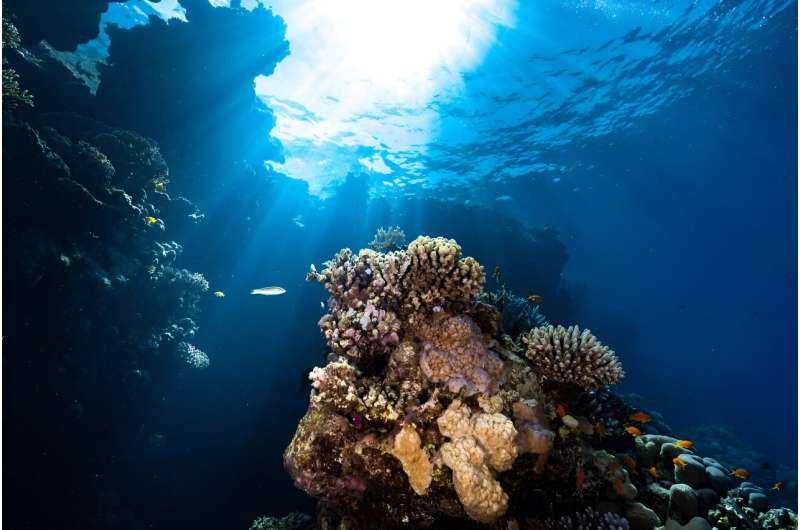
Early in May 2023, a small team of marine biologists arrived in the Saudi Arabian city of Jeddah. They'd flown into the local airport from Guam, the United States, Portugal, Spain and Japan, and they'd soon rendezvous with colleagues from the King Abdullah University of Science and Technology (KAUST), a research university built along the banks of the Red Sea.
It was the sea that brought them here. Coral reefs in the narrow ribbon of water between Arabia and Africa are among the world's most unique. A shallow strait at the mouth of the Red Sea, called the Bab-el-Mandeb—or Gate of Tears—has kept its marine occupants partially isolated for millions of years, leading to high rates of endemism. As much as 14% of the Red Sea's corals, fishes and mollusks can be found nowhere else.
The Red Sea is also home to some of the world's most stunning reefs, and scientists have only a vague idea of what lives inside them.
"Almost everything that you see is corals and fish, but that's just what's on the surface," said Gustav Paulay, curator of invertebrate zoology at the Florida Museum of Natural History. "Most of the diversity is within the reef, but it's difficult to sample."
It's estimated that nearly three-fourths of all species inhabiting coral reefs worldwide have yet to be discovered , but the ongoing threats of climate change, ocean acidification and human development won't wait for scientists to catch up. If global temperatures rise 2% above the preindustrial average within the next century, as predicted by most climate models, 99% of coral reefs will likely disappear .
Paulay made the long trip from Florida to Saudi Arabia to work with Susana Carvalho, a professor at KAUST's Red Sea Research Center, who uses new technology to speed up the process of biodiversity discovery in coral reefs. She takes samples of sediment or water and mixes each, blending together all the itinerant plankton, larvae and suspended tissue particles into a genetic slushy.
Special enzymes pick out the DNA strands, which Carvalho and her team then use to create a roster of all the organisms in a given sample. In the Red Sea and most other marine environments, the final tally contains glaring gaps.
"In most cases, we don't know what species or even what group we're looking at," Carvalho said. "That led us to the idea that we needed to bring in taxonomists that could document what we have and help us improve local reference collections, including DNA reference libraries. This is the only way we can take advantage of the full potential of molecular-based biodiversity assessments in the future."
Paulay had previously worked in the Red Sea and recently concluded extensive reef surveys in the nearby Arabian Sea and Gulf of Oman. Carvalho asked if he'd return for another Red Sea expedition, this one along the northwest corner of Saudi Arabia, where a vast and ambitious development project is currently underway.
So it was that Paulay and his colleagues found themselves packing large duffel bags full of scientific equipment into SUVs at KAUST before setting off on the eight-hour drive up the coast.
The ship they'd chartered to conduct coral reef surveys had two generators, and one of them was broken. Needing both, a third was bolted to the afterdeck, taking up most of the available space where the researchers would soon prepare their specimens.
It also added a significant amount of weight to the ship. This shifted its center of gravity, making it top-heavy and more likely to capsize in turbulent weather. But the waves were calm, and the sky was clear, and soon they were sailing north along the coast toward the Gulf of Aqaba.
The great rift
The Red Sea is a world like no other. Beginning roughly 30 million years ago, a chasm opened between Africa and Arabia as their continental plates split apart . Water from the Indian Ocean spilled into the breach, carrying with it a retinue of primordial fish and invertebrates.
The widening rift down the Red Sea's spine forms an abyssal trench nearly 2 miles deep at its lowest point; at the bottom, a thin patina of sediment and organic debris press down on magma tubes that heat the surrounding water to temperatures in excess of 160°F . Even at a distance from these areas of tectonic activity, the water remains a balmy 68°F at the greatest depths .
"Deep seas are cold-water environments," Paulay said, adding that temperatures hover just above the freezing point of water in most places. "One of the most bizarre aspects of the deep Red Sea is its warmth."
Its shores extend for 1,400 miles, surrounded by deserts on all sides. There are no rivers that flow into the Red Sea, and more than 6 feet of water evaporates from its surface each year. The basin is refilled by the Indian Ocean through the slender Gate of Tears. Its limited connectivity to other bodies of water make the Red Sea a reservoir for salt, which precipitates and sinks to the bottom.
The seafloor is dimpled with salt domes miles thick and brine pools that instantly pickle any organism unlucky enough to fall in. Nearby sulfur chimneys belch thick plumes of super-heated sulfide and metal, covering their surroundings with a dragon's hoard of manganese, gold, silver, zinc and lead worth trillions.
During the Pleistocene epoch, glaciers radiated from the poles and lowered sea level by more than 300 feet. The Red Sea repeatedly shrank and was either partially or entirely cut off from the Indian Ocean. This caused a spike in salt concentration that seems to have killed most corals in the northern half of the sea.
All but a few of the corals currently inhabiting waters around Saudi Arabia and Egypt are likely recent arrivals , moving in when sea levels rose after the last ice age 10,000 years ago. Corals repeatedly sprung up along the entire length of the sea, colonizing and adding to reef platforms created by their predecessors in eons past.
Today, the sea receives few nutrients from land, except in times of flood, making it the last place you might expect to find thriving reef communities. In normal circumstances, a lack of nutrients inhibits the growth of algae, which in turn limits the size of fish and invertebrate populations. Such environments are marine deserts, and they are especially common in the open ocean.
Closer to shore, where water is shallow and light is abundant, many corals form a symbiotic relationship with algae, in which each produces vital nutrients the other needs to survive. The coral hunts using barbed stinging cells; after they've digested their food, the waste is used to fertilize their algal tenants. In return, the algae give their coral host a portion of the sugar produced through photosynthesis.
"Reefs are, in part, a response to low-nutrient conditions," Paulay said. "The symbiosis between coral and algae allows both to be more resilient to a lack of nutrients than either organism would be on their own. The northern end of the Red Sea is at the extreme end of the nutrient spectrum, which means you get vibrant corals and phenomenal water clarity."
The zephyr-blue water periodically burst into a panoply of bright hues as the research vessel glided over shoals and reefs. Oval patch reefs reach up from the ocean floor like pillars. Elsewhere in the vicinity, these living stalagmites are strewn with the wreckage of unwary ships whose hulls they punctured. Avoiding these and other hazards, the research team sampled from 32 locations in an arc more than 60 miles long.
In some ways, Paulay sees himself as an archivist. Species are currently disappearing hundreds to thousands of times faster than the normal background rate of extinction, and with rapid climate change and continued human expansion on the horizon, this trend shows no sign of diminishing.
To Paulay, this continued decline of biodiversity is a near inevitability, and he hopes to create a record of as many species as possible before they are lost. With any luck, the tragedy might even be temporary. If the budding science of de-extinction comes to fruition, future scientists may be able to reconstruct extinct organisms using preserved tissue and DNA, bringing them back to life.
In other scientific corners, human records of extinct animals are already among the only available portals to the past. Recently extinct island birds, like the dodo, are a stark example.
"Everything we know about those birds, other than the skeletons, is dependent on whatever explorers recorded about the animals when they were living," he said. "That's what's happening to so much of the world. Many aspects of life on Earth in the future are going to be known only from notes, imagery, specimens and genetics that are recorded today."
Paulay has created a streamlined, industrial-scale process in which teams collect whole components of an ecosystem, photograph individual specimens, sequence DNA and store everything—including the organism—for future study. The laborious task of describing new species is left for later; instead, organisms of unknown affinity are more expediently labeled as MOTUs—molecular operational taxonomic units.
Using these methods, Paulay and his colleagues have documented as much as 2% of the known diversity of marine invertebrates during seven surveys conducted over a single year.
These assessments of biodiversity are especially important in areas zoned for nearby development. Just a few miles inland from the expedition's midpoint, construction crews were busy digging the foundations for a city unlike anything ever attempted by humans.
The city's design consists of two parallel rows of skyscrapers that rise from the banks of the Red Sea and extend at a right angle 150 miles into the desert. In early plans for the city, the towers are each designed to be 1,600 feet tall, with a small gap less than 700 feet wide in between, crisscrossed by arches above and connected by a subterranean railway system below.
The city, simply called "The Line," is designed to run entirely on renewable energy and will feature short commutes, nature parks and a complete absence of cars.
The monumental project is just one part of a much broader development and stimulus initiative, called Vision 2030, announced by King Salman in 2016. It includes plans for new mountain and island resorts, a floating port city on the Red Sea, revitalization projects in 12 cities across the country, and expansive wind and solar farms to power it all.
Before building in areas near the sea, officials want to have a better idea of what lives inside it. Taking full stock of any reef would be a leviathan task, but it's especially difficult in the Red Sea. Iconic coral formations like the Great Barrier Reef and the Caribbean's network of fringe reefs have historically received the lion's share of scientific attention.
What little is known of the Red Sea's inhabitants often doesn't hold up to scrutiny. What is considered to be one species can turn out to be several, a recurring pattern that Carvalho compared to nesting Matryoshka dolls. "You take one and realize there's another and another," she said.
This aura of uncertainty surrounding the Red Sea's biodiversity has rapidly changed over the last decade.
When KAUST first opened its doors in 2009, it placed a strong emphasis on the assessment of marine biodiversity. The university's Red Sea Research Center attracts faculty and graduate students from around the world and is entirely dedicated to understanding life in the Red Sea and the forces that influence it.
The institute's current director, Michael Berumen, launched a series of survey expeditions in 2012. Paulay and his colleagues participated in seven of these surveys and returned home laden with specimens that are now curated and studied at the Florida Museum of Natural History.
In 2011, the nearby King Abdulaziz University in the port city of Jeddah launched the Red Sea Biodiversity Project in partnership with the Senckenberg Research Institute of Germany. One of the main goals of this project was to establish a museum collection consisting of organisms from the Red Sea. This led to a flurry of new species discoveries and the influx of more marine specialists to the area.
Other institutions and projects have recently followed, including the Reefscape Restoration Initiative launched in 2021, the nascent Global Coral R&D Accelerator Platform Foundation established in 2023, and the forthcoming Marine Life Institute, currently under construction in Triple Bay.
For anyone hoping to unravel the complexity of the Red Sea's reefs, Saudi Arabia is the place to be.
A rainforest amid deserts
The crew members passed low sand dunes and hills punctuated by the occasional palm tree as they made their way north. Calm, turquoise lagoons gently dip away from the banks to the depth of a few feet before curving back up toward the elevated fringe reefs a few miles out. The lagoons and other portions of the backreef are randomly dotted with knolls of coral and miniature patch reefs, like rubble strewn about the base of a mountain range.
Toward the open sea, the reef forms small foothills, with outjutting crags of cauliflower and leaf corals. Small cliffs encrusted with stony coral stop just short of the water's surface, where they're bisected at intervals by sand chutes that fan out onto the seafloor in an alluvial amphitheater of bone, shell and sediment.
On top, the reef flattens into a broad roof pockmarked by fissures, blow holes and fish-sized tunnels. Unable to cope with dry air, the corals here grow a few inches beneath the low tide line, where the reef explodes in a firework display of color and contour.
Organ pipes extend a gaudy bouquet of green polyps above their crimson stems; fire corals weave a latticework of yellow branches sheathed in a fine layer of semi-transparent stinging hairs; and staghorn corals fork into candelabras with white, lance-like tips and stems the color of candlelight. Verdant lawns of algae spread out in all directions, tended by grazing fish and errant sea urchins.
All of this is mere window dressing compared to the inventory of plants and animals that cling to the forereef. The roof terminates in a short slope that juts out into the sea. Past this crest, the reef abruptly plunges dozens of feet into the water, creating a submarine precipice lavishly covered in living coral.
"The reef is a light-driven environment, so everything grows toward the surface. It's like a forest with a canopy," Paulay said. "As a consequence of these two factors, the relief is enormous. There are towering walls and channels that just blow me away. It's a wonderland."
The crest of the forereef receives the brunt of incoming waves, and corals that grow here often consist of crusts or flattened boulders oriented into the swell, parting the onrush of seawater like a fin. There are corals that resemble gramophones, lichens, inverted umbrellas and bonsai trees. Massive clumps of Platygyra are the size and shape of elephant brains, with neon-colored grooves and ridges, while Dendronephthya overshadow the reefscape like cumulonimbus clouds perpetually frozen in the glow of sunset.
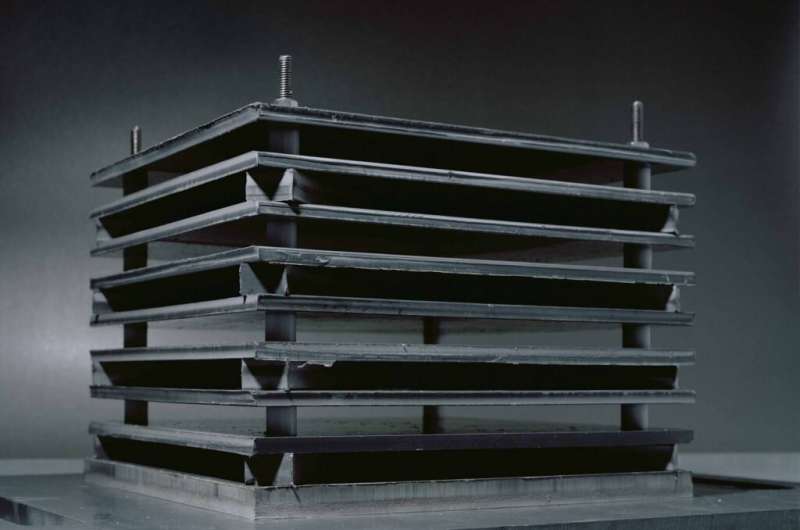
Just above this light show, the research crew aboard the vessel split into two teams. The first would place Autonomous Reef Monitoring Systems at strategic locations along the reefs. Each device consists of PVC plates stacked on top of each other, with a space in between for invertebrates and fish to inhabit. These artificial reefs are later removed after a predetermined amount of time and taken back to the lab, where they can be used to study subtle differences within and between reefs.
The second team collected organisms using bulk sampling techniques as well as methods suited for specific groups of organisms that corresponded with each individual's area of expertise. Topside, Soma Elefánti, a graduate student from the University of Florida, dragged a long, conical net behind the ship to scoop up drifting plankton.
Below, a graduate student from Japan's University of the Ryukyus peered into the hollow spires of sponges to collect the worms that live inside. And Lasley, an expert on crustaceans, sifted through the rock and rubble in search of diminutive crabs. Reef debris of a certain type is more likely to conceal crabs than others, and Lasley surveyed with a discerning eye while noting differences in crab abundance and diversity compared with other places he's worked.
"I've become a sort of connoisseur of reef rocks," he said. "I've been to places in the coral triangle where you can go out on a semi-degraded reef and find a different species of crab roughly every minute. Here you flip 10 rocks, and you might find one species of crab."
Paulay, a jack-of-all-trades, collected a bit of everything while keeping an eye peeled for the giant photosynthetic clams he has a particular fascination with. After returning to the ship, everyone discussed the highlights, showing off one eye-opening specimen after another.
"We all learn from each other, and everybody becomes a better taxonomist, a better biodiversity specialist, by doing these trips," Paulay said in an interview given during the expedition. "I think that's really important. In this day and age, that kind of talent is diminishing."
By the end of the expedition, they had collected no fewer than 6,000 specimens. Most of these will be curated at the Florida Museum of Natural History, where researchers will be able to study them and analyze their DNA. Results from this work will add to the list of known organisms in the Red Sea and make it easier for scientists like Carvalho to continue the process of documenting Red Sea biodiversity by conducting additional surveys and deploying reef-monitoring devices. If reefs continue to decline, the data will also be a crucial yardstick for assessing the severity of damage and a model for healthy reefs in future restoration work.
The world's last reefs
There's a glimmer of hope for Red Sea reefs. Sea surface temperatures in the tropics have increased by 0.72°F to more than 1.8°F over the last several decades. Abnormally warm water is usually a death sentence for corals. In most areas, even a slight increase is enough to push the corals or internal algae beyond their thermal limit, causing the symbiosis to break down. Deprived of their main source of nutrition, the bone-white corals that remain slowly starve to death.
Scientists have observed thousands of such bleaching events since records were first kept in 1963, and the documented rate at which they occur is increasing in lockstep with rising temperatures.
Models predicting the future of coral reefs are grim. According to the Intergovernmental Panel on Climate Change , there may be none left a century from now, with one possible exception. Reefs in the northern Red Sea have been surprisingly resilient to global warming. Whereas most corals cop out at 1.8°F or 3.6°F above average, those in the northern Red Sea can withstand a jump of up to 10.8°F under laboratory settings . As of yet, there's no consensus on whether corals in the real world will have the same level of tolerance, but it does show they're capable of adapting.
The secret of their peculiar resilience lies in the region's tumultuous past. When sea levels rose after the last ice age, the Red Sea again regained a full connection to the Indian Ocean, and corals adapted to those warm, tropical waters dispersed through the Gate of Tears and slowly made their way north. In the Gulf of Aqaba, the descendants of these first coral pioneers now live in cooler waters but are still able to survive temperature spikes that, up to this point, have mirrored the conditions of their former habitats further south.
If nothing is done to mitigate the runaway climate change that's come to define the industrial age, the Red Sea could soon harbor the world's last coral reefs .
Their health will begin to wane long before then, however. Recent research indicates the growth of coral has begun to slow as the water around them heats up. The carbon dioxide primarily responsible for changes in Earth's average temperature also isn't confined to the atmosphere. It percolates into the world's oceans, where it reacts with water and lowers the pH. This makes it harder for corals—and many other marine invertebrates—to obtain the calcium needed to grow their external skeletons.
Ignoring all other risks that threaten corals worldwide, including oil spills, development and overfishing, reefs may ultimately succumb to the ongoing shift in water temperature and nutrient availability. During the summer, the southern half of the Red Sea churns as nutrient-laden water from the Indian Ocean rises to the surfaces and inundates coastal reefs. This influx of nutrients isn't enough to damage the reefs by itself, but when combined with temperature extremes, it can be deadly. According to Carvalho, it's already causing long-term damage in the sea's southern reefs.
"Some of my students and postdocs just came back from a survey 300 kilometers south of Jeddah, where the reefs were hit by a coral bleaching event in 2015 and 2016. We're now well into 2023, and the northern reefs have yet to recover."
Contingency efforts are underway. Researchers have submerged metal platforms in the Red Sea that act as coral nurseries. When a natural reef is damaged or suffers a small bleaching event, corals from these nurseries can be used to fill in the gaps and hasten recovery. Other studies have tested the efficacy of artificial reefs to help bolster the region's biodiversity. KAUST, meanwhile, launched a high-tech restoration program in 2021, with plans to build the world's largest coral nursery facility, capable of producing 400,000 corals a year.
Probiotics are another promising remedy for ailing reefs, and one in which the Red Sea figures prominently. Corals in the northern Red Sea may get their resilience to high temperatures from their photosynthetic partners. If that's the case, it may be possible to impart that same resilience to corals in different areas by administering a probiotic tincture of zooxanthellae sourced from the northern Red Sea. Genetic techniques may additionally be able to boost the thermal tolerance of corals, accomplishing in the span of decades what took millions of years for natural selection to achieve.
But none of these options is guaranteed to work. The best insurance we have for the future, Carvalho said, is protecting what we already have.
"The success associated with restoration efforts is getting better, but it's still challenging at large spatial scales and expensive," she said. "We really need to focus on what we can do to protect these ecosystems and prevent them from becoming degraded in the first place. One critical step is to identify local pressures and alleviate them."
If all else fails, Paulay intends to leave behind a thorough record of what once existed. He and his colleagues have conducted marine survey expeditions in the Middle East, Southeast Asia, Hawaii and coastal Peru, among other places. He already plans to help with future surveys in the Red Sea, where reefs are—for the moment—still thriving.
"We have this window until things deteriorate further to understand," he said. "These kinds of expeditions are about that."
Provided by Florida Museum of Natural History
Explore further
Feedback to editors

Rare 7-foot fish washed ashore on Oregon's coast garners worldwide attention
12 hours ago

California wildfire pollution killed 52,000 in a decade: study
13 hours ago

Quantum chemistry and simulation help characterize coordination complex of elusive element 61

A protein that enables smell in ants—and stops cell death
14 hours ago

Cascadia Subduction Zone, one of Earth's top hazards, comes into sharper focus

New research finds lake under Mars ice cap unlikely

Research team uses CRISPR/Cas9 to alter photosynthesis for the first time

First ever report of two ancient ape species cohabiting in Miocene Europe 11 million years ago

Researchers discover Earth and space share the same turbulence

DNA in the feces of snow leopards shows alpine cats eat plants
Relevant physicsforums posts, how do fetuses breathe in the womb.
11 hours ago
COVID Virus Lives Longer with Higher CO2 In the Air
Jun 7, 2024
Universal wing- and fin-beat frequency scaling
Jun 5, 2024
A DNA Animation
May 29, 2024
Probability, genetic disorder related
May 28, 2024
Looking For Today's DNA Knowledge
May 27, 2024
More from Biology and Medical
Related Stories

Restored coral reefs can grow as fast as healthy reefs after just four years, researchers find
Mar 11, 2024

First reports of severe coral bleaching this summer as the Great Barrier Reef warms up
Feb 23, 2024

Artificial reefs help preserve coral reefs by shifting divers away from the natural ones, says study
Feb 20, 2024

Florida coral reef still struggling after 2023 heat wave
Feb 15, 2024

World's deepest coral calcification rates measured off Hawaiian Islands
Aug 16, 2023

Scientists believe evolution could save coral reefs, if we let it
Sep 22, 2022
Recommended for you

Study adds new sea cucumber species to the research toolbox
15 hours ago

Tree hidey-holes key to helping slow declines of small mammals
18 hours ago

Scientists 'read' the messages in chemical clues left by coral reef inhabitants
Let us know if there is a problem with our content.
Use this form if you have come across a typo, inaccuracy or would like to send an edit request for the content on this page. For general inquiries, please use our contact form . For general feedback, use the public comments section below (please adhere to guidelines ).
Please select the most appropriate category to facilitate processing of your request
Thank you for taking time to provide your feedback to the editors.
Your feedback is important to us. However, we do not guarantee individual replies due to the high volume of messages.
E-mail the story
Your email address is used only to let the recipient know who sent the email. Neither your address nor the recipient's address will be used for any other purpose. The information you enter will appear in your e-mail message and is not retained by Phys.org in any form.
Newsletter sign up
Get weekly and/or daily updates delivered to your inbox. You can unsubscribe at any time and we'll never share your details to third parties.
More information Privacy policy
Donate and enjoy an ad-free experience
We keep our content available to everyone. Consider supporting Science X's mission by getting a premium account.
E-mail newsletter

IMAGES
VIDEO
COMMENTS
Experience a new adventure. The Red Sea is 500km north of Jeddah, between the Saudi towns of AlWajh and Umluj. With its own dedicated Red Sea International airport, the destination is easily accessible to visitors from around the world. And at the crossroads of Europe, Asia, and Africa, 250 million people are just a three-hour flight away.
10. Marsa Alam's Resort Life. 11. Explore Roman-Era Mines at Mons Porphyrites & Mons Claudianus. 12. Discover the Eastern Desert's Rock Inscriptions at Barrameya & Wadi Hammamat. Tips and Tours for a Red Sea Holiday. Map of Things to Do in the Red Sea Region. 1.
Check out the dancing fountain, take a whirl on the ball pit and slides at the Kids' Zone, and snag a souvenir at the…. 4. Sharm El Luli. 5. Hurghada Marina. Starting from June 2008 Hurghada Marina Boulevard has offered Hurghada city a great opportunity to enjoy the sea breeze in a quiet, amazing place.
The 'Red Sea Riviera' is a place of many different attractions. On the one hand, it is famous (or infamous, depending on your view) for cheap package holidays - overdevelopment has pockmarked the coastline deeply, leaving a trail of megaresorts and half-finished hotels in its wake. Alongside these are some exceptional exclusive resorts ...
48. Safaga Cruise Port sits in the small town of Safaga, on the shores of the Red Sea. With few attractions to recommend either the port or the town, Safaga Cruise Port is primarily known as a jumping-off point for getting to the UNESCO World Heritage Site of Luxor, situated some 157 miles (253 kilometers) away. More.
Red Sea Coast. Originally an Ottoman diwan (council chamber), the once grand old police station on Al Quseir's waterfront is now a picturesque but dilapidated shell. Discover the best attractions in Red Sea Coast including Monastery of St Anthony, Monastery of St Paul, and Sha'ab Samadai.
Travel tips for visiting the Red Sea Coast. Apart from the area east of Cairo, the transition from the green Nile Valley to the Rea Sea is abrupt.Suddenly the lush cultivated land gives way to stony wilderness, in which rocks rise up in extraordinary formations, reminiscent of the pyramids and Sphinx, the sand blows and spills, and there is hardly a sign of human life for hundreds of miles.
Many Stores, Restaurants, Bars, Banks, Bowling, Ice Bar, and Singing Fountain. 4. Sharm El Luli. Sharm El Luli really is in Egypt's Deep South, and just one degree from the Tropic of Cancer - currently at…. 5. Hurghada Marina. A very western themed marina and bar/restaurant area in the very heart of Hurghada. 6.
ROYAL Dolphin House With Water Sports - VIP Snorkeling Sea Trip - Hurghada. 347. Spend a Day out on a Deluxe Boat in Hurghada's Incredible Red Sea. Where you can bask in the sun, unwind on the sunbeds, enjoy Hurghada's pleasant climate and stunning scenery, and snorkel with the Red Sea's dolphins! 8 hours.
Red Sea Global is one of the most anticipated and visionary tourism projects in the world. The Red Sea Project covers 90 pristine islands along 200 km of coastline along the beautiful Saudi Red Sea. The project aims to offer 3,000 hotel rooms across 16 luxury hotels by the end of 2024, increasing to 8,000 hotel rooms across 50 hotels and 1,000 residences by 2030.
Overview. The Red Sea is pioneering a brand-new luxury regenerative tourism destination along the west coast of Saudi Arabia. One of the world's last true hidden treasures, The Red Sea is surrounded by the world's fourth-largest barrier reef system and spans over 28,000-square-kilometers with an archipelago of more than 90 untouched islands, pristine beaches, dormant volcanos, sweeping ...
Eilat City Guide - Complete and comprehensive guide to Eilat: hotels, restaurants, attractions, events and much more. Click for more information. Languages. ... Red Sea day trips. Top 10 experiences.
The Red Sea has a long history and is most famously known in the biblical book of Exodus and referred to as "Yam Suph". Dating back to the ancient Egyptians, the Red Sea has been known as an important body of water for trade and expeditions. ... as well as cruise ships promoting tourism in the region. Additionally, the Red Sea is famous for ...
Come and discover the beauty and adventure that awaits you at The Red Sea, a pioneering luxury regenerative tourism destination. Nestled along the west coast of Saudi Arabia, this 28,000 square kilometer paradise is home to an archipelago of over 90 untouched islands, stunning beaches, and a range of natural wonders including dormant volcanoes, desert dunes, and mountain canyons.
Explore the Red Sea Project, a collection of untouched islands surrounded by water. Experience sustainable, world-class dining, adventure and entertainment.
This month Red Sea Global, the multi project developer behind the regenerative tourism projects happening across these vast ethereal swathes of coastline, announced that in a matter of months travellers from across the world will be able to start enjoying some of the world's most imaginative escapes from haute-hotels hewed into rock to luxury ...
Tourism in Red Sea. When you walk on its way, you will find a stunning mountain range along the coast reflecting its color on the Sea. The coast extending from the Suez Gulf to the Sudanese borders, it is the Red Sea Governorate that displays all kinds of marine life and desert environment. It is considered the gateway to Egypt and one of the ...
5. Hurghada Marina. 4,107. Marinas. Admission tickets from £42. Starting from June 2008 Hurghada Marina Boulevard has offered Hurghada city a great opportunity to enjoy the sea breeze in a quiet, amazing place. Hurghada Marina Boulevard offers you a different …. See ways to experience (234) 2023.
Fast track to 2023. The first hotels - the St. Regis Red Sea Resort, Nujuma Ritz Carlton Reserve, and Six Senses Southern Dunes - have been built, the destination's dedicated airport is ...
Red Sea Global. Welcome to Red Sea Global (RSG), where luxury, sustainability, and innovation converge to redefine how development is done. We are spearheading new development and tourism models, putting people and planet first to deliver projects that actively enhance the well-being of customers, communities, and environments.
Tourist boats routinely drop anchor directly on the corals, and that can destroy more than 20 square feet of coral each time. ... In Hurghada, another Red Sea resort across the Gulf of Suez from ...
The Red Sea is a sea inlet of the Indian Ocean, lying between Africa and Asia. Its connection to the ocean is in the south, through the Bab-el-Mandeb strait and the Gulf of Aden. To its north lie the Sinai Peninsula, the Gulf of Aqaba, and the Gulf of Suez (leading to the Suez Canal ). It is underlain by the Red Sea Rift, which is part of the ...
The Red Sea, one of the Kingdom of Saudi Arabia's luxury regenerative tourism destinations on the west coast of the country, is surrounded by the world's fourth-largest barrier reef system with an archipelago of more than 90 untouched islands. From this enchanting setting, guests can embark on extraordinary snorkelling and scuba diving ...
The project is overseen by the Red Sea Global Company (RSG) which was founded in 2018 as a closed joint-stock company fully owned by the Public Investment Fund (PIF). Valued at $17 billion, this tourism-focused masterplan spans approximately 28,000 square kilometers, including multiple sub-regions.
The German Embassy in Cairo announced on Wednesday, 5 June, that the German Tourism Group FT had filed for bankruptcy. This impacts approximately 60,000 German tourists worldwide, including many families vacationing in Egypt, especially in the Red Sea and Sinai regions. Egyptian businessman and engineer Samih Sawiris holds the largest shareholder stake in FTI.
How to plan your summer vacation to South Carolina's Sea Islands. Jun 5, 2024 • 8 min read. Plan a summer adventure to Hilton Head, Folly Beach and other South Carolina Sea Islands with this guide.
The Red Sea was created by a rift zone between Africa and Arabia, resulting in steep underwater cliffs of coral close to shore. Credit: Morgan Bennett-Smith
The Navy destroyer Carney returns home following a deployment in support of maritime security operations in the Middle East where the warship fought against a campaign of attacks from the Houthi ...